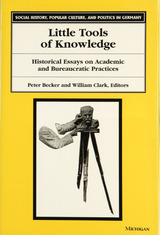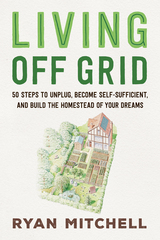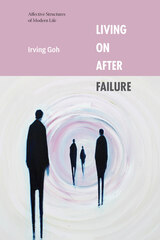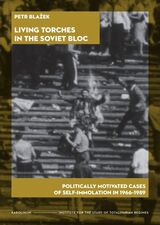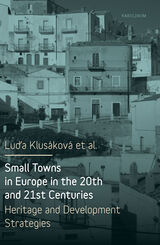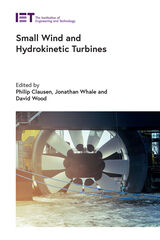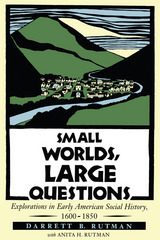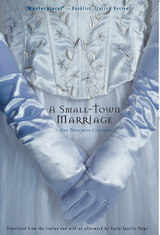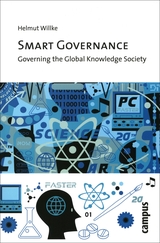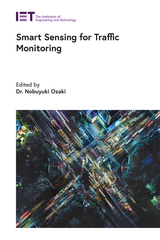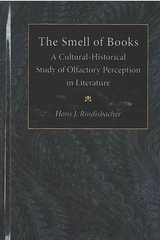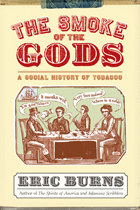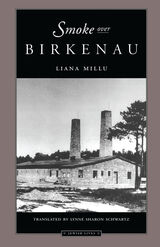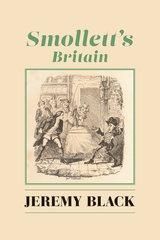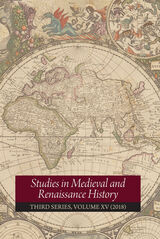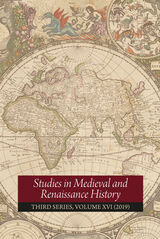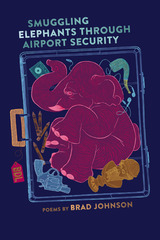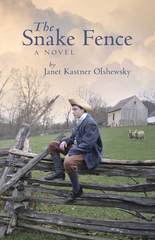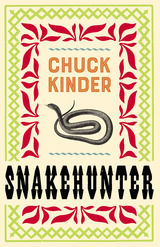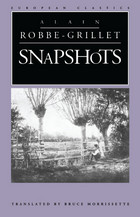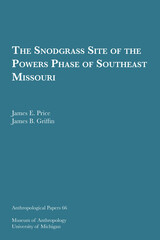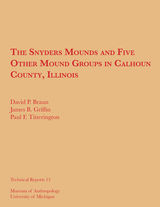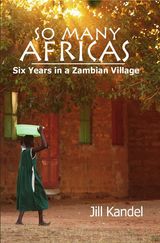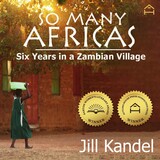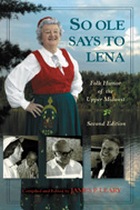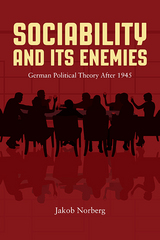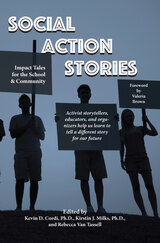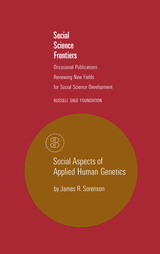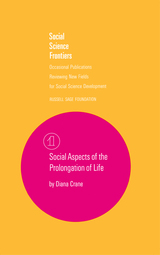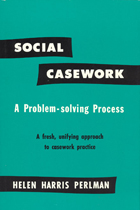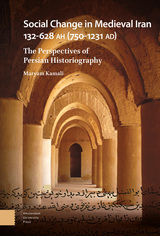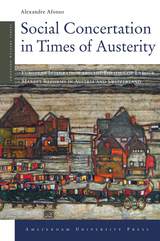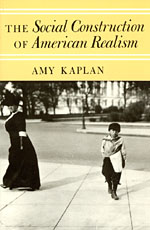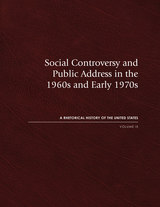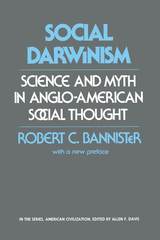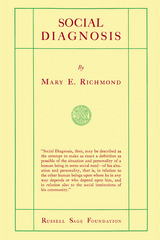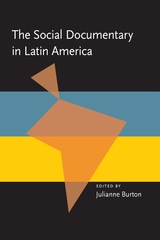 Small Town in Mass Society: Class, Power, and Religion in a Rural Community (rev. ed.)
Arthur J. Vidich and Joseph BensmanForeword by Michael W. Hughey
University of Illinois Press, 2000 First published in 1958, Small Town in Mass Society set community studies on a new course by placing the small town within the framework of large-scale, bureaucratic mass society. Drawing attention to the dynamics of class and ethnicity in relation to economics and politics, this landmark work was among the first to document the consequences of centralized administration on life in American communities.
Through a close study of "Springdale, New York," Arthur J. Vidich and Joseph Bensman depict the small town as continuously and increasingly drawn into the central institutions and processes of the total society. Vidich and Bensman based their conclusions on extensive interviews with and close observation of the inhabitants of one community. The original publication of the book caused a sharp response among the town's citizens who felt their trust had been violated and their town misrepresented.
The present volume includes the editorials and correspondence evoked by that controversy, the authors' articles describing their methodology, a new foreword by Michael W. Hughey, and a new afterword in which Arthur J. Vidich recounts the creation and history of the book.
Small Towns in Europe in the 20th and 21st Centuries: Heritage and Development Strategies
Lud'a Klusáková et al.
Karolinum Press, 2017 Always in the shadow of their more famous urban neighbors, small towns are consistently overlooked in historical research, especially in Europe. This book investigates the ramifications of that tendency for development initiatives. Paying particular attention to the marketability of towns’ cultural heritage and of the diverse ways local culture has been influenced by national and regional history, an international team of urban historians, sociologists, and historians of art and architecture present case studies of towns in England, Spain, Portugal, Greece, the Czech Republic, and Russia to explore new methods for motivating development and renewal.
 Small Wars: Low-Intensity Threats and the American Response since Vietnam
Michael Gambone
University of Tennessee Press “Small Wars is unique in its complexity and breadth. This book would be of great interest to both military and diplomatic historians, and those that teach Recent America.” —Nancy Gentile Ford, author of Issues of War and Peace
Today, conventional fighting waged by massed, industrial armies is nearly extinct as a viable means of warfare, replaced by a broad and diverse array of conflicts that consume the modern American military. Fought in sprawling urban areas of the underdeveloped world or in desolate border regions where ethnicity and tradition reign, these “small wars” involve a vast and intricate network of operations dedicated to attacking the cultural, political, financial, and military layers that surround America’s new enemies. In this intriguing study, Michael Gambone explores America’s approach to small wars since Vietnam, providing a fascinating analysis of the basic goals, missions, conduct, and consequences of modern American conflict.
Going beyond a simple comparison of Vietnam to the current wars in Afghanistan and Iraq, Gambone thoroughly tracks the continuous evolution of U.S. intervention between these events, revealing a dramatic shift in the role of the American military to covert operations that require fluidity, creativity, and ingenuity. He examines in detail the many different forms of military intervention that America has taken in the last forty years, including actions in Central America in the 1980s, the first Gulf War, airstrikes in Kosovo in the 1990s, and the war on terror, as well as the Iran-Contra affair, the drug war in Columbia, and the role of private military contractors such as Blackwater. After the Cold War, Gambone shows, American military missions served a wide variety of tasks—peacekeeping, humanitarian assistance, counterterrorism—that significantly departed from conventional missions, a trend that continued and expanded after 9/11.
By exploring the history and assessing the effectiveness of the small wars fought since Vietnam, Gambone reveals the importance of these smaller actions in modern military planning and operations and clearly traces the development of American warfare from the massive military machine of World War II into a complex hybrid of traditional and innovative techniques.
MICHAEL GAMBONE, a professor of history at Kutztown University in Pennsylvania, is the author of The Greatest Generation Comes Home: The Veteran in American Society and editor of Documents of American Diplomacy: From the American Revolution to the Present.
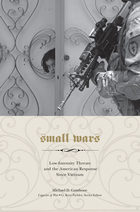 Small Wars: Low-Intensity Threats and the American Response since Vietnam
Michael Gambone
University of Tennessee Press, 2013 “Small Wars is unique in its complexity and breadth. This book would be of great interest to both military and diplomatic historians, and those that teach Recent America.” —Nancy Gentile Ford, author of Issues of War and Peace
Today, conventional fighting waged by massed, industrial armies is nearly extinct as a viable means of warfare, replaced by a broad and diverse array of conflicts that consume the modern American military. Fought in sprawling urban areas of the underdeveloped world or in desolate border regions where ethnicity and tradition reign, these “small wars” involve a vast and intricate network of operations dedicated to attacking the cultural, political, financial, and military layers that surround America’s new enemies. In this intriguing study, Michael Gambone explores America’s approach to small wars since Vietnam, providing a fascinating analysis of the basic goals, missions, conduct, and consequences of modern American conflict.
Going beyond a simple comparison of Vietnam to the current wars in Afghanistan and Iraq, Gambone thoroughly tracks the continuous evolution of U.S. intervention between these events, revealing a dramatic shift in the role of the American military to covert operations that require fluidity, creativity, and ingenuity. He examines in detail the many different forms of military intervention that America has taken in the last forty years, including actions in Central America in the 1980s, the first Gulf War, airstrikes in Kosovo in the 1990s, and the war on terror, as well as the Iran-Contra affair, the drug war in Columbia, and the role of private military contractors such as Blackwater. After the Cold War, Gambone shows, American military missions served a wide variety of tasks—peacekeeping, humanitarian assistance, counterterrorism—that significantly departed from conventional missions, a trend that continued and expanded after 9/11.
By exploring the history and assessing the effectiveness of the small wars fought since Vietnam, Gambone reveals the importance of these smaller actions in modern military planning and operations and clearly traces the development of American warfare from the massive military machine of World War II into a complex hybrid of traditional and innovative techniques.
MICHAEL GAMBONE, a professor of history at Kutztown University in Pennsylvania, is the author of The Greatest Generation Comes Home: The Veteran in American Society and editor of Documents of American Diplomacy: From the American Revolution to the Present.
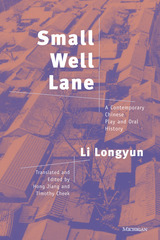 Small Well Lane: A Contemporary Chinese Play and Oral History
Li Longyun
University of Michigan Press, 2002 Li Longyun's five-act play, Small Well Lane (Xiaojing hutong), is a spoken drama published in Beijing in 1981. With a cast of nearly thirty characters of different social roles and individual persona, the play provides a vivid sense of how a group of working class Beijing residents living in a courtyard compound in a back alley, or hutong, named "Small Well Lane" experienced China's revolution from 1949 to 1980. It beautifully records the art of talking and living among Beijing back alley folk and provides a vivid contrast to the concerns and lives of China's elites.
This authoritative translation by Hong Jiang and Timothy Cheek is accompanied by notes and annotations to help readers not familiar with China's modern history. A special appendix and ten photographs bring to life the culture of Beijing's famous back alleys.
This edition of Small Well Lane provides readers, and especially students of modern Chinese history, politics, and literature, with a compelling story of the human experience of Mao's revolution in China. It will be of interest to students of modern China and specialists in Chinese history and literature as well as to the general reader.
Li Longyun is a professional playwright working at the Beijing People's Art Theater. Hong Jiang is Assistant Professor of Chinese Language and Literature, Colorado College. Timothy Cheek is Associate Professor of History, Colorado College.
Small Wind and Hydrokinetic Turbines
Philip Clausen
The Institution of Engineering and Technology, 2022 There is huge potential for smaller wind turbines to provide clean energy around the world. Small wind turbines come in a variety of designs, and have similarities in principles and technology to small hydrokinetic turbines (SHKTs). SHKTs, in turn, can play an important role in hydropower. Small wind and hydrokinetic systems can even work together, for example, to power farms, communities, campuses, rural as well as remote rural areas, and island regions.
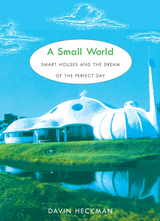 A Small World: Smart Houses and the Dream of the Perfect Day
Davin Heckman
Duke University Press, 2007 Conceived in the 1960s, Walt Disney’s original plans for his Experimental Prototype Community of Tomorrow (EPCOT) outlined a utopian laboratory for domestic technology, where families would live, work, and play in an integrated environment. Like many of his contemporaries, Disney imagined homes that would attend to their inhabitants’ every need, and he regarded the home as a site of unending technological progress. This fixation on “space-age” technology, with its promise of domestic bliss, marked an important mid-twentieth-century shift in understandings of the American home. In A Small World, Davin Heckman considers how domestic technologies that free people to enjoy leisure time in the home have come to be understood as necessary parts of everyday life. Heckman’s narrative stretches from the early-twentieth-century introduction into the home of electric appliances and industrial time-management techniques, through the postwar advent of television and the space-age “house of tomorrow,” to the contemporary automated, networked “smart home.” He considers all these developments in relation to lifestyle and consumer narratives. Building on the tension between agency and control within the walls of homes designed to anticipate and fulfill desires, Heckman engages debates about lifestyle, posthumanism, and rights under the destabilizing influences of consumer technologies, and he considers the utopian and dystopian potential of new media forms. Heckman argues that the achievement of an environment completely attuned to its inhabitants’ specific wants and needs—what he calls the “Perfect Day”—institutionalizes everyday life as the ultimate consumer practice.
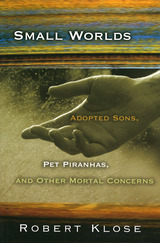 Small Worlds: Adopted Sons, Pet Piranhas, and Other Mortal Concerns
Robert Klose
University of Missouri Press, 2006 For twenty years, readers of The Christian Science Monitor have enjoyed the musings of a singular writer who has brought his talent to bear on a wide range of human-interest subjects. Robert Klose has attracted fans from all walks of life, from physicians to farmers to teachers, and his unique insights on life are seasoned with gentle, often laugh-out-loud humor. The cream of Klose’s columns has now been gathered in this delightful book culled largely from the more than 250 pieces written for the Monitor. Small Worlds captures his graceful prose and engaging voice in brief essays whose subjects range from the joys of small-town hardware stores and Converse sneakers to the challenges of learning a foreign language or traveling abroad. In these pieces, readers will find themselves in the company of a wordsmith who is warm, funny, and smart—a man passionate about many subjects. Within these pages are memorable stories about Klose’s life: his childhood pet piranha, his love of the clarinet, his attempts to learn Polish. He shares touching moments of his experience raising adoptive sons, from his first encounter with Alyosha in a Russian orphanage—a bond sealed with a Pez dispenser—to learning to counsel six-year-old Anton about puppy love. Klose also depicts his life in Maine, where pursuit of warmth is a prime occupation and culture is best defined by a deserted Downeast beach or a pick-your-own strawberry farm. In addition to this breadth of subject matter, the wide range of forms in which Klose writes—social and cultural commentary, travel writing, humor, and more—makes these essays excellent examples for fledgling writers. Whether poignantly reflecting on the parent-child relationship or nostalgically recollecting the old-fashioned ice cream soda, Robert Klose is a writer whose voice rings true and is sure to appeal to fans of other humorists like Garrison Keillor or Jean Shepherd. Small Worlds is a deft blending of wisdom and whimsy, a celebration of the art of the essay that lovers of fine writing will take to their hearts.
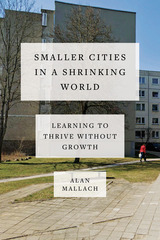 Smaller Cities in a Shrinking World: Learning to Thrive Without Growth
Alan Mallach
Island Press, 2023 Over the past hundred years, the global motto has been “more, more, more” in terms of growth – of population, of the built environment, of human and financial capital, and of all manner of worldly goods. This was the reality as the world population boomed during the 1960s and 1970s. But reality is changing in front of our eyes. Growth is already slowing down, and according to the most sophisticated demographers, the earth’s population will begin to decline not hundreds of years from now, but within the lifetimes of many of the people now living on the planet.
In Smaller Cities in a Shrinking World, urban policy expert Alan Mallach seeks to understand how declining population and economic growth, coupled with the other forces that will influence their fates, particularly climate change, will affect the world’s cities over the coming decades. What will it mean to have a world full of shrinking cities? Does it mean that they are doomed to decline in more ways than simply population numbers, or can we uncouple population decline from economic decay, abandoned buildings and impoverishment?
Mallach has spent much of the last thirty or more years working in, looking at, thinking, and writing about shrinking cities—from Trenton, New Jersey, where he was director of housing and economic development, to other American cities like Detroit, Flint, and St. Louis, and from there to cities in Japan and Central and Eastern Europe. He has woven together his experience, research, and analysis in this fascinating, realistic yet hopeful look at how smaller, shrinking cities can thrive, despite the daunting challenges they face.
 The Smaller Majority
Piotr Naskrecki
Harvard University Press, 2005 Smaller, on average, than a human finger, creatures climbing, scampering, and flying out of sight make up 99 percent of all animal life visible to the naked eye. This is the “smaller majority” that we meet eye-to-eye, often for the first time and certainly as never before, in Piotr Naskrecki’s spectacular book. A large-format volume of over 400 exquisite, full-color photographs, some depicting animals never before captured with a camera, The Smaller Majority takes us on a visual journey into the remote world of organisms that, however little known, overlooked, or even reviled, are critical to the biodiversity of the tropics, and to the life of our planet.Here are the species who truly dominate the tropics, both in terms of their diversity and the ecological functions they play: invertebrates such as insects, arachnids, or flatworms, but also little-known vertebrates such as the pygmy chameleons of Madagascar or legless, underground frog kin known as caecilians; here is behavior never before documented, as in katydids preying upon one another, photographed in places few have visited. Using pioneering camera techniques that allow us to see the world of these creatures from their point of view, the book exposes the environment in which they live, the threats they face, and the devastating impact their disappearance may have. A unique introduction to the marvelous variety of the overlooked life under our feet, Naskrecki’s book returns us to a child’s sense of wonder with a fully informed, deeply felt understanding of the importance of so much of the world’s smaller, teeming life.
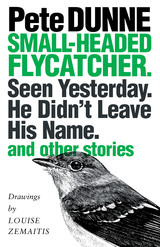 Small-headed Flycatcher. Seen Yesterday. He Didn’t Leave His Name.: and other stories
By Pete Dunne
University of Texas Press, 1998 Pete Dunne has been watching birds since he was seven years old. But not just watching-deeply absorbing every nuance of color, markings, shape, flight, and song; all the subtle clues that can identify a bird barely glimpsed among the highest branches in fading twilight. With the same skill, he has been observing and writing about birding and birders for over twenty years, using humor, sentiment, occasional sarcasm, and unashamed passion for his chosen profession to explore why birdwatching is so irresistibly compelling to so many people. This book brings together thirty-two vintage essays that Dunne originally wrote for publications such as American Birds, Bird Watcher's Digest, Birder's World, Birding, Living Bird, the New Jersey edition of the Sunday New York Times, WildBird, and Wild Bird News. Encounters with birds rare and common is their shared theme, through which Dunne weaves stories of his family and friends, reflections on the cycles of nature, and portraits of unforgettable birders whose paths have crossed his, ranging from Roger Tory Peterson to a life-battered friend who finds solace in birding. A cliff-hanger story of the bird that got away gives this book its title.
 Small-Town Heroes: Images of Minor League Baseball
Hank Davis
University of Iowa Press, 1997 For many baseball fans, a major league game is a flickering image on a television screen or a story in a newspaper. Real baseball is played in their hometown, in a ballpark that seats 5,000 fans, not 50,000. The players wear uniforms like the ones seen on television, but their names are not household words—unless it happens to be summer and you are living in Bluefield, West Virginia, or Cedar Rapids, Iowa, or Batavia, New York. In 1993, ex-New Yorker Hank Davis put a successful career in psychology and music journalism on hold and went off on a loving odyssey through twenty-eight host towns in search of minor league baseball. Writing with beguiling charm and a firm knowledge of the game, he traveled the back roads of small-town Canada and America and found more than he bargained for: a wondrous cast of characters on the field, in the stands, and on the way to the ballpark. Davis recorded them with his splendid, incisive prose and his remarkable photographs. Along the way he encountered not only the baseball stars of the future, like Derek Jeter, Terrell Wade, and Tim Crabtree, but also a host of fascinating unknowns and longshots. They, too, have stories to tell that will not appear on the stat sheets. With infectious energy, Davis also looked beyond the players. There are coaches, men in their forties and beyond, making arduous bus trips with players half their age. There are assistant general managers happy to scrub toilets and paint dugouts just to be close to the game. Kids sell Cracker Jacks in Bluefield, and grown-ups operate the mechanical bull at Durham Athletic Park. Davis finds the small-town setting a universe unto itself. Within it, minor league baseball is lost in a time warp. Unabashedly unsophisticated, it has all the quirky charm of a traveling carnival—full of hawkers and gawkers and the unaffected simplicity of a concert in the park on a hot July night. Davis' full account of his baseball journey is rich with detail inside and outside the ballpark.
A Small-Town Marriage
La Marchesa Colombi, translated from the Italian by Paula Spurlin Paige
Northwestern University Press, 2002 "This 1885 novella, which reappeared in 1973 under the editorship of the late Italo Calvino, was the most celebrated work of a pseudonymous Italian writer who may remind contemporary readers of an edgier, funnier George Sand . . . A trailblazing work, in its way, and a most welcome rediscovery." —Kirkus Reviews
Denza Dellara is a clumsy Cinderella too big for her hand-me-downs, saddled with a family that frustrates her hopes, and in love with a gargantuan Prince Charming who woos and then betrays her. An engaging Frog Prince appears, and though he has an enormous wart on his forehead, he can end her daydreaming and save her from impending spinsterhood . . . if she lets him.
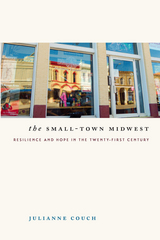 The Small-Town Midwest: Resilience and Hope in the Twenty-First Century
Julianne Couch
University of Iowa Press, 2016 Most people in the United States live in urban areas; still, there are nearly fifty million people living in small towns of just a few thousand people or less. Some towns are within a short drive of a metropolitan area where people can work, shop, or go to school; some are an hour or more from any sort of urban hub. In this book, Julianne Couch sets out to illuminate the lives and hopes of these small-town residents.
The people featured live—by choice or circumstances—in one of nine small communities in five states in the Midwest and Great Plains: Iowa, Kansas, Missouri, Nebraska, and Wyoming. Daily they witness people moving out, heading to more urban areas, small businesses closing down, connected infrastructure drying up, entrepreneurs becoming discouraged, and more people thinking about leaving. This is the story we hear in the news, the story told by abandoned farms, consolidated schools, and boarded-up Main Streets.
But it’s not the whole story. As Couch found in her travels throughout the Midwest, many people long to return to these towns, places where they may have deep family roots or where they can enjoy short commutes, familiar neighbors, and proximity to rural and wild places. And many of the residents of small midwestern towns are not just accepting the trend toward urbanization with a sigh. They are betting that the tide of rural population loss can’t go out forever, and they’re backing those bets with creatively repurposed schools, entrepreneurial innovation, and community commitment. From Bellevue, Iowa, to Centennial, Wyoming, the region’s small-town residents remain both hopeful and resilient.
Small-Town Values, Big-City Vowels: A Study of the Northern Cities Shift in Michigan, Volume 75
Matthew J. Gordon
Duke University Press PADS #84
This book presents a sociolinguistic study of the Northern Cities Shift, a complex pattern of vowel changes heard across the traditional Inland North dialect region of the United States. The study reports on how residents of small towns are reacting to these changes, which are associated with urban speech. Utilizing both quantitative and qualitative evidence, the author offers a richly detailed account of the sociolinguistic distribution of the changes in the communities investigated. This work sheds new light on this important pattern of change as well as on the processes involved in the diffusion of language change in general.
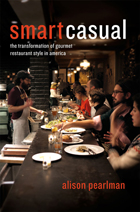 Smart Casual: The Transformation of Gourmet Restaurant Style in America
Alison Pearlman
University of Chicago Press, 2013 Fine dining and the accolades of Michelin stars once meant chandeliers, white tablecloths, and suited waiters with elegant accents. The stuffy attitude and often scant portions were the punchlines of sitcom jokes—it was unthinkable that a gourmet chef would stoop to plate a burger or a taco in his kitchen. And yet today many of us will queue up for a seat at a loud, crowded noodle bar or eagerly seek out that farm-to-table restaurant where not only the burgers and fries are organic but the ketchup is homemade—but it’s not just us: the critics will be there too, ready to award distinction. Haute has blurred with homey cuisine in the last few decades, but how did this radical change happen, and what does it say about current attitudes toward taste? Here with the answers is food writer Alison Pearlman. In Smart Casual: The Transformation of Gourmet Restaurant Style in America, Pearlman investigates what she identifies as the increasing informality in the design of contemporary American restaurants. By design, Pearlman does not just mean architecture. Her argument is more expansive—she is as interested in the style and presentation of food, the business plan, and the marketing of chefs as she is in the restaurant’s floor plan or menu design. Pearlman takes us hungrily inside the kitchens and dining rooms of restaurants coast to coast—from David Chang’s Momofuku noodle bar in New York to the seasonal, French-inspired cuisine of Alice Waters and Thomas Keller in California to the deconstructed comfort food of Homaro Cantu’s Moto in Chicago—to explore the different forms and flavors this casualization is taking. Smart Casual examines the assumed correlation between taste and social status, and argues that recent upsets to these distinctions have given rise to a new idea of sophistication, one that champions the omnivorous. The boundaries between high and low have been made flexible due to our desire to eat everything, try everything, and do so in a convivial setting. Through lively on-the-scene observation and interviews with major players and chefs, Smart Casual will transport readers to restaurants around the country to learn the secrets to their success and popularity. It is certain to give foodies and restaurant-goers something delectable to chew on.
 Smart Cities for Inclusive Innovation: Concepts, technologies and solutions
George Cristian Lazaroiu
The Institution of Engineering and Technology, 2025 Cities that promote inclusion not only ensure greater opportunities for their citizens but often reap large economic benefits. In recent years, smart cities have exploited and used technologies to guarantee a better quality of services and to predictively analyse and provide responses to urban changes in a proactive way. However, it has become clear that some initiatives have made existing inequalities stronger by failing to address the needs of all citizens. Today, more than ever, it is necessary to address inclusiveness in smart cities from the ground up. Sustainable solutions and energy efficient methods have led to cleaner energy, pollution reduction, improvements in the life of citizens, and transformed environments and regulatory structures to be more inclusive. This is creating smarter cities where citizens, inclusivity and sustainability are at the core.
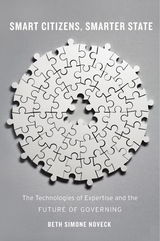 Smart Citizens, Smarter State: The Technologies of Expertise and the Future of Governing
Beth Simone Noveck
Harvard University Press, 2015 Government “of the people, by the people, for the people” expresses an ideal that resonates in all democracies. Yet poll after poll reveals deep distrust of institutions that seem to have left “the people” out of the governing equation. Government bureaucracies that are supposed to solve critical problems on their own are a troublesome outgrowth of the professionalization of public life in the industrial age. They are especially ill-suited to confronting today’s complex challenges.
Offering a far-reaching program for innovation, Smart Citizens, Smarter State suggests that public decisionmaking could be more effective and legitimate if government were smarter—if our institutions knew how to use technology to leverage citizens’ expertise. Just as individuals use only part of their brainpower to solve most problems, governing institutions make far too little use of the skills and experience of those inside and outside of government with scientific credentials, practical skills, and ground-level street smarts. New tools—what Beth Simone Noveck calls technologies of expertise—are making it possible to match the supply of citizen expertise to the demand for it in government.
Drawing on a wide range of academic disciplines and practical examples from her work as an adviser to governments on institutional innovation, Noveck explores how to create more open and collaborative institutions. In so doing, she puts forward a profound new vision for participatory democracy rooted not in the paltry act of occasional voting or the serendipity of crowdsourcing but in people’s knowledge and know-how.
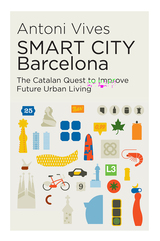 SMART CITY Barcelona: The Catalan Quest to Improve Future Urban Living
Antoni Vives
Sussex Academic Press, 2022 Barcelona's transformation into the world's leading smart city is explained by one of its chief protagonists. SMART CITY Barcelona provides an essential guide for innovation and leadership for all those who participate in the design of cities in the 21st century. The Barcelona municipality is a driving force in the creation of city employment, well-being and opportunity. What can the world learn from the Barcelona model? What should municipal governments' priorities be when committing to this development model? What are smart cities and what are they not? Why do they generate so much controversy? Based on the author's experience as deputy mayor of urbanism, housing, infrastructures, environment, energy, ICT, and innovation in Barcelona City Council, as well as a consultant and lecturer to cities across the world (Singapore, Ho Chi Minh City, Mumbai, Delhi, Pune, Doha, Dubai, Oslo, Prague, Moscow and Bogota, to name a few), SMART CITY Barcelona presents twelve theoretical and practical lessons for all citizens, civil servants, politicians, architects, city planners and businessmen who wish to contribute to the design of 21st century cities. The urban development vision to integrate information and communication technology (ICT) and internet of things (IoT) technology in a way that makes best use of the resources and human assets peculiar to a city has attracted popular attention and social media comment as people view this new vision as the promotion of the artistic, spiritual and political life of the city they live in. *** "Both in politics and in private practice, Antoni Vives has devoted himself with a passionate commitment to dealing with the central questions of urbanisation in the twenty-first century. He sees how the need to make cities easier places to live - whether in terms of transport, housing, health care, recreational spaces and the key issue that underlies all others, funding - is a social as much as a logistical problem. Toni has campaigned against the reduction of cities to amorphous conglomerations in which citizens are merely cogs in the overall economy. Instead, building on his own experience in Barcelona, he has recognized the central importance of maintaining, but also connecting, small neighbourhoods with a real sense of community. --From the Series Preface by Paul Preston, London School of Economics (Series: The Canada Blanch / Sussex Academic Studies on Contemporary Spain) [Subject: Sociology, Urban Studies, Architecture, Energy Studies, Spanish Studies]
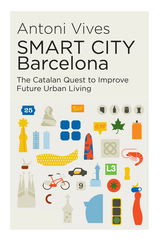 SMART CITY Barcelona: The Catalan Quest to Improve Future Urban Living
Antoni Vives
Sussex Academic Press, 2022 Barcelona's transformation into the world's leading smart city is explained by one of its chief protagonists. SMART CITY Barcelona provides an essential guide for innovation and leadership for all those who participate in the design of cities in the 21st century. The Barcelona municipality is a driving force in the creation of city employment, well-being and opportunity. What can the world learn from the Barcelona model? What should municipal governments' priorities be when committing to this development model? What are smart cities and what are they not? Why do they generate so much controversy? Based on the author's experience as deputy mayor of urbanism, housing, infrastructures, environment, energy, ICT, and innovation in Barcelona City Council, as well as a consultant and lecturer to cities across the world (Singapore, Ho Chi Minh City, Mumbai, Delhi, Pune, Doha, Dubai, Oslo, Prague, Moscow and Bogota, to name a few), SMART CITY Barcelona presents twelve theoretical and practical lessons for all citizens, civil servants, politicians, architects, city planners and businessmen who wish to contribute to the design of 21st century cities. The urban development vision to integrate information and communication technology (ICT) and internet of things (IoT) technology in a way that makes best use of the resources and human assets peculiar to a city has attracted popular attention and social media comment as people view this new vision as the promotion of the artistic, spiritual and political life of the city they live in. *** "Both in politics and in private practice, Antoni Vives has devoted himself with a passionate commitment to dealing with the central questions of urbanisation in the twenty-first century. He sees how the need to make cities easier places to live - whether in terms of transport, housing, health care, recreational spaces and the key issue that underlies all others, funding - is a social as much as a logistical problem. Toni has campaigned against the reduction of cities to amorphous conglomerations in which citizens are merely cogs in the overall economy. Instead, building on his own experience in Barcelona, he has recognized the central importance of maintaining, but also connecting, small neighbourhoods with a real sense of community. --From the Series Preface by Paul Preston, London School of Economics (Series: The Canada Blanch / Sussex Academic Studies on Contemporary Spain) [Subject: Sociology, Urban Studies, Architecture, Energy Studies, Spanish Studies]
Smart Governance: Governing the Global Knowledge Society
Helmut Willke
Campus Verlag, 2007 In the wake of globalization, national governments are becoming increasingly interdependent, and knowledge is arguably becoming the most valuable form of capital. Helmut Willke’s Smart Governance offers a new perspective on global governance from the vantage point of a global knowledge society. Employing a case study of the global financial system and an analysis of several governance regimes, Willke contends that markets, legal systems, and morality must evolve to cope with uncertainty, build capacities, and achieve resilience. Smart Governance will change the way economists, historians, and political scientists view international cooperation.
Smart Health Technologies for the COVID-19 Pandemic: Internet of medical things perspectives
Chinmay Chakraborty
The Institution of Engineering and Technology, 2022 Smart Health Technologies for the COVID-19 Pandemic: Internet of medical things perspectives looks at the role technology has played to monitor, map and fight the global COVID-19 pandemic. Chapters outline risk assessment methodologies and social distancing and infection control technologies in the face of this disease outbreak.
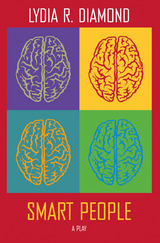 Smart People: A Play
Lydia R. Diamond
Northwestern University Press, 2017 In Smart People, Lydia R. Diamond shows that no matter how well we think we understand the influence of race on human interaction, it still manages to get in the way of genuine communication and connection. This funny and thought-provoking play gives us four characters all associated with Harvard: a young African American actress cleaning houses and doing odd jobs to pay the bills until her recently earned M.F.A. starts to pay off; a Chinese and Japanese American psychology professor studying race and identity in Asian American women; an African American surgical intern; and a white professor of neuroscience with a shocking hypothesis, researching the way that our racial perceptions are formed. As their relationships evolve, the four discover that their motivations and interpretations are not as pure as their wealth of knowledge would have them believe. As in all of her work, Diamond brings a sharp wit and a subtle intelligence to bear on questions that never cease to trouble us as individuals and as a society.
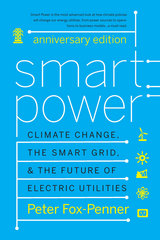 Smart Power Anniversary Edition: Climate Change, the Smart Grid, and the Future of Electric Utilities
Peter Fox-Penner
Island Press, 2014 Few industries in the U.S. are as stuck in the past as our utilities are. In the face of growing challenges from climate change and the need for energy security, a system and a business model that each took more than a century to evolve must now be extensively retooled in the span of a few decades. Despite the need, many of the technologies and institutions needed are still being designed or tested. It is like rebuilding our entire airplane fleet, along with our runways and air traffic control system, while the planes are all up in the air filled with passengers.
In this accessible and insightful book, Peter Fox-Penner considers how utilities interact with customers and how the Smart Grid could revolutionize their relationship. Turning to the supply side, he considers the costs of, and tradeoffs between, large-scale power sources such as coal plants and small-scale power sources close to customers. Finally, he looks at how utilities can respond to all of these challenges and remain viable, while financing hundreds of billions of dollars of investment without much of an increase in sales.
Upon publication, Smart Power was praised as an instant classic on the future of energy utilities. This Anniversary Edition includes up-to-date assessments of the industry by such leading energy experts as Daniel Estes and Jim Rogers, as well as a new afterword from the author. Anyone who is interested in our energy future will appreciate the clear explanations and the in-depth analysis it offers.
 Smart Power: Climate Change, the Smart Grid, and the Future of Electric Utilities
Peter Fox-Penner
Island Press, 2010 A new national policy on climate change is under debate in the United States and is likely to result in a cap on greenhouse gas emissions for utilities. This and other developments will prompt utilities to undergo the largest changes in their history. Smart Power examines the many facets of this unprecedented transformation.
This enlightening book begins with a look back on the deregulatory efforts of the 1990s and their gradual replacement by concerns over climate change, promoting new technologies, and developing stable prices and supplies. In thorough but non-technical terms it explains the revolutionary changes that the Smart Grid is bringing to utility operations. It also examines the options for low-carbon emissions along with the real-world challenges the industry and its regulators must face as the industry retools and finances its new sources and systems.
Throughout the book, Peter Fox-Penner provides insights into the policy choices and regulatory reform needed to face these challenges. He not only weighs the costs and benefits of every option, but presents interviews with informed experts, including economists, utility CEOs, and engineers. He gives a brief history of the development of the current utility business model and examines possible new business models that are focused on energy efficiency.
Smart Power explains every aspect of the coming energy revolution for utilities in lively prose that will captivate even the most techno-phobic readers.
Smart Road Infrastructure: Innovative technologies
Runhua Guo
The Institution of Engineering and Technology, 2022 Smart roads are road infrastructures with integrated structural materials, sensors, information centres, and energy systems. They are intended to extend the road's service life and performance, reduce safety risks, and improve service quality. Several smart road pilot projects have been initiated, such as precast pavements with integrated optical fibres, self-healing asphalt material, self-snow-melting systems and solar pavements.
Smart Sensing for Traffic Monitoring
Nobuyuki Ozaki
The Institution of Engineering and Technology, 2021 Growth in urbanisation, particularly in emerging economies, is causing increased traffic congestion and affecting environmental conditions in cities. Cities need to manage this growth in traffic in an efficient way. Intelligent infrastructure for traffic monitoring and sensing offers a potential solution, and so this book explores the prospective role of this approach in managing congestion, the established and emerging related technologies, and routes to effective implementation.
Smarter Energy: From smart metering to the smart grid
Hongjian Sun
The Institution of Engineering and Technology, 2016 This book presents cutting-edge perspectives and research results in smart energy spanning multiple disciplines across four main topics: smart metering, smart grid modeling, control and optimization, and smart grid communications and networking.
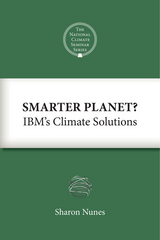 Smarter Planet?: IBM's Climate Solutions
Sharon Nunes
Island Press, 2012 On October 19, 2011, Sharon Nunes participated in The National Climate Seminar, a series of webinars sponsored by Bard College’s Center for Environmental Policy. The online seminars provide a forum for leading scientists, writers, and other experts to talk about critical issues regarding climate change. The series also opens a public conversation, inviting participants to ask questions and contribute their own thoughts.
Sharon Nunes is Vice President of the Smarter Cities Strategy & Solutions program at IBM, working with municipal leaders to manage urban systems more efficiently. In her lecture, Nunes discussed the ability of smart grids and other information technology to save energy, time, and costs. Questions focused on the barriers to implementing these systems, and Nunes addressed ongoing challenges as well as successful programs.
This E-ssential is an edited version of Nunes’ talk and the subsequent question and answer session. While some material has been cut and some language modified for clarity, the intention was to retain the substance of the original discussion.
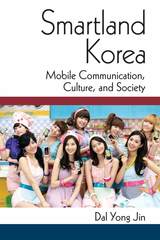 Smartland Korea: Mobile Communication, Culture, and Society
Dal Yong Jin
University of Michigan Press, 2017 The dramatic advancement of cellphone technology has fundamentally changed our daily lives. Smartphones and their applications have created new capital for information and communication technology corporations and changed the way people communicate. Because of an interesting awareness of the significance for digital economy and people’s daily culture, many countries, from the U.S. to China, have massively invested in the smartphone industries since the early 21st century. Among them, South Korea has become one of the centers for technology development and digital culture, although the country was once lagging behind in the penetration of the phones and their apps. Yet within the last few years, the country has taken a big step toward their goal of becoming a ‘mobile game wonderland’ by appropriating smartphones and it now exists as a curious test-bed for the future of smartphone technology. Smartland Korea, as the first attempt to comprehensively analyze mobile communication in the context of Korean smartphones, looks into a largely neglected focus of inquiry, a localized mobile landscape, with particular reference to young Koreans’ engagement with their devices and applications. Dal Yong Jin focuses not only on the celebratory achievement of technological advancement, but also the significance of social milieu in the development of the smartphones. He situates the emergence of smartphones within the growth of mobile technologies and overall telecommunications industries embedded in Korea’s information and communication technologies. The book examines the technology’s innovation and the evolution, the digital economy through the lens of political economy, and the youth culture embedded in the Korean smartphone context.
 SMELL
Andrea Pavoni, Danilo Mandic, Caterina Nirta and Andreas Philippopoulos-Mihalopoulos
University of Westminster Press, 2023 Although somewhat marginal in relation to the other senses, smell is the most potent way of anchoring ourselves to the world. We subconsciously find our place in it by sniffing our body, the body of the one next to us, the room in which we are, the culture with which we are familiar. There is an incessant olfactory flow consisting of bodies, human and nonhuman, that are agents of generation, consumption, diffusion, reproduction and dissolution of odours. As they move or pause, as they cluster with others or try to move away, these bodies constantly partake in this olfactory flow, this dense planetary swirl that leaves nothing outside. The law aims at presenting itself as rational and objective. Smell, on the other hand, is one of the least integrated senses in the legal edifice, in comparison to, say, seeing and hearing. This can be attributed mainly to the fact that sense-making of smell and law are different, even antithetical. Smell operates undercurrent, tickling the olfactory antennas of individual and collective bodies while habitually hiding behind other sensory volumes. Law, on the other hand, has an interest in appearing present, universal, constant. Olfactory sense-making relies on its elusiveness; legal sense-making invests in its obviousness. Yet, the two can interact in most unexpected ways, as this volume amply shows. If anything, smell airs the way in which law conceptualises and contextualises its own actuality. Smell brings law forth by allowing it to show its underbelly, its elusive sense-making that is invariably sacrificed in preference to the necessity of legal impressions of constancy. However, smell’s fragmentary, discontinuous and unstable nature, despite all the ordering that goes to it, poses a peculiar challenge to the law. This volume sets out to investigate this juncture.
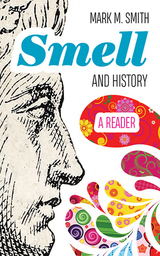 Smell and History: A Reader
Mark M. Smith
West Virginia University Press, 2019 Smell and History collects many of the most important recent essays on the history of scent, aromas, perfumes, and ways of smelling. With an introduction by Mark M. Smith—one of the leading social and cultural historians at work today and the preeminent champion in the United States of the emerging field of sensory history—the volume introduces to undergraduate and graduate students as well as to historians of all fields the richness, relevance, and insightfulness of the olfactory to historical study. Ranging from antiquity to the present, these ten essays, most of them published since 2003, consider how olfaction and scent have shaped the history of medicine, gender, race-making, class formation, religion, urbanization, colonialism, capitalism, and industrialization; how habits and practices of smelling informed ideas about the Enlightenment, modernity, and memory; how smell shaped perceptions of progress and civilization; and how people throughout history have used smell as a way to organize categories and inform worldviews.
 The Smell of Blood
Goffredo Parise
Northwestern University Press, 2003 A compelling tale of a husband's obsession with his wife's disastrous affair
"A smell very similar to that of slaughterhouses at dawn, but infinitely sweeter and slightly nauseating, or rather, to be more precise, exhilarating."
The smell of blood is really the smell of life. The psychiatrist narrating the story has the power to detect it. His young mistress hungers for it. And his middle-aged wife Silvia has just begun to emanate it--overpoweringly.
Silvia has begun an affair with a violent young idler and neofascist who despises and exploits women. At first her husband reacts with good humor--he has long been unfaithful himself. But jealousy soon colors his curiosity, and his obsession with the details of Silvia's relationship leads to fantasies that become self-fulfilling prophecies. At times coolly analytical, at others driven to know more, the narrator watches as Silvia's actions become more and more self-destructive. When she becomes a slave to her lover's wishes the smell of blood grows stronger, and the odor of life becomes an omen of death.
Goffredo Parise wrote The Smell of Blood in 1979 after suffering a heart attack. Once finished he sealed the manuscript in lead and wax and did not look at it again until a few days before his death in 1986. It was published posthumously in 1997 in Italy.
The Smell of Books: A Cultural-Historical Study of Olfactory Perception in Literature
Hans J. Rindisbacher
University of Michigan Press, 1993 The Smell of Books investigates the ways in which the olfactory sense has manifested itself in Italian, German, French, Russian, and English literature of the past 150 years. Against a broad interdiscriplinary backdrop that includes linguistics, psychology, aesthetics, and sociology, Hans J. Rindisbacher takes a new approach to literary history – one centered on the sense of smell.
Rindisbacher examines the works of the German Expressionists and of Baudelaire, Huxley, Rimbaud, Wilde, and Turgenev, as well as Holocaust memoirs and contemporary German books such as Patrick Suskind’s Das Parfum and Christa Wolf’s Storfall. He demonstrates that the sense of smell, which has heretofore occupied a position at the bottom of the sensory hierarchy, plays a consequential role in romantic, modern, and contemporary European and Russian literature.
 The Smell of Humans: A Memoir of the Holocaust in Hungary
Erno Szép
Central European University Press, 1994 Primarily a piece of creative writing and autobiographical literature of a very distinctive Central European kind, this detailed and imaginative short memoir is also an important document of the Holocaust in Hungary in 1944. Written by a master of twentieth-century Hungarian literature, it describes life for the Jewish population of German-occupied Budapest—the constant fear of deportation overshadowing the daily trials of living in the ghetto—before concentrating on the writer's own internment in a labor camp during the first weeks of rule by the extremist Arrow Cross regime. The experiences of those nineteen days spent in the camp are both harsh and disturbing, yet throughout his memoir Szep manages to maintain an extraordinary degree of compassion and detachment, even humor. Published to coincide with the fiftieth anniversary of the events described, this is the last of Szep's many literary works to appear in English."
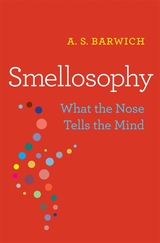 Smellosophy: What the Nose Tells the Mind
A. S. Barwich
Harvard University Press, 2020 An NRC Handelsblad Book of the Year
“Offers rich discussions of olfactory perception, the conscious and subconscious impacts of smell on behavior and emotion.”
—Science
Decades of cognition research have shown that external stimuli “spark” neural patterns in particular regions of the brain. We think of the brain as a space we can map: here it responds to faces, there it perceives a sensation. But the sense of smell—only recently attracting broader attention in neuroscience—doesn’t work this way. So what does the nose tell the brain, and how does the brain understand it?
A. S. Barwich turned to experts in neuroscience, psychology, chemistry, and perfumery in an effort to understand the mechanics and meaning of odors. She discovered that scents are often fickle, and do not line up with well-defined neural regions. Upending existing theories of perception, Smellosophy offers a new model for understanding how the brain senses and processes odors.
“A beguiling analysis of olfactory experience that is fast becoming a core reference work in the field.”
—Irish Times
“Lively, authoritative…Aims to rehabilitate smell’s neglected and marginalized status.”
—Wall Street Journal
“This is a special book…It teaches readers a lot about olfaction. It teaches us even more about what philosophy can be.”
—Times Literary Supplement
Smile: A Picture History of Olympic Park, 1887-1965
Siegel, Alan A
Rutgers University Press, 1995 In Smile, Alan A. Siegel chronicles the evolution of Olympic Park from a den of hedonism and intoxication in the 1880s into Essex County's most popular family entertainment site in the 1950s and 1960s. Under the fifty-year reign of Newark brewer Henry A. Guenther, millions of men, women, and children passed under the signs Smile and Learn to Play into what the legendary beer baron called a little bit of Coney Island, the circus, an old-fashioned beer garden, and Monte Carlo rolled into one. With its myriad games, attractions, performances, and restaurants, it was impossible to walk away from the park unsatisfied and not wishing for a return. Though the doors to Olympic Park have been closed for thirty years, it will forever reside in the memories of many as a towering monument on the cultural landscape of New Jersey in a simpler, more innocent, and less affluent time.
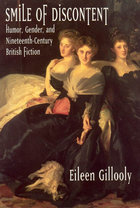 Smile of Discontent: Humor, Gender, and Nineteenth-Century British Fiction
Eileen Gillooly
University of Chicago Press, 1999 Like sex, Eileen Gillooly argues, humor has long been viewed as a repressed feature of nineteenth-century femininity. However, in the works of writers such as Jane Austen, George Eliot, Elizabeth Gaskell, Anthony Trollope, and Henry James, Gillooly finds an understated, wryly amusing perspective that differs subtly but significantly in rhetoric, affect, and politics from traditional forms of comic expression.
Gillooly shows how such humor became, for mostly female writers at the time, an unobtrusive and prudent means of expressing discontent with a culture that was ideologically committed to restricting female agency and identity. If the aggression and emotional distance of irony and satire mark them as "masculine," then for Gillooly, the passivity, indirection, and sympathy of the humor she discusses render it "feminine." She goes on to disclose how the humorous tactics employed by writers from Burney to Wharton persist in the work of Barbara Pym, Anita Brookner, and Penelope Fitzgerald.
The book won the Barbara Perkins and George Perkins Award given by the Society for the Study of Narrative Literature.
 Smile of the Midsummer Night: A Picture of Sweden
Lars Gustafsson and Agneta Blomqvist
Haus Publishing, 2015 In Smile of the Midsummer Night, best-selling author Lars Gustafsson and Agneta Blomqvist present a very personal guide to their Swedish homeland. Setting off from the far South, their journey takes them up to Norrland, from the farms of Scania to Laponian, a UNESCO World Heritage Site. But it is the idyllic fjord in Bohulän, located in the Västmanland region, as well as Mälar Lake and Stockholm that they call home. Throughout, Gustafsson and Blomqvist are full of entertaining suggestions for excursions, including journeys through forests and moors where you can take in the odd elk or wolf along the way and visits to August Strindberg’s and Kurt Tucholsky’s graves.
The first work of contemporary travel writing about Sweden by Swedish writers to have been translated into English, Smile of the Midsummer Night is a loving and poetic ode to this beautiful nation and a must-have for anyone interested in Scandinavia.
Smiling in the Darkness
Adelaide Freitas, Translated by Katharine F. Baker, with Bobby J. Chamberlain, Reinaldo F. Silva, and Emanuel Melo
Tagus Press, 2020 Born on the island of Flores, between Europe and the United States, Pedro da Silveira captures the islander's longing for migratory movement, leading to departure and an inevitable return. These fresh and original poems, now available in this masterful translation, express a deep connection to place, particularly, the insular world of the mid-Atlantic islands of the Azores. In Poems in Absentia & Poems from The Island and the World, we find yearning, hope, and loss in equal measure. In plain and direct language, we experience the emotions of dreaming and diminution as well as the discovery of illusions. Behind the poet's searing irony, we recognize a capacious and adventurous spirit.
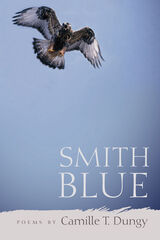 Smith Blue
Camille T. Dungy
Southern Illinois University Press, 2011 In Smith Blue, Camille T. Dungy offers a survival guide for the modern heart as she takes on twenty-first-century questions of love, loss, and nature. From a myriad of lenses, these poems examine the human capability for perseverance in the wake of heartbreak; the loss of beloved heroes and landscapes; and our determination in the face of everyday struggles. Dungy explores the dual nature of our presence on the planet, juxtaposing the devastation caused by human habitation with our own vulnerability to the capricious whims of our environment. In doing so, she reveals with fury and tenderness the countless ways in which we both create and are victims of catastrophe.
This searing collection delves into the most intimate transformations wrought by our ever-shifting personal, cultural, and physical terrains, each fraught with both disillusionment and hope. In the end, Dungy demonstrates how we are all intertwined, regardless of race or species, living and loving as best we are able in the shadows of both man-made and natural follies.
Flight It is the day after the leaves, when buckeyes, like a thousand thousand pendulums, clock trees, and squirrels, fat in their winter fur, chuckle hours, chortle days. It is the time for the parting of our ways. You slid into the summer of my sleeping, crept into my lonely hours, ate the music of my dreams. You filled yourself with the treated sweet I offered, then shut your rolling eyes and stole my sleep. Came morning and me awake. Came morning. Awake, I walked twelve miles to the six-gun shop. On the way there I saw a bird-of-prayer all furled up by the river. I called to it. It would not unfold. On the way home I killed it. It is the time of the waking cold, when buckeyes, like a thousand thousand metronomes, tock time, and you, fat on my summer sleep, titter toward me, walk away. It is the time for the parting of our days.
 Smoke and Tailings: An Environmental History of Butte and Anaconda, Montana, 1880–1930
Fredric L. Quivik
University of Nevada Press, 2025 Smoke and Tailings explores the environmental history of copper-smelting industry in Butte and Anaconda, Montana. Situating within the emerging “Envirotech” field, Smoke and Tailings blends environmental history and the history of technology. Author and historian Fredric L. Quivik integrates these disciplines with political, legal, and business history to provide a comprehensive analysis of the industry’s environmental legacy.
Butte’s history, a long-standing subject of historical inquiry, gains new depth as Quivik examines the technological developments pioneered by local mining companies. He challenges the simplistic narrative of a powerful corporation imposing its will on helpless agricultural communities. Local communities mounted strong opposition to the industry’s polluting methods; Quivik acknowledges this dynamic while also revealing efforts by the Anaconda Copper Mining Company to address environmental issues. The company developed and implemented technical solutions to minimize resource waste and mitigate damage, driven by both economic interests and litigation pressures. While these advancements lessened some of the environmental harm, they were insufficient to prevent long-term consequences. The operations in Butte and Anaconda ultimately created the largest Superfund complex in the United States, requiring billions of dollars in remediation.
Quivik’s nuanced approach opens the “black box” of technology, showing how innovations both alleviated and exacerbated the environmental challenges of mining, milling, and smelting. In addition to contributing to the rich literature on smelter smoke, this book breaks new ground by examining the underexplored environmental impacts of tailings, offering a fresh perspective on the intersection of industry, technology, and environmental change. The cultural landscapes of Butte and Anaconda retain many features of the region’s history of both environmental degradation and remediation. Smoke and Tailings is an essential addition to the study of Butte’s industrial and ecological history.
 Smoke, Flames, and the Human Body in Mesoamerican Ritual Practice
Vera Tiesler
Harvard University Press Epitomizing the radiating sun and perpetuating the cycles of life and time, fire was—and continues to be—a central force in the Mesoamerican cosmos. Mesoamericans understood heat and flames as animate forces that signified strength and vitality; the most powerful of individuals were embodied with immense heat. Moreover, fire was transformative: it was a means to destroy offerings as well as to transport offerings to otherworldly places. The importance of heat and flames is evident in a spectrum of ritual practices, ranging from the use of sweat baths to the burning of offerings. Human bodies were among the most valuable resources heated or consumed by fire.
This volume addresses the traditions, circumstances, and practices that involved the burning of bodies and bone, to move toward a better understanding of the ideologies behind these acts. It brings together scholars working across Mesoamerica who approach these dual themes (fire and the body) with different methodologies and interdisciplinary lenses. Each contributor illuminates the deeper levels of Mesoamerican ritual practice in light of these themes, while highlighting what is unique to each of the societies that shared Mesoamerican territories.
 Smoke in Their Eyes: Lessons in Movement Leadership from the Tobacco Wars
Michael Pertschuk
Vanderbilt University Press, 2001 The classic American struggle between the public interest and corporate interests is perhaps nowhere better illustrated than in the decades-long struggle between the tobacco industry and advocates for public health. The failure of the "global settlement" legislation is now viewed by many public health experts as an historic missed opportunity, and in this extraordinary book, Smoke in Their Eyes, Michael Pertschuk brilliantly describes the forces brought to bear. A lifelong public health leader and tobacco control advocate, Pertschuk provides uncommon insight into the movement and its opposition. Questions that reveal themselves here can be applied to public advocacy as a whole: how can movement leaders gauge and best employ popular support? Who has legitimacy to speak on behalf of a particular public cause? And perhaps most crucially, how is it possible for those whose cause is a moral one to strike political compromise? With a narrative as compelling as the issues it raises, Smoke in Their Eyes will be of great interest to everyone from students of public advocacy and political science to general readers.
The Smoke of the Gods: A Social History of Tobacco
Eric Burns
Temple University Press, 2006 "Fox News Watch" host Eric Burns, who chronicled the social history of alcohol in The Spirits of America turns to tobacco in The Smoke of the Gods. Ranging from ancient times to the present day, The Smoke of the Gods is a lively history of tobacco, especially in the United States. Although tobacco use is controversial in the U.S. today, Burns reminds us that this was not always the case. For centuries tobacco was generally thought to have medicinal and even spiritual value. Most of the signers of the Declaration of Independence were tobacco users or growers, or both. According to Burns, tobacco changed the very course of U.S. history, because its discovery caused the British to support Jamestown, its struggling New World colony. An entertaining and informative look at a subject that makes daily news headlines, The Smoke of the Gods is a history that is, well, quite addictive.
Smoke over Birkenau
Liana Millu
Northwestern University Press, 1997 Winner of the PEN Renato Poggioli Translation Award
An Italian-Jewish journalist and schoolteacher who joined the Italian partisans in 1943, Liana Millu was arrested in 1944 and deported to Birkenau. The astonishing stories in this book tell of the women who lived and suffered alongside her.
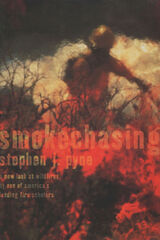 Smokechasing
Stephen J. Pyne
University of Arizona Press, 2003 "Painting, architecture, politics, even gardening and golf—all have their critics and commentators," observes Stephen Pyne. "Fire does not." Aside from news reports on fire disasters, most writing about fire appears in government reports and scientific papers—and in journalism that has more in common with the sports page than the editorial page.
Smokechasing presents commentaries by one of America's leading fire scholars, who analyzes fire the way another might an election campaign or a literary work. "Smokechasing" is an American coinage describing the practice of sending firefighters into the wild to track down the source of reported smoke. Now a self-described "friendly fire critic" tracks down more of the history and lore of fire in a collection that focuses on wildland fire and its management. Building on and complementing a previous anthology, World Fire, this new collection features thirty-two original articles and substantial revisions of works that have previously appeared in print. Pyne addresses many issues that have sparked public concern in the wake of disastrous wildfires in the West, such as fire ecology, federal fire management, and questions relating to fire suppression. He observes that the mistake in fire policy has been not that wildfires are suppressed but that controlled fires are no longer ignited; yet the attempted forced reintroduction of fire through prescribed burning has proved difficult, and sometimes damaging. There are, Pyne argues, many fire problems; some have technical solutions, some not. But there is no evading humanity's unique power and responsibility: what we don't do may be as ecologically powerful as what we do.
Throughout the collection, Pyne makes it clear that humans and fire interact at particular places and times to profoundly shape the world, and that understanding the contexts in which fire occurs can tell us much about the world's natural and cultural landscapes. Fire's context gives it its meaning, and Smokechasing not only helps illuminate those contexts but also shows us how to devise new contexts for tomorrow's fires.
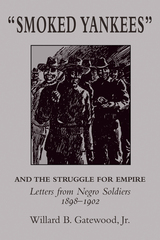 "Smoked Yankees" and the Struggle for Empire: Letters from Negro Soldiers, 1898–1902
Willard Gatewood
University of Arkansas Press, 1987 Called upon for the first time to render military service outside the States, Negro soldiers (called Smoked Yankees by the Spaniards) were eager to improve their status at home by fighting for the white man in the Spanish-American War. Their story is told through countless letters sent to black U.S. newspapers that lacked resources to field their own reporters. The collection constitutes a remarkably complete and otherwise undisclosed amount of the black man’s role in—and attitude toward—America’s struggle for empire. In first-hand reports of battles in the Philippine Islands and Cuba, Negro soldiers wrote from the perspective of dispossessed citizens struggling to obtain a larger share of the rights and privileges of Americans. These letters provide a fuller understanding of the exploits of black troops through their reports of military activities and accounts of foreign peoples and its cultures.
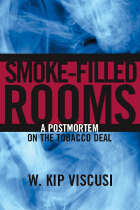 Smoke-Filled Rooms: A Postmortem on the Tobacco Deal
W. Kip Viscusi
University of Chicago Press, 2002 The 1998 out-of-court settlements of litigation by the states against the cigarette industry totaled $243 billion, making it the largest payoff ever in our civil justice system. Two key questions drove the lawsuits and the attendant settlement: Do smokers understand the risks of smoking? And does smoking impose net financial costs on the states?
With Smoke-Filled Rooms,W. Kip Viscusi provides unexpected answers to these questions, drawing on an impressive range of data on several topics central to the smoking policy debate. Based on surveys of smokers in the United States and Spain, for instance, he demonstrates that smokers actually overestimate the dangers of smoking, indicating that they are well aware of the risks involved in their choice to smoke. And while smoking does increase medical costs to the states, Viscusi finds that these costs are more than financially balanced by the premature mortality of smokers, which reduces their demands on state pension and health programs, so that, on average, smoking either pays for itself or generates revenues for the states.
Viscusi's eye-opening assessment of the tobacco lawsuits also includes policy recommendations that could frame these debates in a more productive way, such as his suggestion that the FDA should develop a rating system for cigarettes and other tobacco products based on their relative safety, thus providing an incentive for tobacco manufacturers to compete among themselves to produce safer cigarettes. Viscusi's hard look at the facts of smoking and its costs runs against conventional thinking. But it is also necessary for an informed and realistic debate about the legal, financial, and social consequences of the tobacco lawsuits.
People making $50,000 or more pay .08 percent of their income in cigarette taxes, but people with incomes of less than $10,000 pay 1.62 percenttwenty times as much. The maintenance crew at the Capitol will bear more of the "sin tax" levied on cigarettes than will members of Congress who voted to boost it.
Cigarettes are not a financial drain to the U.S. In fact, they are self-financing, as a consequence of smokers' premature mortality.
The general public estimates that 47 out of 100 smokers will die from lung cancer because they smoke. Smokers believe that 40 out of 100 will die of the disease. Scientists estimate the actual number of 100 smokers who will die from lung cancer to be between 7 and 13.
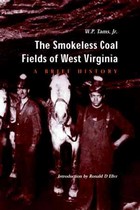 SMOKELESS COAL FIELDS OF WEST VIRGINIA: A BRIEF HISTORY
W. P. Tams, Jr., Introduction by Ronald D. Eller
West Virginia University Press, 2001 The Smokeless Coal Fields of West Virginia: A Brief History first appeared in 1963, a little book by a man with no training as either a writer or a historian. Since then, this volume has become an essential sourcebook, consulted and quoted in nearly every study of coal field history. The surprising impact and durability of the book are due to both the information in it and the personality behind it. Through the first half of the twentieth century, William Purviance Tams lived coal. Rising from a young coal engineer to a senior coal baron, Tams stood at the center of Southern West Virginia industrialization. When he sold his company in 1955, Tams was the last of the old owner-operators, men with no personal or financial interest outside of coal. Tams wrote a book which could only have come from an ultimate insider. The everyday work of mining coal is here-laying track, blasting and loading the coal. So is the everyday business of coal, from sinking shafts and ventilating the work area, to administering a town and keeping the workers happy. Tams gives the financial details of the volatile business, and offers capsule biographies of the other major developers of the Southern West Virginia coal fields. It was a passion for Tams. He never married, and tended his business and his town with paternal care. After retirement, this industrial baron spent his final decades in a modest bungalow in his little coal-camp community, watching the town he had built fade back into the mountains. It is W. P. Tams's passion and attitude, as much as his place at the center of history, which make The Smokeless Coal Fields of West Virginia worth reading nearly 40 years after its first publication. Tams's 1963 account of his career, The Smokeless Coal Fields of West Virginia, offers a unique perspective on the business and the life of coal mining. The book is especially valuable for its account of the daily life and work of the miners, engineers, and families in the mines and in the mining towns. Our reprint of this fascinating and important book combines Tams's original work with a new introduction by Ronald D. Eller, author of Miners, Millhands, & Mountaineers.
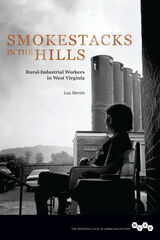 Smokestacks in the Hills: Rural-Industrial Workers in West Virginia
Louis Martin
University of Illinois Press, 2015 Long considered an urban phenomenon, industrialization also transformed the American countryside. Lou Martin weaves the narrative of how the relocation of steel and pottery factories to Hancock County, West Virginia, created a rural and small-town working class--and what that meant for communities and for labor. As Martin shows, access to land in and around steel and pottery towns allowed residents to preserve rural habits and culture. Workers in these places valued place and local community. Because of their belief in localism, an individualistic ethic of "making do," and company loyalty, they often worked to place limits on union influence. At the same time, this localism allowed workers to adapt to the dictates of industrial capitalism and a continually changing world on their own terms--and retain rural ways to a degree unknown among their urbanized peers. Throughout, Martin ties these themes to illuminating discussions of capital mobility, the ways in which changing work experiences defined gender roles, and the persistent myth that modernizing forces bulldozed docile local cultures. Revealing and incisive, Smokestacks in the Hills reappraises an overlooked stratum of American labor history and contributes to the ongoing dialogue on shifts in national politics in the postwar era.
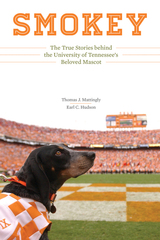 Smokey: The True Stories behind the University of Tennessee’s Beloved Mascot
Thomas J. Mattingly
University of Tennessee Press, 2013 The band blares “Rocky Top” and the crowd roars as the University of Tennessee football team storms out of the tunnel and onto the field through the giant “T,” their beloved mascot Smokey leading the way. The iconic Bluetick Coonhound has been part of the pageantry and tradition at the University of Tennessee since 1953, delighting fans both young and old.
For this entertaining and enlightening book, UT sports historian Thomas J. Mattingly has teamed up with longtime Smokey owner Earl C. Hudson to tell the stories of the nine hounds that have been top dog on campus for more than half a century. It was the Rev. Bill Brooks, Hudson’s brother-in-law, whose prize-winning dog “Brooks’ Blue Smokey,” became the first mascot by winning a student body-led contest at a home football game in 1953. The Coonhound breed was selected because it was native to the state, and several (no one remembers exactly how many) were brought onto the field at halftime to compete. But Smokey stole the show when he threw back his head and howled. The crowd cheered, and Smokey howled again. The raucous applause and barking built to a frenzy. The enthusiastic hound won the hearts of the Volunteer faithful that day, and he and the dogs that followed have remained among the University of Tennessee’s most popular symbols ever since.
The authors have interviewed Smokey’s former handlers, university archivists, sports journalists, and local historians as well as legions of longtime fans. Their recollections provide not only the background of the mascot but a history of UT athletics as well. Vol fans will enjoy reading about Smokey’s adventures throughout the years, from his kidnapping in 1955 by mischievous Kentucky students to his confrontation with the Baylor Bear at the 1957 Sugar Bowl to the time he suffered heat exhaustion at the 1991 UCLA game and was listed on the Vols’ injury report until his return later in the season.
Filled with photographs and memorabilia, including vintage game programs, football schedules, letters, cartoons, and more, this book brings to life the magic of UT football and the endearing canines that have become such an indispensable part of the experience.
THOMAS J. MATTINGLY is the author of Tennessee Football: The Peyton Manning Years, The University of Tennessee Football Vault: The Story of the Tennessee Volunteers, 1891-2006, The University of Tennessee All-Access Football Vault and The University of Tennessee Trivia Book. He writes about Vol history on his Knoxville News Sentinel blog, “The Vol Historian.”
EARL C. HUDSON’s family have cared for the Smokeys since 1994.
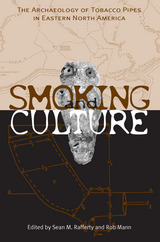 Smoking & Culture: Archaeology Tobacco Pipes Eastern North America
Sean M. Rafferty
University of Tennessee Press, 2004
“Smoking and Culture is an outstanding example of what is possible when new methods and theoretical frameworks are applied to tobacco pipes.” —Virginia Magazine of History and Biography
Smoking has played an important role in the cultures of North America since ancient times. Because of the ceremonial and ritual aspects of the practice in Native American societies, smoking pipes are important cultural artifacts. The essays in Smoking and Culture constitute the first sustained interpretive study of smoking pipes, focusing on the cultural significance of smoking both before and after European contact.
Pipes lend themselves to anthropological as well as archaeological analysis in part because they are more ceremonial than utilitarian. Thus, while their styles and provenance can reveal something about trade relationships, cultural transfer, and aesthetic influences, they also provide important information about the nature of ritual in a particular society. As the contributors demonstrate, pipes offer a window through which to view the symbolic, ideological, and political roles that smoking has played in North American societies from prehistoric times to the nineteenth century.
The eleven essays included range widely over time and region, beginning with a case study of pipes and mortuary practices in the Ohio Valley during the Early Woodland Period. Subsequent chapters examine stone pipes from coastal North Carolina during the Late Woodland Period and the role pipes played in interregional interaction among protohistoric Native American groups in the Midwest and Northeast. Other essays explore the variety of cultural and political uses of pipes during the period of European contact. The final section of the book focuses on smoking in Euro-American contexts of the seventeenth through nineteenth centuries.
The innovative interpretive approaches taken by the contributors and the broad historical perspective will make Smoking and Culture a model for examining other categories of material culture, and the volume will be welcomed by anthropologists and historians as well as archaeologists.
Sean M. Rafferty is associate professor of anthropology at the University at Albany, State University of New York.
Rob Mann is the southeast regional archaeologist for Louisiana and is based in the Museum of Natural Science at Louisiana State University.
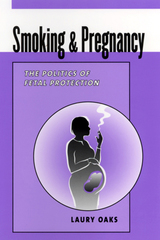 Smoking and Pregnancy: The Politics of Fetal Protection
Oaks, Laury
Rutgers University Press, 2001 The 1966 edition of the leading medical textbook states that pregnant women can safely smoke half a pack of cigarettes a day. Yet today, women who smoke during pregnancy are among the most vilified figures in public health campaigns. Laury Oaks argues this shift is not due solely to medical findings indicating that cigarette smoking may harm the fetus. Also responsible are a variety of social factors that converged more than a decade ago to construct the demonized category of the “pregnant smoker.” This book charts the emergence of smoking during pregnancy as a public health concern and social problem. Oaks looks at the emphasis public health educators place on individual responsibility, the current legal and social assertion of fetal personhood, the changing expectations of pregnant and prepregnant women, and the advent of antismoking campaigns. She explores how public health educators discuss “the problem” with one another, how they communicate with pregnant smokers, and how these women themselves understand the “risk” of fetal harm. Finally, Oaks discusses the various meanings of “objective” statistics on the effects of smoking on the fetus, exploring the significance of cultural context in assessing the relative importance of those numbers. She argues that rather than bombarding pregnant women with statistics, health educators should consider the daily lives of these women and their socioeconomic status to understand why some women choose to smoke during pregnancy. Without downplaying the seriousness of the health risks that smoking poses to women and their babies, the book supports new efforts that challenge the moral policing of pregnant smokers.
 The Smoking Book
Lesley Stern
University of Chicago Press, 1999 The Smoking Book is a dreamlike structure built on the solid foundation of two questions: how does it feel to smoke, and what does smoking mean? Lesley Stern, in an innovative, hybrid form of writing, muses on these questions through intersecting stories and essays that connect, expand, and contract like smoke rings floating through the air.
Stern writes of addictions and passionate attachments, of the body and bodily pleasure, of autobiography and cultural history. Smoking is Stern's seductive pretext, her way of entering unknown and mysterious regions. The Smoking Book begins with intimate and vivid accounts of growing up on a tobacco farm in colonial Rhodesia, reminiscences that permeate subsequent excursions into precolonial tobacco production and postcolonial life in Zimbabwe, as well as dramatic vignettes set in Australia, the United States, Scotland, Italy, Japan, and South America. Stern has written a book, at once intensely personal and kaleidoscopically international, that weaves the intimate act of a solitary person smoking a cigarette into a broad cultural picture of desire, exchange, fulfillment, and the acts that bind people together, either in lasting ways or through ephemeral encounters.
The Smoking Book is for anyone who has ever smoked or loved a smoker (against their better judgment); it is for those who have never smoked or for those who mourn the loss of cigarettes as they would grieve for a lost friend. But mostly, The Smoking Book is for all those who are smoldering still.
 Smoking Privileges: Psychiatry, the Mentally Ill, and the Tobacco Industry in America
Hirshbein, Laura D
Rutgers University Press, 2015 Current public health literature suggests that the mentally ill may represent as much as half of the smokers in America. In Smoking Privileges, Laura D. Hirshbein highlights the complex problem of mentally ill smokers, placing it in the context of changes in psychiatry, in the tobacco and pharmaceutical industries, and in the experience of mental illness over the last century. Hirshbein, a medical historian and clinical psychiatrist, first shows how cigarettes functioned in the old system of psychiatric care, revealing that mental health providers long ago noted the important role of cigarettes within treatment settings and the strong attachment of many mentally ill individuals to their cigarettes. Hirshbein also relates how, as the sale of cigarettes dwindled, the tobacco industry quietly researched alternative markets, including those who smoked for psychological reasons, ultimately discovering connections between mental states and smoking, and the addictive properties of nicotine. However, Smoking Privileges warns that to see smoking among the mentally ill only in terms of addiction misses how this behavior fits into the broader context of their lives. Cigarettes not only helped structure their relationships with other people, but also have been important objects of attachment. Indeed, even after psychiatric hospitals belatedly instituted smoking bans in the late twentieth century, smoking remained an integral part of life for many seriously ill patients, with implications not only for public health but for the ongoing treatment of psychiatric disorders. Making matters worse, well-meaning tobacco-control policies have had the unintended consequence of further stigmatizing the mentally ill. A groundbreaking look at a little-known public health problem, Smoking Privileges illuminates the intersection of smoking and mental illness, and offers a new perspective on public policy regarding cigarettes.
 The Smoking Puzzle: Information, Risk Perception, and Choice
Frank A. Sloan, V. Kerry Smith, and Donald H. Taylor, Jr.
Harvard University Press, 2003 How do smokers evaluate evidence that smoking harms health? Some evidence suggests that smokers overestimate health risks from smoking. This book challenges this conclusion. The authors find that smokers tend to be overly optimistic about their longevity and future health if they quit later in life.
Older adults' decisions to quit smoking require personal experience with the serious health impacts associated with smoking. Smokers over fifty revise their risk perceptions only after experiencing a major health shock--such as a heart attack. But less serious symptoms, such as shortness of breath, do not cause changes in perceptions. Waiting for such a jolt to occur is imprudent.
The authors show that well-crafted messages about how smoking affects quality of life can greatly affect current perceptions of smoking risks. If smokers are informed of long-term consequences of a disease, and if they are told that quitting can indeed come too late, they are able to evaluate the risks of smoking more accurately, and act accordingly.
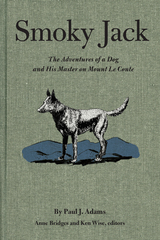 Smoky Jack
Kenneth Wise
University of Tennessee Press, 2016 In 1925, Paul Adams was appointed custodian of Mount Le Conte, the third-highest peak of the Great Smoky Mountains National Park. His job was to welcome tourists, give guided tours, and establish a camp that would become known as LeConte Lodge, which still stands in what has become America's most popular national park. Adams had everything he needed for the job: a passion for the outdoors, a love of hiking, a desire to preserve the native habitat while welcoming visitors, and the companionship of a remarkable dog.
During his time on the mountains, Adams trained Smoky Jack to be a pack-dog--not just carrying supplies but actually making the four-hour trip to a store in Gatlinburg and back alone. Over the next nine months, Adams and his dog would become inseperable. Smoky Jack became his assistant, bodyguard, and best friend. Throughout Smoky Jack, readers will also gain a unique glimpse into the early days of the Great Smoky Mountains region during the decade before it was name a national park in 1934.
Adams describes the trials and triumphs he and the indomitable German sherpherd faced as they exemplified the ancient relationship between man and dog on Mount Le Conte, building trails, guiding visitors, and making a life in nature. Paul Adams's faithful Smoky Jack stays by his side until the end.
Paul Adams (1901-1985) was a well-known Tennessee naturalist. Anne Bridges and Ken Wise are codirectors of the Great Smoky Mountains Regional Project. Bridges is associate professor at John C. Hodges Library at the University of Tennessee, Knoxville. With Ken Wise and Russell Clement, she wrote Terra Incognita: An Annotated Bibliography of the Great Smoky Mountains, 1544-1934. Wise, professor at the John C. Hodges Library, is the author of Hiking Trails of the Great Smoky Mountains and coauthor of A National History of Mount Le Conte.
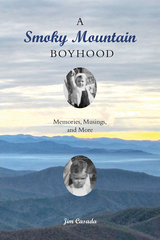 A Smoky Mountain Boyhood: Memories, Musings, and More
Jim Casada
University of Tennessee Press, 2020 Born in Bryson City, North Carolina, Jim Casada has had a long career as a teacher, author, and avid outdoorsman. He grew up in a time and place where families depended on the land and their community to survive. Many of the Smoky Mountain customs and practices that Casada reflects on are gradually disappearing or have vanished from our collective memories. In A Smoky Mountain Boyhood, Casada pairs his gift for storytelling and his training as a historian to produce a highly readable memoir of mountain life in East Tennessee and western North Carolina. His stories evoke a strong sense of place and reflect richly on the traits that make the people of Southern Appalachia a unique American demographic. Casada discusses traditional folkways; hunting, growing, preparing, and eating wide varieties of food available in the mountain region; and the overall fabric of mountain life. Divided into four main sections—High Country Holiday Tales and Traditions; Seasons of the Smokies; Tools, Toys, and Boyhood Treasures; and Precious Memories—each part reflects on a unique and memorable coming-of-age in the Smokies. Containing a strong sense of adventure, nostalgic tone, and well-paced prose, Casada’s memoir will be appreciated by those who yearn to rediscover the Smokies of their childhoods as well as those who wish to imaginatively climb these mountains for the first time.
 Smoky, the Dog That Saved My Life: The Bill Wynne Story
Nancy Roe Pimm
Ohio University Press, 2019 World War II soldier Bill Wynne met Smoky while serving in New Guinea, where the dog, who was smaller than Wynne’s army boot, was found trying to scratch her way out of a foxhole. After he adopted her, she served as the squadron mascot and is credited as being the first therapy dog for the emotional support she provided the soldiers. When they weren’t fighting, Bill taught Smoky hundreds of tricks to entertain the troops. Smoky became a war hero herself at an airstrip in Luzon, the Philippines, where she helped save forty airplanes and hundreds of soldiers from imminent attack. After the war, Bill worked as a Hollywood animal trainer and then returned to his hometown of Cleveland, Ohio. He and Smoky continued to perform their act, even getting their own TV show, How to Train Your Dog with Bill Wynne and Smoky. Nancy Roe Pimm presents Bill and Smoky’s story to middle-grade readers in delightful prose coupled with rich archival illustrations. Children will love learning about World War II from an unusual perspective, witnessing the power of the bond between a soldier and his dog, and seeing how that bond continued through the exciting years following the war.
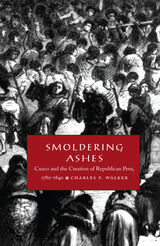 Smoldering Ashes: Cuzco and the Creation of Republican Peru, 1780-1840
Charles F. Walker
Duke University Press, 1999 In Smoldering Ashes Charles F. Walker interprets the end of Spanish domination in Peru and that country’s shaky transition to an autonomous republican state. Placing the indigenous population at the center of his analysis, Walker shows how the Indian peasants played a crucial and previously unacknowledged role in the battle against colonialism and in the political clashes of the early republican period. With its focus on Cuzco, the former capital of the Inca Empire, Smoldering Ashes highlights the promises and frustrations of a critical period whose long shadow remains cast on modern Peru. Peru’s Indian majority and non-Indian elite were both opposed to Spanish rule, and both groups participated in uprisings during the late colonial period. But, at the same time, seething tensions between the two groups were evident, and non-Indians feared a mass uprising. As Walker shows, this internal conflict shaped the many struggles to come, including the Tupac Amaru uprising and other Indian-based rebellions, the long War of Independence, the caudillo civil wars, and the Peru-Bolivian Confederation. Smoldering Ashes not only reinterprets these conflicts but also examines the debates that took place—in the courts, in the press, in taverns, and even during public festivities—over the place of Indians in the republic. In clear and elegant prose, Walker explores why the fate of the indigenous population, despite its participation in decades of anticolonial battles, was little improved by republican rule, as Indians were denied citizenship in the new nation—an unhappy legacy with which Peru still grapples. Informed by the notion of political culture and grounded in Walker’s archival research and knowledge of Peruvian and Latin American history, Smoldering Ashes will be essential reading for experts in Andean history, as well as scholars and students in the fields of nationalism, peasant and Native American studies, colonialism and postcolonialism, and state formation.
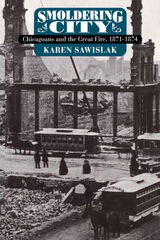 Smoldering City: Chicagoans and the Great Fire, 1871-1874
Karen Sawislak
University of Chicago Press, 1995 The fateful kick of Mrs. O'Leary's cow, the wild flight before the flames, the astonishingly quick rebuilding—these are the well-known stories of the Great Chicago Fire of 1871. But as much as Chicago's recovery from disaster was a remarkable civic achievement, the Great Fire is also the story of a city's people divided and at odds. This is the story that Karen Sawislak tells so revealingly in this book.
In a detailed account, drawn on memoirs, private correspondences, and other documents, Sawislak chronicles years of widespread, sometimes bitter, social and political conflict in the fire's wake, from fights over relief soup kitchens to cries against profiteering and marches on city hall by workers burned out of their homes. She shows how through the years of rebuilding the people of Chicago struggled to define civic order—and the role that "good citizens" would play within it. As they rebuilt, she writes, Chicagoans confronted hard questions about charity and social welfare, work and labor relations, morality, and the limits of state power. Their debates in turn exposed the array of values and interests that different class, ethnic, and religious groups brought to these public discussions.
"Sawislak combines the copious detail of a historian with the vivid portrayals of a storyteller in her investigation of the infamous Chicago fire. . . . Highlighted by historical maps, plates and engravings, with an epilogue and notes, Smoldering City presents an extremely thorough and engaging study of this extraordinary disaster."—Publishers Weekly
Smollett's Britain
Jeremy Black
St. Augustine's Press, 2022 Acclaimed British historian examines the layers of craft and insight in Tobias Smollett, and discusses the particular nature of his genius and influence on British culture. Once again, Black acquaints the reader with the full range of a prolific writer's works and offers a backstage tour of the meaning and context of Britain's most beloved stories and story-tellers.
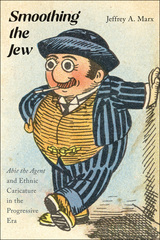 Smoothing the Jew: "Abie the Agent" and Ethnic Caricature in the Progressive Era
Jeffrey A. Marx
Rutgers University Press, 2024 The turn of the nineteenth century in the United States saw the substantial influx of immigrants and a corresponding increase in anti-immigration and nativist tendencies among longer-settled Americans. Jewish immigrants were often the object of such animosity, being at once the object of admiration and anxiety for their perceived economic and social successes. One result was their frequent depiction in derogatory caricatures on the stage and in print.
Smoothing the Jew investigates how Jewish artists of the time attempted to “smooth over” these demeaning portrayals by focusing on the first Jewish comic strip published in English, Harry Hershfield’s Abie the Agent. Jeffrey Marx demonstrates how Hershfield created a Jewish protagonist who in part reassured nativists of the Jews’ ability to assimilate into American society while also encouraging immigrants and their children that, over time, they would be able to adopt American customs without losing their distinctly Jewish identity.
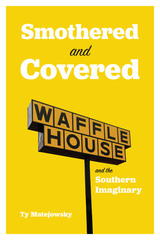 Smothered and Covered: Waffle House and the Southern Imaginary
Ty Matejowsky
University of Alabama Press, 2023 A critical meditation of the iconic 24-7 roadside chain and its place in the southern imaginary
Waffle House has long been touted as an icon of the American South. The restaurant’s consistent foregrounding as a resonant symbol of regional character proves relevant for understanding much about the people, events, and foodways shaping the sociopolitical contours of today’s Bible Belt. Whether approached as a comedic punchline on the Internet, television, and other popular media or elevated as a genuine touchstone of messy American modernity, Waffle House, its employees, and everyday clientele do much to transcend such one-dimensional characterizations, earning distinction in ways that regularly go unsung.
Smothered and Covered: Waffle House and the Southern Imaginary is the first book to socioculturally assess the chain within the field of contemporary food studies. In this groundbreaking work, Ty Matejowsky argues that Waffle House’s often beleaguered public persona is informed by various complexities and contradictions. Critically unpacking the iconic eatery from a less reductive perspective offers readers a more realistic and nuanced portrait of Waffle House, shedding light on how it both reflects and influences a prevailing southern imaginary—an amorphous and sometimes conflicting collection of images, ideas, attitudes, practices, linguistic accents, histories, and fantasies that frames understandings about a vibrant if also paradoxical geographic region.
Matejowsky discusses Waffle House’s roots in established southern foodways and traces the chain’s development from a lunch-counter restaurant that emerged across the South. He also considers Waffle House’s place in American and southern popular culture, highlighting its myriad depictions in music, television, film, fiction, stand-up comedy, and sports. Altogether, Matejowsky deftly and persuasively demonstrates how Waffle House serves as a microcosm of today’s South with all the accolades and criticisms this distinction entails.
SMRH 15
Edited by Joel T. Rosenthal and Paul E. Szarmach
Arizona Center for Medieval and Renaissance Studies, 2020
SMRH 16
Edited by Joel T. Rosenthal and Paul E. Szarmach
Arizona Center for Medieval and Renaissance Studies, 2022
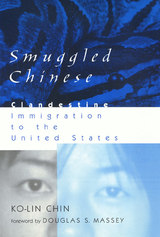 Smuggled Chinese
Ko-Lin Chin
Temple University Press, 1999 No one knows how many Chinese are being smuggled into the United States, but credible estimates put the number at 50,000 arrivals each year. Astonishing as this figure is, it represents only a portion of the Chinese illegally residing in the United States. Smuggled Chinese presents a detailed account of how this traffic is conducted and what happens to the people who risk their lives to reach Gold Mountain.
When the Golden Venture ran aground off New York's coast in 1993 and ten of the 260 Chinese on board drowned, the public outcry about human smuggling became front-page news. Probing into the causes and consequences of this clandestine traffic, Ko-lin Chin has interviewed more than 300 people -- smugglers, immigrants, government officials, and business owners -- in the United States, China, and Taiwan. Their poignant and chilling testimony describes a flourishing industry in which smugglers -- big and little snakeheads -- command fees as high as $30,000 to move desperate but hopeful men and women around the world. For many who survive the hunger, filthy and crowded conditions, physical and sexual abuse, and other perils of the arduous journey, life in the United States, specifically in New York's Chinatown, is a disappointment if not a curse. Few will return to China, though, because their families depend on the money and status gained by having a relative in the States.
In Smuggled Chinese, Ko-lin Chin puts a human face on this intractable international problem, showing how flaws in national policies and lax law enforcement perpetuate the cycle of desperation and suffering. He strongly believes, however, that the problem of human smuggling will continue as long as China's citizens are deprived of fundamental human rights and economic security.
Smuggled Chinese will engage readers interested in human rights, Asian and Asian American studies, urban studies, and sociology.
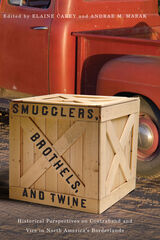 Smugglers, Brothels, and Twine: Historical Perspectives on Contraband and Vice in North America’s Borderlands
Edited by Elaine Carey and Andrae M. Marak
University of Arizona Press, 2011 In this volume the borders of North America serve as central locations for examining the consequences of globalization as it intersects with hegemonic spaces and ideas, national territorialism, and opportunities for—or restrictions on—mobility. The authors of the essays in this collection warn against falling victim to the myth of nation-states engaging in a valiant struggle against transnational flows of crime and vice. They take a long historical perspective, from Mesoamerican counterfeits of cacao beans used as currency to cattle rustling to human trafficking; from Canada’s and Mexico’s different approaches to the illegality of liquor in the United States during Prohibition to contemporary case studies of the transnational movement of people, crime, narcotics, vice, and even ideas.
By studying the historical flows of contraband and vice across North American borders, the contributors seek to bring a greater understanding of borderlanders, the actual agents of historical change who often remain on the periphery of most historical analyses that focus on the state or on policy.
To examine the political, economic, and social shifts resulting from the transnational movement of goods, people, and ideas, these contributions employ the analytical categories of race, class, modernity, and gender that underlie this evolution. Chapters focus on the ways power relations created opportunities for engaging in “deviance,” thus questioning the constructs of economic reality versus concepts of criminal behavior. Looking through the lens of transnational flows of contraband and vice, the authors develop a new understanding of nation, immigration, modernization, globalization, consumer society, and border culture.
Smugglers Secessionists & Loyal Citizens: On The Ghana-Togo Frontier
Paul Nugent
Ohio University Press, 2002 The first integrated history of the Ghana-Togo borderlands, Smugglers, Secessionists, and Loyal Citizens on the Ghana-Togo Frontier challenges the conventional wisdom that the current border is an arbitrary European construct, resisted by Ewe irredentism.
Paul Nugent contends that whatever the origins of partition, border peoples quickly became knowing and active participants in the shaping of this international boundary. The study itself straddles the conventional divide between social and political history and offers a reconstruction of a long-range history of smuggling and a reappraisal of Ewe identity.
Addressing topics such as imperialism, cocoa, the Customs Preventive Service, Christianity, and Ewe unification, this study will be of interest to scholars and to others concerned with issues of criminality, identity, and the state.
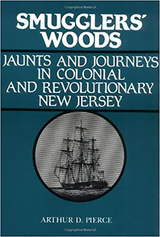 Smuggler's Woods: Jaunts and Journeys in Colonial and Revolutionary New Jersey
Pierce, Arthur
Rutgers University Press, 1964 Arthur Pierce tells the vivid story of smugglers turned privateers after the Revolutionary War broke out. He recounts from many sources tales of ships and men who fought and, although outnumbered and outgunned, still played havoc with British shipping. He tells also of the profiteering that went hand in hand with the privateering of the war years. From the Mullica River to Cape May stretched the woodlands and the inlets that harbored smugglers. Stealthy and dangerous though their activities were, the smugglers were not outcasts. They were looked upon with indulgence by many respectable citizens of the day. As bitterness toward the mother country mounted, smugglers were encouraged and actively supported in their operation agains the Crown. The Jersey inns and taverns emerged as the "cradles of revolt" in the years immediately preceding the Revolution. In them were planned and fostered many intrigues and acts of violence that played important parts behind the scenes of military and official action. A number of these inns and taverns are still in active use today and are depicted in the illustrations. Smugglers' Woods deals with smugglers, privateers, patriots, and loyalists to give an exciting account of the tensions and conflicts that gripped pre-Revolutionary and Revolutionary New Jersey.
Smuggling Elephants through Airport Security
Brad Johnson
Michigan State University Press, 2020 Nothing is off-limits in this ultimately American text. Smuggling Elephants through Airport Security attempts to position large academic ideas in shared public spaces, often discovering the absurdity and humor in making such connections. The poems herein take the dizzying influences affecting the post-postmodern American and make poetry of it all, skipping whimsically from the Pixies to Plato’s “Allegory of the Cave,” from the Confederate flag to unisex public toilets, from eggplant emojis to Vladimir Putin stealing Robert Kraft’s Super Bowl ring. While the volume gives the reader a specific sense of voice and character, it also allows for identification with the author’s collected observations, all the while providing a succinct feel for the twenty-first-century American zeitgeist.
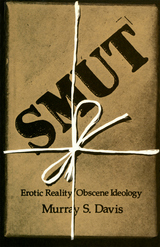 Smut: Erotic Reality/Obscene Ideology
Murray S. Davis
University of Chicago Press, 1983 Smut investigates sex in a way that differes from nearly all previous books on the subject. Drawing on a wide variety of literary forms, including the work of novelists, poets, and even comedians–resources ranging from the most sublime theologians to the most profane pornographers–Murray S. Davis goes beyond those who regard sex merely as a biological instinct or animal behavior. He recaptures sex for the social sciences by reemphasizing the aspects of it that are unique to human beings in all their rich perplexity.
In part one, Davis employs a phenomenlogical approach to examine the differrence between sexual arousal and ordinary experience: sexual arousal, he argues, alters a person's experience of the world, resulting in an "erotic reality" that contratsts strikingly to our everyday reality; different perceptions of time, space, human bodies, and other social types occur in each realm. Davis describes in detail the movement from everyday into erotic reality from the first subtle castings-off to the shocking post-orgasmic return.
In part two the author employs a structuralist approach to determine why some people find this alternation between realities "dirty." He begins with a meditation on the similarity between sex and dirt and then asks, "How must somone view the world for him to find sex dirty?" Normal sex can be disliked, Davis concludes, only if it violates a certain conception of the individual; perverted sex can be despised only if it further violates certain conceptions of social relations and social organization. Davis ends part two with a "periodic table of perversions" that systematically summarizes the fundamental social elements out of which those who find sex dirty construct their world.
Finally, in part three Davis considers other conceptual grids affected by the alternation between everyday and erotic realities: the "pornographic," which concieves of the individual, social relations, and social organizations as deserving to disrupted by sex; and the "naturalistic," which concieves of them in a way that cannot be disrupted by sex. Throughout history these ideologies have contested for control over Western society, and, in his conlusion, Davis ofers a prognosis for the future of sex based on these historical ideological cycles.
 Snake Day: A Story of 24 Hours and 24 Serpentine Lives
Marty Crump
University of Chicago Press An hourly guide that follows twenty-four snakes as they find mates, hunt, and survive a changing world.
Does a snake crossing your path trigger delight or dread? The answer is clear for celebrated biologist Marty Crump, who shows us that snakes deserve our respect, admiration, and protection. In her short book Snake Day, each chapter introduces a single snake during a single hour, highlighting twenty-four different species from around the globe.
In the dark morning of a Brazilian forest, we avoid stepping on a jararaca, a nocturnal viper. If she bites, her venom will make our blood pressure—and us—drop. A synthetic version of this venom is now a life-saving drug, used to treat hypertension and heart failure. Later in the morning, in the Zagros Mountains that trace Iran’s northwest border, there’s enough light to see a tiny arachnid wiggling on the ground. When a warbler dives for a meal, he realizes his mistake too late; that spider is actually a snake’s tail, and a spider-tailed horned viper makes a meal of the bird. In the early afternoon, in a pine forest outside of Atlanta, Georgia, an eastern hognose snake will strike at us—a bluff—and then roll over and play dead. By the end of our snake day, we’ll have glimpsed the diversity of this unique group of reptiles, met serpentine friends who frighten and fascinate, and learned how humans can protect these amazing species.
For each chapter, celebrated artist Stuart Patience has depicted these scenes with stunning pen and ink illustrations. Working together to narrate and illustrate these unique moments in time, Crump and Patience have created an engaging read that is a perfect way to spend an hour or two—and a true gift for readers, amateur scientists, and anyone who recoils from or relishes snake visits.
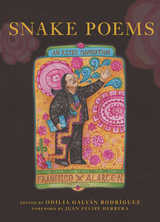 Snake Poems: An Aztec Invocation
Francisco X. Alarcón; Edited by Odilia Galván Rodríguez; Foreword by Juan Felipe Herrera; Translated by David Bowles and Xánath Caraza
University of Arizona Press, 2019 For beloved writer and mentor Francisco X. Alarcón, the collection Snake Poems: An Aztec Invocation was a poetic quest to reclaim a birthright. Originally published in 1992, the book propelled Alarcón to the forefront of contemporary Chicano letters.
Alarcón was a stalwart student, researcher, and specialist on the lost teachings of his Indigenous ancestors. He first found their wisdom in the words of his Mexica (Aztec) grandmother and then by culling through historical texts. During a Fulbright fellowship to Mexico, Alarcón uncovered the writings of zealously religious Mexican priest Hernando Ruiz de Alarcón (1587–1646), who collected (often using extreme measures), translated, and interpreted Nahuatl spells and invocations.
In Snake Poems Francisco Alarcón offered his own poetic responses, reclaiming the colonial manuscript and making it new. This special edition is a tender tribute to Alarcón, who passed away in 2016, and includes Nahuatl, Spanish, and English renditions of the 104 poems based on Nahuatl invocations and spells that have survived more than three centuries. The book opens with remembrances and testimonials about Alarcón’s impact as a writer, colleague, activist, and friend from former poet laureate Juan Felipe Herrera and poet and activist Odilia Galván Rodríguez, who writes, “This book is another one of those doors that [Francisco] opened and invited us to enter. Here we get to visit a snapshot in time of an ancient place of Nahuatl-speaking ancestors, and Francisco’s poetic response to what he saw through their eyes.”
The Snake River: Window To The West
Tim Palmer
Island Press, 1991 Tim Palmer weaves natural history into a comprehensive account of the complex problems that plague natural resource management throughout the West, as well as the practical solutions that are available.
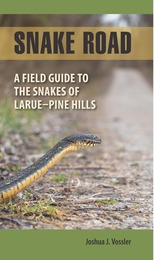 Snake Road: A Field Guide to the Snakes of LaRue-Pine Hills
Joshua J. Vossler
Southern Illinois University Press, 2021 Visiting the mecca of snake watching
Twice a year, spring and fall, numerous species of reptiles and amphibians migrate between the LaRue–Pine Hills’ towering limestone bluffs and the Big Muddy River’s swampy floodplain in southern Illinois. Snakes, especially great numbers of Cottonmouths, give the road that separates these distinct environments its name. Although it is one of the best places in the world to observe snakes throughout the year, spring and fall are the optimal times to see a greater number and variety. Among the many activities that snakes can be observed doing are sunning themselves on rocks, lying in grasses, sheltering under or near fallen tree limbs, or crossing the road. In this engaging guide, author Joshua J. Vossler details what to expect and how to make the most of a visit to what is known around the world as Snake Road.
Vossler catalogs twenty-three native snake species by both common and scientific names, lists identifying features, and estimates the probability of spotting them. Throughout this book, stunning color photographs of each species’ distinctive physical characteristics enable identification by sight only, an important feature, since Illinois law prohibits the handling, harming, or removal of reptiles and other wildlife on and around the road. Since snakes are visually variable—individual snakes of the same species can differ tremendously in size, color, and pattern—photographs of as many variations as possible are included. To aid in identification, eleven sets of photographs contrast the features of similar species and point out how and why these snakes may be easily confused. Visitors can keep track of the snakes they have identified by using the checklist in the back of the book. A list of recommended reading provides sources of additional information about snakes in southern Illinois and beyond.
Snakehunter
Chuck Kinder
West Virginia University Press, 2018 First published in 1973, this debut novel is the deeply moving coming-of-age story of Speer Whitfield, whose recollection of his upbringing and his large, remarkable, and often peculiar family evokes the forces that set the path for a boy’s growth into manhood in 1940s Appalachia.
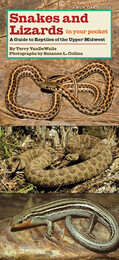 Snakes and Lizards in Your Pocket: A Guide to Reptiles of the Upper Midwest
Terry VanDeWalle
University of Iowa Press, 2010 From the rare and docile massasauga, which relies on camouflage to remain unnoticed, to the more familiar bullsnake, which defends itself by hissing loudly and vibrating its tail from an S-shaped striking position, to the eastern racer, often seen crawling at more than three miles an hour during daytime, snakes are beautiful animals with habits both fascinating and beneficial to humans. Their relatives the lizards, most of which are more easily seen and identified, exhibit similarly fascinating behavior. This colorful addition to our series of laminated guides informs both amateur and professional herpetologists about twenty-seven species of snakes and six species of lizards in the Upper Midwest states of Minnesota, Wisconsin, Illinois, Indiana, Michigan, Ohio, South Dakota, North Dakota, Kansas, Nebraska, Iowa, and Missouri. Terry VanDeWalle provides a complete description of each species, both adult and young, as well as distinguishing characteristics for thirty-two subspecies of snakes and two subspecies of lizards: length, color, head and neck patterns, scales, and so on. Also included is information about habitat preferences: forests, wet meadows, and sand prairies, for example. Most helpful for identifying snakes and lizards in the field are his comparisons of similar species and his comprehensive key. Superb photographs by Suzanne Collins of adult and, when needed for identification, young snakes and lizards make this guide the perfect companion for hikers in all kinds of environments whenever a snake ripples across your path or a lizard darts into the underbrush.
 Snake's Daughter: The Roads in and out of War
Gail Hosking Gilberg
University of Iowa Press, 1997 Gail Hosking Gilberg's father was a hero, a valiant soldier decorated posthumously with the Medal of Honor, a man who served his country throughout his entire adult life. But Charles Hosking was a mystery to his daughter. He was killed in Vietnam a week after her seventeenth birthday. She buried the war, the protests, the medal, and her military upbringing along with her father, so much so that she felt cut off from herself. It took more than twenty years for her to recognize the stirrings of a father and a daughter not yet at peace. Gilberg began a journey—two journeys really—to find out who her father was and in the process to find herself. She explored her buried rage, shame, and silence, and examined how war had shaped her life. In studying the photo albums that her father had left behind, Gilberg found that the photographs demanded that she give voice to her feelings, then release her silent words, words that had no meaning in war for her father yet had all the meaning in the world for her. The result was an epiphany. The photographs became the roads she took in and out of war, and her words brought her father home. Snake's Daughter reveals the crossroads where a soldier father's life and a daughter's life connect. Snake's Daughter is an arresting and anguished narrative that gives voice to an experience Gail Hosking Gilberg shares with thousands of Americans, including military “brats” whose parents served their country and often gave their lives in the process.
 Snakes, Sunrises, and Shakespeare: How Evolution Shapes Our Loves and Fears
Gordon H. Orians
University of Chicago Press, 2014 Our breath catches and we jump in fear at the sight of a snake. We pause and marvel at the sublime beauty of a sunrise. These reactions are no accident; in fact, many of our human responses to nature are steeped in our deep evolutionary past—we fear snakes because of the danger of venom or constriction, and we welcome the assurances of the sunrise as the predatory dangers of the dark night disappear. Many of our aesthetic preferences—from the kinds of gardens we build to the foods we enjoy and the entertainment we seek—are the lingering result of natural selection.
In this ambitious and unusual work, evolutionary biologist Gordon H. Orians explores the role of evolution in human responses to the environment, beginning with why we have emotions and ending with evolutionary approaches to aesthetics. Orians reveals how our emotional lives today are shaped by decisions our ancestors made centuries ago on African savannas as they selected places to live, sought food and safety, and socialized in small hunter-gatherer groups. During this time our likes and dislikes became wired in our brains, as the appropriate responses to the environment meant the difference between survival or death. His rich analysis explains why we mimic the tropical savannas of our ancestors in our parks and gardens, why we are simultaneously attracted to danger and approach it cautiously, and how paying close attention to nature’s sounds has resulted in us being an unusually musical species. We also learn why we have developed discriminating palates for wine, and why we have strong reactions to some odors, and why we enjoy classifying almost everything.
By applying biological perspectives ranging from Darwin to current neuroscience to analyses of our aesthetic preferences for landscapes, sounds, smells, plants, and animals, Snakes, Sunrises, and Shakespeare transforms how we view our experience of the natural world and how we relate to each other.
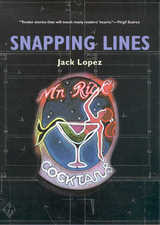 Snapping Lines
Jack Lopez
University of Arizona Press, 2001 A construction worker takes up with the pregnant daughter of an acquaintance and finds he doesn't control the relationship as much as he thinks he does . . .
A couple searches for a lost dog along the beach because the dog is more important than their relationship . . .
A drunken man picks up a girl hitchhiker and remembers what it once felt like to have feelings for someone else . . .
What does it mean to be male in a world in which old borders no longer exist? How can a man have a relationship if he doesn't even know who he is—and what better way to find out than by committing to a woman? Snapping Lines brings familiar and new stories together in a collection that explores the lives of loners searching for love. Jack Lopez writes about people who have adopted a stoical indifference to a world in which they always seem to find themselves on the losing end. These stories explore Latino male identity and the forces that shape it: friends, family, and lovers; culture, place, and relationships. They focus on men—often working men in the building trades—who construct their lives through their work and live in perpetual limbo because they don't know who they are. Men who stumble onto the relationships they need almost by accident. Men who try to control their relationships but fail.
Written in spare, electric language and energized by memorable scenes, these stories enlighten as much as they entertain. When you have read Snapping Lines, you will come to see the faces of strangers in new and familiar ways.
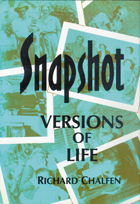 Snapshot Versions of Life
Richard Chalfen
University of Wisconsin Press, 1987 Snapshot Versions of Life is an important foray into the culture of photography and home life from an anthropologist’s perspective. Examining what he calls “Home Mode” photography, Richard Chalfen explores snapshots, slide shows, family albums, home movies, and home videos, uncovering what people do with their photos as well as what their personal photos do for them.
Chalfen’s “Polaroid People” are recognizable—if ironically viewed—relatives, uncles, aunts, and All-American kids. As members of “Kodak Culture” they watch home movies, take pictures of newborn babies, and even, in their darker moments, scratch out the faces of disliked relatives in group photographs. He examines who shoots these photos and why, as well as how they think (or don’t) of planning, editing, and exhibiting their shots. Chalfen’s analysis reveals the culturally structured behavior underlying seemingly spontaneous photographic activities.
Snapshots
Alain Robbe-Grillet
Northwestern University Press, 1995 Alain Robbe-Grillet has long been regarded as the chief spokesman for the controversial nouveau roman. This collection of brilliant short pieces introduces the reader to those techniques employed by Robbe-Grillet in his longer works. These intriguing, gemlike stories represent his most accessible fiction.
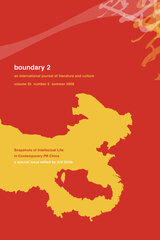 Snapshots of Intellectual Life in Contemporary PR China, Volume 35
Arif Dirlik, special issue editor
Duke University Press “Snapshots of Intellectual Life in Contemporary PR China” discusses changes that have taken place in Chinese intellectual life over the past decade, the self-reflection that these changes have provoked among Chinese intellectuals, and the ways in which these changes have been received in the United States. Featuring essays by intellectuals from throughout Asia, this special issue of boundary 2 examines how China’s changing economy creates both new problems and new opportunities. These essays explore contemporary discussions concerning education and culture as China aspires to create innovative world-class universities and new national universities. Others discuss the question of “Chineseness” as an ideological operator within China, throughout the Chinese diaspora, and increasingly across the competitive globalized economy of culture and ideas. Contributors: Chris King Chi Chan, Chu Yiu-Wai, Alexander Day, Arif Dirlik, Han Shaogong, Pun Ngai, Fengzhen Wang, Wang Hui, Wang Shaoguang, Shaobo Xie, Yu Keping
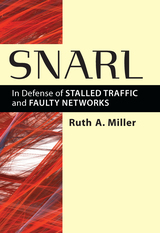 Snarl: In Defense of Stalled Traffic and Faulty Networks
Ruth A. Miller
University of Michigan Press, 2014 Ruth A. Miller excavates a centuries-old history of nonhuman and nonbiological constitutional engagement and outlines a robust mechanical democracy that challenges existing theories of liberal and human political participation. Drawing on an eclectic set of legal, political, and automotive texts from France, Turkey, and the United States, she proposes a radical mechanical re-articulation of three of the most basic principles of democracy: vitality, mobility, and liberty. Rather than defending a grand theory of materialist or posthumanist politics, or addressing abstract concepts or “things” writ large, Miller invites readers into a self-contained history of constitutionalism situated in a focused discussion of automobile traffic congestion in Paris, Istanbul, and Boston. Within the mechanical public sphere created by automotive space, Snarl finds a model of democratic politics that transforms our most fundamental assumptions about the nature, and constitutional potential, of life, movement, and freedom.
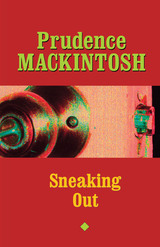 Sneaking Out
By Prudence Mackintosh
University of Texas Press, 2002 From the endless battles of sibling rivalry to the endless worries about getting indifferent students into—and then graduated from—college, raising boys is the adventure of a lifetime for any mother. Prudence Mackintosh has not only survived the adventure but has also written about it with her signature wit and style. Her essays about life with sons Jack, Drew, and William have entertained the readers of Texas Monthly and other prominent magazines for nearly three decades, offering solace to similarly beleaguered parents and a knowing chuckle to everyone who enjoys watching the real-life sitcom of a fundamentally happy, intact family. Sneaking Out completes the story that Mackintosh began in her earlier books Thundering Sneakers and Retreads. In this collection of new and previously published essays, she recounts life with her adolescent sons as they race headlong to first jobs, first driver's licenses, first girlfriends, and first flights away from the family nest. She also follows them into the college years, when both parents and sons have to find a new balance in holding on and letting go. Along the way, she offers wise and witty reflections on being a woman at midlife, supporting her sons through the beginning of their adult lives and her parents through the end of theirs.
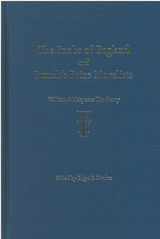 The Snobs of England and Punch's Prize Novelists
William Makepeace Thackeray
University of Michigan Press, 2005 This volume of The Snobs of England and Punch's Prize Novelists is an addition to The Thackeray Edition collection, the first full-scale scholarly edition of William Makepeace Thackeray's works to appear in over seventy years, and the only one ever to be based on an examination of manuscripts and relevant printed texts. It is also a concrete attempt to put into practice a theory of scholarly editing that gives new insight into Thackeray's own compositional process. In The Snobs of England, a series of amusing satirical sketches, Thackeray provides a panoramic awareness of the many varieties of human folly, identifying snobbery not as a social attitude but as the unworthy admiration of foolish things. Punch's Prize Novelists presents a series of illustrated burlesque parodies of Thackeray's contemporary writers, including Edward Bulwer, Benjamin Disraeli, Mrs. Catherine Gore, G.P.R. James, Charles Lever, and James Fenimore Cooper. The works are edited here from a comparative study of all relevant documents: from the first published appearances to the last editions touched by the author.
The Snodgrass Site of the Powers Phase of Southeast Missouri
James E. Price and James B. Griffin
University of Michigan Press, 1979 In this volume, the authors report on the complete excavation of the Snodgrass site, a prehistoric Mississippian village in southeast Missouri. More than 30 structures were completely excavated over seven years of fieldwork. Price and Griffin present descriptions and analyses of the structures, artifacts (primarily lithics and ceramics), and burials found at the site. Their work provides a look at the social complexity and patterned lifeways that existed within a prehistoric village population.
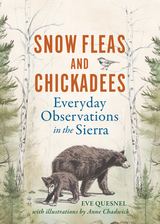 Snow Fleas and Chickadees: Everyday Observations in the Sierra
Eve Quesnel
University of Nevada Press, 2025 In Snow Fleas and Chickadees, Eve Quesnel invites readers to join her on strolls through the forest surrounding her neighborhood in the Sierra Nevada mountains near Lake Tahoe. The book serves as an extended field guide and natural history reference for residents of the region and those visiting and exploring the Sierra. Through her writing, the author shares personal narratives and information gleaned from experts in the field, including biologists, ornithologists, and foresters. Each of the book’s twenty-one essays begins with a detailed black-and-white drawing by illustrator Anne Chadwick that provides a backdrop for the vignettes that follow.
Quesnel embraces the notion that to simply walk in one’s neighborhood is to familiarize oneself with the local flora and fauna, drawing attention to everyday things too often neglected. She argues that we can be complacent with what surrounds us, but with careful observation and research, we become acutely aware—and in awe of—nature’s everyday activities. The black bear’s hibernation techniques and mountain chickadee’s caching methods reveal just two of nature’s wily ways. Quesnel chases other curiosities as well, asking, “How does a spider create an orb web?” or, “How does a boulder the size of a small car end up alone in the woods?” In the introduction, she writes, “It is this ‘un-peeling’ of layers in nature that opens up our world.”
For anyone interested in nature writing, whether an armchair explorer, outdoor enthusiast, or science aficionado, Snow Fleas and Chickadees provides an entertaining and engaging discovery of the picturesque Sierra Nevada.
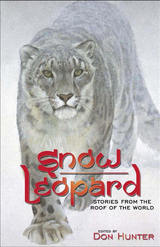 Snow Leopard: Stories from the Roof of the World
Don Hunter
University Press of Colorado, 2012 "Just recently, we once again traveled the high roads of snow leopard country, enjoying the beauty of Ladakh's iconic monasteries and watching blue sheep graze steep mountainsides. We saw no snow leopards but sensed their presence, feeling lucky and thrilled to be under the distant gaze of this magnificent cat. May you experience a similar feeling as you read about the snow leopard in this remarkable collection."
-Robert Bateman, from the foreword.
Like no other large cat, the snow leopard evokes a sense of myth and mysticism, strength and spirit shrouded in a snowy veil, seldom seen but always present. Giving a voice to the snow leopard, this collection of powerful first person accounts from an impressive cadre of scientist-adventurers grants readers a rare glimpse of this elusive cat and the remarkable lives of those personally connected to its future. These Stories from the Roof of the World resonate with adventure, danger, discovery, and most importantly hope for this magnificent big cat.
Very little has been written about this mystical creature. Its remote and rugged habitat among the mightiest collection of mountains on Earth, proclaimed "The Roof of the World" by awe-struck explorers, make it one of the most difficult and expensive animals to study. After a millennia thriving in peaceful isolation, human encroachment, poaching and climate change threaten the snow leopards survival. Speaking on behalf of the snow leopard, these heart-felt stories will inform and inspire readers, creating the vital connection needed to move people toward action in saving this magnificent cat. Contributors include: Ali Abutalip Dahashof, Som B. Ale, Avaantseren Bayarjargal, Yash Veer Bhatnagar, Joseph L. Fox, Helen Freeman, Darla Hillard, Don Hunter, Shafqat Hussain, Rodney Jackson, Jan E. Janecka, Mitchell Kelly, Ashiq Ahmad Khan, Nasier A. Kitchloo, Evgeniy P. Kashkarov, Peter Matthiessen, Kyle McCarthy, Tom McCarthy, George B. Schaller, and Rinchen Wangchuk
 Snow on the Cane Fields: Women’s Writing and Creole Subjectivity
Judith Raiskin
University of Minnesota Press, 1995 Snow on the Cane Fields was first published in 1995. Minnesota Archive Editions uses digital technology to make long-unavailable books once again accessible, and are published unaltered from the original University of Minnesota Press editions. In a probing analysis of creole women's writing over the past century, Judith Raiskin explores the workings and influence of cultural and linguistic colonialism. Tracing the transnational and racial meanings of creole identity, Raiskin looks at four English-speaking writers from South Africa and the Caribbean: Olive Schreiner, Jean Rhys, Michelle Cliff, and Zoë Wicomb. She examines their work in light of the discourses of their times: nineteenth-century "race science" and imperialistic rhetoric, turn-of-the-century anti-Semitic sentiment and feminist pacifism, postcolonial theory, and apartheid legislation. In their writing and in their multiple identities, these women highlight the gendered nature of race, citizenship, culture, and the language of literature. Raiskin shows how each writer expresses her particular ambivalences and divided loyalties, both enforcing and challenging the proprietary British perspective on colonial history, culture, and language. A new perspective on four writers and their uneasy places in colonial culture, Snow on the Cane Fields reveals the value of pursuing a feminist approach to questions of national, political, and racial identity. Judith Raiskin is assistant professor of women's studies at the University of California, Santa Barbara.
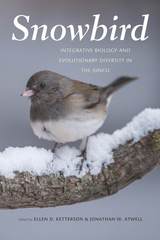 Snowbird: Integrative Biology and Evolutionary Diversity in the Junco
Edited by Ellen D. Ketterson and Jonathan W. Atwell
University of Chicago Press, 2016 At birdfeeders and in backyards across North America, the dark-eyed junco, or snowbird, can be found foraging for its next meal. With an estimated population of at least 630 million, juncos inhabit forests, parks, and even suburban habitats, making them one of the continent’s most abundant and easily observable songbirds. But while common and widespread, juncos also exhibit extraordinary diversity in color, shape, size, and behavior across their range, making them ideal study subjects for biologists interested in ecology and evolutionary diversification.
Intended for scholars, citizen scientists, and amateur ornithologists, alike, Snowbird synthesizes decades of research from the diverse and talented researchers who study the Junco genus. Though contributors approach their subject from a variety of perspectives, they share a common goal: elucidating the organismal and evolutionary processes by which animals adapt and diversify in response to environmental change. Placing special emphasis on the important role that underlying physiological, hormonal, and behavioral mechanisms play in these processes, Snowbird not only provides a definitive exploration of the junco’s evolutionary history and behavioral and physiological diversity but also underscores the junco’s continued importance as a model organism in a time of rapid global climate change. By merging often disparate biological fields, Snowbird offers biologists across disciplines an integrative framework for further research into adaptation, population divergence, and the formation of new species.
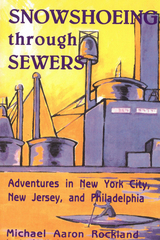 Snowshoeing Through Sewers: Adventures in New York City, New Jersey, and Philadelphia
Michael Aaron Rockland
Rutgers University Press, 2008 When Daniel Boone heard a neighbor's dog bark, he moved West. But when there's no Wild West left, where is adventure to be found? Michael Aaron Rockland looks for adventure in the megalopolis, "not where no one has been but where no one wishes to go . . . across traffic-clogged cities, the parking lots of wall-to-wall suburban malls, and the sinister waterways that seep through rusting industrial sites."
In these ten alternately poetic and comic tales of adventure in the New York/Philadelphia corridor, the most densely populated chunk of America, Rockland walks and bikes areas meant only for cars and paddles through waters capable of dissolving canoes. He hikes the length of New York's Broadway, camps in New York City, treks across Philadelphia, pedals among the tractor trailers of Route 1 in New Jersey, and paddles around Manhattan and through the dark tunnels under Trenton.
Whereas Henry David Thoreau built his cabin on Walden Pond to get out of town, for Rockland, the challenge is to head into town. As he writes, "in the late twentieth century, a weed and trash-filled city lot . . . may be a better place than the wilderness to contemplate one's relationship to nature."
The Snyders Mounds and Five Other Mound Groups in Calhoun County, Illinois
David P. Braun, James B. Griffin and Paul F. Titterington
University of Michigan Press, 1982 In the 1940s, Paul F. Titterington, a doctor and avocational archaeologist, excavated several prehistoric burial mounds in Calhoun County, Illinois. He did not publish the results of his research, but he did donate his notebooks, photographs, and artifact collection to the University of Michigan in 1955. In this report, David Braun and James Griffin present Titterington’s research.
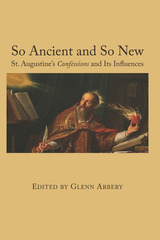 So Ancient and So New: St. Augustine's Confessions and Its Influence
Glenn Arbery
St. Augustine's Press, 2016 The study of any masterpiece can change one’s life, but the Confessions of St. Augustine, like Plato’s Republic or Dante’s Commedia, has the almost uncanny power to enact in the reader what it describes. Plato’s book reconfigures the city of the soul by freeing it from enslavement to the tyrannical passions and making it answerable to reason in its pursuit of the good. For Augustine, who shares many of the same ends, the pursuit of the good is not the rectification of philosophical reason, but (as it was for Dante) an intensely personal and consuming love: the encounter with the living God. Oddly, it may seem, that encounter comes for Augustine through the act of reading. Unlike Plato, who depicts the process of reasoning toward the truth, Augustine finds the truth revealed in another, immeasurably greater book that cannot be read in its true sense without the help of its author.
The essays uncover a variety of themes, from Augustine’s act of reading (Marc LePain and Bercier), his emphasis on memory (Roger Corriveau), and his choice to reveal to the world his “hidden and unworldly activity” (Daniel Maher), to the way Augustine’s own education might serve as a corrective to contemporary understandings of “assessment” (Gavin Colvert). The vast wake of Augustine’s work includes writers from Dante and Montaigne to Nabokov, but three representative figures were chosen to show his influence: Jean-Jacques Rousseau in the Confessions (Rick Sorenson), James Joyce in the whole range of his work (Eloise Knowlton), and T.S. Eliot in the Four Quartets (Glenn Arbery). The most direct engagement with Augustine is obviously Rousseau’s. In his essay comparing and contrasting the pivotal moments of the two Confessions, Rick Sorenson explores major differences between the way of faith and the path of reliance on reason. Joyce might be said to have taken Rousseau’s path (at least in rejecting revelation), whereas Eliot took Augustine’s.
In its sophistications and anxieties, the late antiquity Augustine inhabited feels a great deal like the late modernity we inhabit now. Certainly, the barbarians of materialist thought long ago sacked the civilization our ancestors inhabited. When Eliot published The Waste Land in 1922, he already saw the old order of antiquity and Christendom as “stony rubble,” “a heap of broken images.” As one of his speakers puts it, “Dry bones can harm no one.” This old book, the Confessions, might seem to our contemporaries as dry and dead as those bones, but it is not so.
Without being a defense of Christianity (as the City of God is) or a work of catechesis, the Confessions might be the greatest counter to the materialist creed in Western literature. It recounts Augustine’s central, intensely personal, and ultimately liberating struggle to conceive of spiritual substance, an intellectual achievement without which he cannot even hope to accommodate his understanding to the reality of God. This book of essays has one primary end, which is to entice the reader to reopen Augustine’s book, to look over his shoulder and see what the act of reading means to him and what it has accomplished: the world-changing encounter with the substance of the Word.
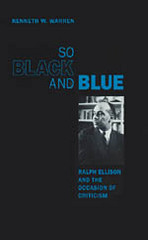 So Black and Blue: Ralph Ellison and the Occasion of Criticism
Kenneth W. Warren
University of Chicago Press, 2003 "So Black and Blue is the best work we have on Ellison in his combined roles of writer, critic, and intellectual. By locating him in the precarious cultural transition between Jim Crow and the era of promised civil rights, Warren has produced a thoroughly engaging and compelling book, original in its treatment of Ellison and his part in shaping the history of ideas in the twentieth century."—Eric J. Sundquist, University of California, Los Angeles
What would it mean to read Invisible Man as a document of Jim Crow America? Using Ralph Ellison's classic novel and many of his essays as starting points, Kenneth W. Warren illuminates the peculiar interrelation of politics, culture, and social scientific inquiry that arose during the post-Reconstruction era and persisted through the Civil Rights movement. Warren argues that Ellison's novel expresses the problem of who or what could represent and speak for the Negro in an age of limited political representation.
So Black and Blue shows that Ellison's successful transformation of these limits into possibilities has also, paradoxically, cast a shadow on the postsegregation world. What can be the direction of African American culture once the limits that have shaped it are stricken down? Here Warren takes up the recent, ongoing, and often contradictory veneration of Ellison's artistry by black writers and intellectuals to reveal the impoverished terms often used in discussions about the political and cultural future of African Americans. Ultimately, by showing what it would mean to take seriously the idea of American novels as creatures of their moment, Warren questions whether there can be anything that deserves the label of classic American literature.
 So Far Away: A Daughter's Memoir of Life, Loss, and Love
Christine W. Hartmann
Vanderbilt University Press, 2011 Christine Hartmann's mother valued control above all else, yet one event appeared beyond her command: the timing of her own death. Not to be denied there either, two decades in advance Irmgard Hartmann chose the date on which to end her life. And her next step was to tell her daughter all about it. For twenty years, Irmgard maintained an unwavering goal, to commit suicide at age seventy. She managed her chronic hypertension, stayed healthy and active, and lived life to the fullest. Meanwhile, Christine fought desperately against the decision. When Irmgard wouldn't listen, the only way to remain part of her life was for Christine to swallow her mother's plans--hook, line, and sinker. Christine's father, as it turned out, prepared too slowly for old age. Before he had made any decision, fate disabled him through a series of strokes. Confined to a nursing home, severely impaired by dementia and frustrated by his circumstances, his life epitomized the predicament her mother wanted to avoid. So Far Away gives us an intimate view of a person interacting with and reacting to her parents at the ends of their lives. In a richly detailed, poignant story of family members' separate yet interwoven journeys, it underscores the complexities and opportunities that life presents each one of us.
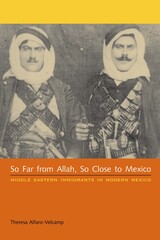 So Far from Allah, So Close to Mexico: Middle Eastern Immigrants in Modern Mexico
By Theresa Alfaro-Velcamp
University of Texas Press, 2007 Middle Eastern immigration to Mexico is one of the intriguing, untold stories in the history of both regions. In So Far from Allah, So Close to Mexico, Theresa Alfaro-Velcamp presents the fascinating findings of her extensive fieldwork in Mexico as well as in Lebanon and Syria, which included comprehensive data collection from more than 8,000 original immigration cards as well as studies of decades of legal publications and the collection of historiographies from descendents of Middle Eastern immigrants living in Mexico today. Adding an important chapter to studies of the Arab diaspora, Alfaro-Velcamp's study shows that political instability in both Mexico and the Middle East kept many from fulfilling their dreams of returning to their countries of origin after realizing wealth in Mexico, in a few cases drawing on an imagined Phoenician past to create a class of economically powerful Lebanese Mexicans. She also explores the repercussions of xenophobia in Mexico, the effect of religious differences, and the impact of key events such as the Mexican Revolution. Challenging the post-revolutionary definitions of mexicanidad and exposing new aspects of the often contradictory attitudes of Mexicans toward foreigners, So Far from Allah, So Close to Mexico should spark timely dialogues regarding race and ethnicity, and the essence of Mexican citizenship.
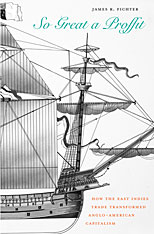 So Great a Proffit: How the East Indies Trade Transformed Anglo-American Capitalism
James R. Fichter
Harvard University Press, 2010 In a work of sweep and ambition, James Fichter explores how American trade proved pivotal to the evolution of capitalism in the United States and helped to shape the course of the British Empire.
Before the American Revolution, colonial merchants were part of a trading network that spanned the globe. After 1783, U.S. merchants began trading in the East Indies independently, creating a new class of investor-capitalists and the first generation of American millionaires. Such wealth was startling in a country where, a generation earlier, the most prosperous Americans had been Southern planters. This mercantile elite brought its experience and affluence to other sectors of the economy, helping to concentrate capital and create wealth, and paving the way for the modern business corporation.
Conducted on free trade principles, American trade in Asia was so extensive that it undermined the monopoly of the British East India Company and forced Britain to open its own free trade to Asia. The United States and the British Empire thus converged around shared, Anglo-American free-trade ideals and financial capitalism in Asia. American traders also provided a vital link to the Atlantic world for Dutch Java and French Mauritius, and were at the vanguard of Western contact with Polynesia and the Pacific Northwest.
Based on an impressive array of sources from Europe, Asia, Africa, and the United States, this pathbreaking book revolutionizes our understanding of the early American economy in a global context and the relationship between the young nation and its former colonial master.
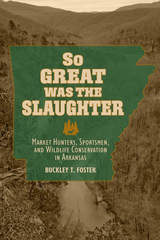 So Great Was the Slaughter: Market Hunters, Sportsmen, and Wildlife Conservation in Arkansas
Buckley T. Foster
University of Alabama Press, 2025 An account of the rise of sportsmen and conservation groups in Arkansas who made common cause to save the state’s wildlife resources So Great Was the Slaughter reveals the untold story of Arkansas conservation pioneers who saved the state’s game and fish populations. As Arkansas entered the twentieth century, the national demand for meat combined with the ability to ship millions of animals to hungry cities like New Orleans, Memphis, and Chicago had driven many species, including bison and passenger pigeons, to extinction in Arkansas. Many others, including deer, bear, turkey, quail, and fish, were in danger of disappearing. In response, an unlikely coalition of Arkansas sportsmen, hunters, and conservationists created a vision for conservation legislation, game laws, and the establishment of fish hatcheries and wildlife refuges. With support from influential outsiders like E. A. McIlhenny and the United States Biological Survey, they waged a long battle against entrenched political and commercial interests. Buckley Foster’s meticulous research reveals how these pioneers fought to save the state’s wildlife resources from destruction and laid the foundations for sustainable, modern wildlife management in Arkansas. So Great Was the Slaughter will fascinate hunters, conservationists, historians, and those interested in the history of wildlife conservation and conflicts between market hunters and sportsmen in the United States and the American South.
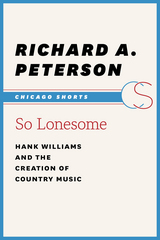 So Lonesome: Hank Williams and the Creation of Country Music
Richard
A. Peterson
University of Chicago Press, 1997 Hank Williams (1923–53) was an American singer-songwriter and musician regarded as the most important country music artist of all time, creator of an unforgettable sound and persona that helped to define the genre from its infancy and beyond. Though unable to read or notate music to any substantive degree, Williams recorded 11 number one hits between 1948 and 1953, which carried him to music’s mainstream and left an enduring legacy. In So Lonesome, Richard A. Peterson captures the free-wheeling entrepreneurial spirit of an era gone by, when the Grand Ole Opry put Nashville’s star on the map, while detailing how Williams came to fame and helped launch country music both during his life and after his death. More than just a history of the music and one of its most celebrated performers, So Lonesome explores what it means to live an authentic life within the confines of marketing popular culture.
 So Long
Jen Levitt
Four Way Books, 2023 Anticipating and then grieving the death of her father, Jen Levitt’s So Long fleshes out a full elegiac register, sitting with the mourning of farewell while holding onto gratitude, remembrance, and a permeating love. “Soon,” she says, “we’ll have to find another way to meet, as moonlight / makes the river glow.” In the contrails of bittersweet loss, Levitt’s speaker observes all that surrounds her, and the self, too, as a phenomenon in loneliness. In the suburbs, she notes high- school athletes circling “in their sweat-resistant fabrics,” “so natural in their tank tops, those dutiful kids trying to beat time”; upstate, she finds herself in temple where Broadway music has replaced prayer and discovers “no promises, / but, like hearing a rustle in deep woods & turning to locate its source, the chance for something rare.” It is this humanistic faith that inverts the title’s idiomatic goodbye into a statement of permanence, the truth of our enduring, improbable lives: look at this, she seems to command herself, “& look at how lucky I’ve been, for so long.”
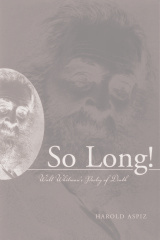 So Long! Walt Whitman's Poetry of Death
Harold Aspiz
University of Alabama Press, 2005 Explores Whitman's intimate and lifelong concern with mortality and his troubled speculations about the afterlife
Walt Whitman is unquestionably a great poet of the joys of living. But as Harold Aspiz demonstrates in this study, concerns with death and dying define Whitman’s career as a thinker, a poet, and a person. Through a close reading of Leaves of Grass, its constituent poems, particularly “Song of Myself,” and Whitman’s prose and letters, Aspiz charts how the poet’s exuberant celebration of life—the cascade of sounds, sights, and smells that erupt in his verse—is a consequence of his central concern: the ever-presence of death and the prospect of an afterlife.
Until now no one has studied as systematically the degree to which mortality informs Whitman’s entire enterprise as a poet. So Long! devotes particular attention to Whitman’s language and rich artistry in the context of the poet’s social and intellectual milieus. We see Whitman (and his many personae) as a folk prophet announcing a gospel of democracy and immortality; pondering death in alternating moods of acceptance and terror; fantasizing his own dying and his postmortem selfhood; yearning for mates and lovers while conscious of fallible flesh; agonizing over the omnipresence of death in wartime; patiently awaiting death; and launching imaginary journeys toward immortality and godhood.
So Long! is valuable for American literature collections, students and scholars of Whitman and 19th-century literature, and general readers interested in Whitman and poetry. By exploring Whitman's faith in death as a meaningful experience, we may understand better how the poet—whether personified as representative man, victim, hero, lover, or visionary—lived so completely on the edge of life.
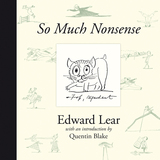 So Much Nonsense
Edward Lear
Bodleian Library Publishing, 2007
The Owl and the Pussy-cat went to sea
In a beautiful pea-green boat
They dined on mince, and slices of quince
Which they ate with a runcible spoon;
And hand in hand, on the edge of the sand,
They danced by the light of the moon,
The moon,
The moon,
They danced by the light of the moon.
The Owl and the Pussycat is only the most familiar of Edward Lear’s numerous nonsense verses, which have delighted millions worldwide for the last two centuries. Now his beloved verse and drawings are compiled here in a handsomely produced volume of classic material.
Leariana runs rampant in this enchanting treasury; readers encounter such indelible Lear creations as “snail mail,” while drawings of the Stripy Bird and images of the heroic and irrepressible Foss in heraldic poses are scattered throughout. Lear’s zany illustrations are reproduced here in their full vibrancy, and the goofily delightful art, including his illustrated nonsense alphabets, infuses Lear’s fanciful phrases and humorously incomprehensible limericks with their original liveliness and irresistible spirit. Rarely has the powerful charm and timeless appeal of Edward Lear’s work been available in such a beautifully produced edition, and So Much Nonsense is a gift that will unleash the imaginations of young and old alike.
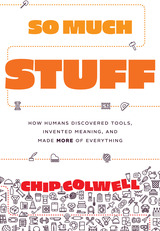 So Much Stuff: How Humans Discovered Tools, Invented Meaning, and Made More of Everything
Chip Colwell
University of Chicago Press, 2023 How humans became so dependent on things and how this need has grown dangerously out of control.
Over three million years ago, our ancient ancestors realized that rocks could be broken into sharp-edged objects for slicing meat, making the first knives. This discovery resulted in a good meal and eventually changed the fate of our species and our planet.
With So Much Stuff, archaeologist Chip Colwell sets out to investigate why humankind went from self-sufficient primates to nonstop shoppers, from needing nothing to needing everything. Along the way, he uncovers spectacular and strange points around the world—an Italian cave with the world’s first known painted art, a Hong Kong skyscraper where a priestess channels the gods, and a mountain of trash that rivals the Statue of Liberty. Through these examples, Colwell shows how humanity took three leaps that led to stuff becoming inseparable from our lives, inspiring a love affair with things that may lead to our downfall. Now, as landfills brim and oceans drown in trash, Colwell issues a timely call to reevaluate our relationship with the things that both created and threaten to undo our overstuffed planet.
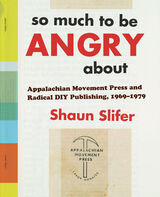 So Much to Be Angry About: Appalachian Movement Press and Radical DIY Publishing, 1969–1979
Shaun Slifer
West Virginia University Press, 2021 A richly produced, craft- and activist-centered celebration of radical DIY publishing, for readers of Appalachian Reckoning.
In a remarkable act of recovery, So Much to Be Angry About conjures an influential but largely obscured strand in the nation’s radical tradition—the “movement” printing presses and publishers of the late 1960s and 1970s, and specifically Appalachian Movement Press in Huntington, West Virginia, the only movement press in Appalachia. More than a history, this craft- and activist-centered book positions the frontline politics of the Appalachian Left within larger movements in the 1970s. As Appalachian Movement Press founder Tom Woodruff wrote: “Appalachians weren’t sitting in the back row during this struggle, they were driving the bus.”
Emerging from the Students for a Democratic Society chapter at Marshall University, and working closely with organizer and poet Don West, Appalachian Movement Press made available an eclectic range of printed material, from books and pamphlets to children’s literature and calendars. Many of its publications promoted the Appalachian identity movement and “internal colony” theory, both of which were cornerstones of the nascent discipline of Appalachian studies. One of its many influential publications was MAW, the first feminist magazine written by and for Appalachian women.
So Much to Be Angry About combines complete reproductions of five of Appalachian Movement Press’s most engaging publications, an essay by Shaun Slifer about his detective work resurrecting the press’s history, and a contextual introduction to New Left movement publishing by Josh MacPhee. Amply illustrated in a richly produced package, the volume pays homage to the graphic sensibility of the region’s 1970s social movements, while also celebrating the current renaissance of Appalachia’s DIY culture—in many respects a legacy, Slifer suggests, of the movement publishing documented in his book.
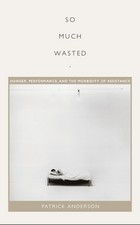 So Much Wasted: Hunger, Performance, and the Morbidity of Resistance
Patrick Anderson
Duke University Press, 2010 In So Much Wasted, Patrick Anderson analyzes self-starvation as a significant mode of staging political arguments across the institutional domains of the clinic, the gallery, and the prison. Homing in on those who starve themselves for various reasons and the cultural and political contexts in which they do so, he examines the diagnostic history of anorexia nervosa, fasts staged by artists including Ana Mendieta and Marina Abramović, and a hunger strike initiated by Turkish prisoners. Anderson explores what it means for the clinic, the gallery, and the prison when one performs a refusal to consume as a strategy of negation or resistance, and the ways that self-starvation, as a project of refusal aimed, however unconsciously, toward death, produces violence, suffering, disappearance, and loss differently from other practices. Drawing on the work of Martin Heidegger, Sigmund Freud, Giorgio Agamben, Peggy Phelan, and others, he considers how the subject of self-starvation is refigured in relation to larger institutional and ideological drives, including those of the state. The ontological significance of performance as disappearance constitutes what Anderson calls the “politics of morbidity,” the embodied, interventional embrace of mortality and disappearance not as destructive, but rather as radically productive stagings of subject formations in which subjectivity and objecthood, presence and absence, and life and death are intertwined.
So Ole Says to Lena: Folk Humor of the Upper Midwest
Compiled and edited by James P. Leary
University of Wisconsin Press, 2002 In the land of beer, cheese, and muskies—where the polka is danced and winter is unending and where Lutherans and Catholics predominate—everybody is ethnic, the politics are clean, and the humor is plentiful. This collection includes jokes, humorous anecdotes, and tall tales from ethnic groups (Woodland Indians, French, Cornish, Germans, Irish, Scandinavians, Finns, and Poles) and working folk (loggers, miners, farmers, townsfolk, hunters, and fishers). Dig into the rich cultural context supplied by the notes and photographs, or just laugh at the hundreds of jokes gathered at small-town cafes, farm tables, job sites, and church suppers. This second edition includes an afterword and indexes of motifs and tale types.
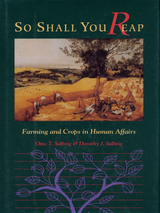 So Shall You Reap: Farming And Crops In Human Affairs
Otto T. Solbrig and Dorothy J. Solbrig
Island Press, 1994 So Shall You Reap is a broad-gauged exploration of the intersections of farming and history. Beginning with the prehistorical era, Otto and Dorothy Solbrig describe the evolution of farming. When and how did people learn to irrigate, to fertilize, to rotate their crops -- and why? Along with its fundamental importance to history, farming has radically altered the physical world. Natural landscapes have been completely transformed to provide room for growth on a large scale of a few species of plants and even fewer species of domesticated animals. Agriculture has altered the earth's biosphere and changed its geosphere: The soil has been modified, forests have been felled, swamps have been drained, rivers have been dammed and diverted. So Shall You Reap presents a fresh and informed perspective on how farming and the crops we grow have changed us and our environment. By understanding the nature of the origins and evolution of agriculture, we will be better prepared to anticipate what the future may hold in store, and what must be done to increase food production while minimizing environmental problems.
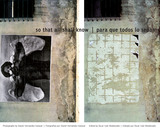 So That All Shall Know/Para que todos lo sepan: Photographs by Daniel Hernández-Salazar [Fotografías por Daniel Hernández-Salazar]
Edited by/editado por Oscar Iván Maldonado
University of Texas Press, 2007 How does an artist respond to the horrors of war and the genocide of his or her people? Can art play a role in the fight for justice? These are key questions for understanding the work of Guatemalan photographer Daniel Hernández-Salazar. Since the 1980s, Hernández-Salazar has created both documentary and aesthetic works that confront the state-sponsored terrorism and mass killings of Guatemala's long civil war (1962-1996). His photographic polyptych (4-panel image) "Clarification" became the icon for the Recovery of Historical Memory project of the Archbishopric of Guatemala, as well as a rallying symbol for Guatemalans. Broadening his crusade for justice in the twenty-first century, Hernández-Salazar is now also using the shouting angel of his polyptych (entitled "So That All Shall Know") to challenge the forgetting and/or erasure of painful history in many parts of the world, including Mexico, Japan, the United States, Canada, and Argentina. So That All Shall Know is a powerful, comprehensive overview of the work of Daniel Hernández-Salazar on recent Guatemalan history. Portfolios of images present his early photojournalistic work documenting the Guatemalan genocide; his Eros + Thanatos series that responds aesthetically to the destruction of war; and his Street Angel project, which uses his image "So That All Shall Know" to protest against injustice and historical forgetting around the world. Accompanying the images are bilingual English-Spanish essays by four scholars who discuss the development of Hernández-Salazar's art in the context of contemporary photography, the social and political conditions that inspire his work, and the broader questions that arise when artists engage in social struggle. Introduced by Nobel Peace Laureate Rigoberta Menchú Tum, So That All Shall Know is a moving testament to the horrors of genocide and the power of art to give voice to the silenced and presence to the disappeared.
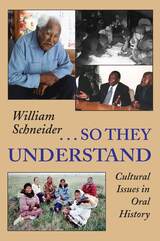 So They Understand
William Schneider
Utah State University Press, 2002 Illustrated with numerous stories collected from Alaska, the Yukon, and South Africa and further enlivened by the author's accessible style and experiences as a longtime oral historian and archivist, So They Understand is a comprehensive study of the special challenges and concerns involved in documenting, representing, preserving, and interpreting oral narratives. The title of the book comes from a quotation by Chief Peter John, the traditional chief of the Tanana Chiefs region in central Alaska: "In between the lines is something special going on in their minds, and that has got to be brought to light, so they understand just exactly what is said." William Schneider discusses how stories work in relation to their cultures and performance settings, sorts out different types of stories-from broad genres such as personal narratives and life histories to such more specific and less-often considered types as presentations at hearings and other public gatherings-and examines a variety of critical issues, including the roles and relationships of storytellers and interviewers, accurate representation and preservation of stories and their performances, understanding and interpreting their cultural backgrounds and meanings, and intellectual property rights. Throughout, he blends a diverse selection of stories, including his own, into a text rich with pertinent examples. William Schneider is curator of oral history and associate in anthropology at the Rasmuson Library, University of Alaska Fairbanks, where he introduced oral history "jukeboxes," innovative interactive, multimedia computer files that present and cross-reference audio oral history and related photos and maps. Among other works, his publications include, as editor, Kusiq: An Eskimo Life History from the Arctic Coast of Alaska and, with Phyllis Morrow, When Our Words Return: Writing, Hearing, and Remembering Oral Traditions of Alaska and the Yukon.
 So Unimaginable a Price: Baldwin and the Black Atlantic
John E. Drabinski
Northwestern University Press, 2026 Rereading Baldwin’s nonfiction in the context of midcentury Black Atlantic thought
James Baldwin’s nonfiction offers some of the most important and challenging thinking on the experience of race, history, and memory in the Black Atlantic world. Yet much of the scholarly literature on Baldwin’s writing reads his work from inside the sociocultural context of the United States, alongside key interlocutors like Richard Wright, Ralph Ellison, and Lorraine Hansberry. So Unimaginable a Price: Baldwin and the Black Atlantic shifts the critical frame, examining Baldwin’s work as part of a midcentury moment across the wider Atlantic world and tying his reflections to those of thinkers in the Caribbean and Africa to underscore the widening sense, as well as the particularity, of his critical claims. Who is Baldwin to the Atlantic world? And who, then, is Baldwin to the United States? John E. Drabinski recasts Baldwin as a Black Atlantic writer whose unique qualities as a thinker are enhanced by their similarities and differences with fellow writers of liberation in the global Black world.
 So We Died: A Memoir of Life and Death in the Ghetto of Šiauliai, Lithuania
Levi Shalit, translated and edited by Veronica Belling, Ellen Cassedy, and Andrew Cassel, introduction by Veronica Belling, afterword by Justin Cammy
University of Alabama Press, 2025 In the shadow of death, Levi Shalit wrote to remember—so we would never forget. So We Died: A Memoir of Life and Death in the Ghetto of Šiauliai, Lithuania (Azoy zaynen mir geshtorbn) is a powerful eyewitness account of the Shavl ghetto during the Nazi occupation of Lithuania. Written in Yiddish by Levi Shalit and available now for the first time in English, the work fills a stark void in historical records. Shalit divided his work into four sections. In the first, he describes the German invasion of Šiauliai, the murder of thousands of Jews in the city and surrounding countryside, and the forced relocation of the surviving Jews into the Shavl ghetto. In the second, he describes daily life in the ghetto in engrossing detail. In the third, titled “The Masada Book,” Shalit describes ghetto residents’ attempt to organize a resistance group of which he himself was a member. In the fourth, he narrates the transformation of the ghetto into a concentration camp and the seizure and deportation of the community’s children. Few accounts of the Shavl ghetto survived the war. Shalit’s work offers English-language readers a rare insight into a vital chapter of history. The translators artfully reveal Shalit’s literary prowess and the ways he illuminated the Shavl ghetto’s daily struggles, false hopes, and atrocities. More than an account of a previously overlooked episode in Holocaust history, So We Died is a testament to the enduring power of the human spirit in the face of unspeakable tragedy. It offers keen insight into a time of war, fascism, and resistance. A must-read for anyone seeking understanding and remembrance.
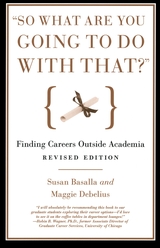 "So What Are You Going to Do with That?": Finding Careers Outside Academia
Susan Basalla and Maggie Debelius
University of Chicago Press, 2007
Graduate schools churn out tens of thousands of Ph.D.’s and M.A.’s every year. Half of all college courses are taught by adjunct faculty. The chances of an academic landing a tenure-track job seem only to shrink as student loan and credit card debts grow. What’s a frustrated would-be scholar to do? Can he really leave academia? Can a non-academic job really be rewarding—and will anyone want to hire a grad-school refugee?
With “So What Are You Going to Do with That?” Susan Basalla and Maggie Debelius—Ph.D.’s themselves—answer all those questions with a resounding “Yes!” A witty, accessible guide full of concrete advice for anyone contemplating the jump from scholarship to the outside world, “So What Are You Going to Do with That?” covers topics ranging from career counseling to interview etiquette to translating skills learned in the academy into terms an employer can understand and appreciate. Packed with examples and stories from real people who have successfully made this daunting—but potentially rewarding— transition, and written with a deep understanding of both the joys and difficulties of the academic life, this fully revised and up-to-date edition will be indispensable for any graduate student or professor who has ever glanced at her CV, flipped through the want ads, and wondered, “What if?”
“I will absolutely be recommending this book to our graduate students exploring their career options—I’d love to see it on the coffee tables in department lounges!”—Robin B. Wagner, former associate director for graduate career services, University of Chicago
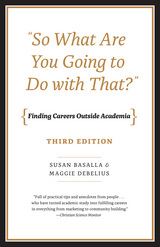 "So What Are You Going to Do with That?": Finding Careers Outside Academia, Third Edition
Susan Basalla and Maggie Debelius
University of Chicago Press, 2014 Graduate schools churn out tens of thousands of PhDs and MAs every year. Yet more than half of all college courses are taught by adjunct faculty, which means that the chances of an academic landing a tenure-track job seem only to shrink as student loan and credit card debts grow. What’s a frustrated would-be scholar to do? Can she really leave academia? Can a job outside the academy really be rewarding? And could anyone want to hire a grad-school refugee?
In this third edition of “So What Are You Going to Do with That?”, thoroughly revised with new advice for students in the sciences, Susan Basalla and Maggie Debelius—PhDs themselves—answer all those questions with a resounding “Yes!” A witty, accessible guide full of concrete advice for anyone contemplating the jump from scholarship to the outside world, “So What Are You Going to Do with That?” covers topics ranging from career counseling to interview etiquette to how to translate skills learned in the academy into terms an employer can understand and appreciate. Packed with examples and stories from real people who have successfully made this daunting—but potentially rewarding—transition, and written with a deep understanding of both the joys and difficulties of the academic life, this fully updated guide will be indispensable for any graduate student or professor who has ever glanced at his or her CV, flipped through the want ads, and wondered, “What if?”
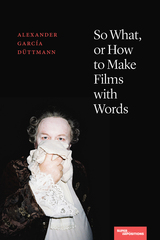 So What, or How to Make Films with Words
Alexander García Düttmann
Northwestern University Press, 2023 A series of philosophical meditations on the nature of aesthetics across a wide array of filmmaking styles
Images, whether filmic or not, cannot be replaced by words. Yet words can make images. This is the general thesis underlying So What, a collection of essays on canonical filmmakers like Luchino Visconti and Orson Welles; more experimental directors, such as Marguerite Duras and Albert Serra; and visual artists, including Hollis Frampton and Agnes Martin. Alexander García Düttmann aims to make their films as if they did not precede his text, capturing their idea and experience.
If the relationship between filmic image and text is a heterogeneous one, then this heterogeneity must leave a trace. This is why the book’s chapters are organized not according to historical periods or on the basis of film theories but rather by single concepts that function like dictionary entries. The chapters adopt different forms, blurring the lines between art and philosophy. So What is a practical exercise in “making films with words,” inviting readers to draw out insights from its conceptual play.
So What compiles previously untranslated and hard-to-find essays into a single volume, one that represents the absorbing and singular thought process of a major contemporary philosopher.
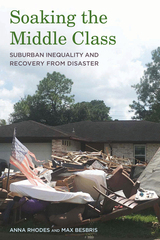 Soaking the Middle Class: Suburban Inequality and Recovery from Disaster
Anna Rhodes
Russell Sage Foundation, 2022 Extreme weather is increasing in scale and severity as global warming worsens. While poorer communities are typically most vulnerable to the negative effects of climate change, even well-resourced communities are increasingly vulnerable as climate-related storms intensify. Yet little is known about how middle-class communities are responding to these storms and the resulting damage. In Soaking the Middle Class, sociologists Anna Rhodes and Max Besbris examine how a middle-class community recovers from a climate-related disaster and how this process fosters inequality within these kinds of places.
In 2017, Hurricane Harvey dropped record-breaking rainfall in Southeast Texas resulting in more than $125 billion in direct damages. Rhodes and Besbris followed 59 flooded households in Friendswood, Texas, for two years after the storm to better understand the recovery process in a well-resourced, majority-White, middle-class suburban community. As such, Friendswood should have been highly resilient to storms like Harvey, yet Rhodes and Besbris find that the recovery process exacerbated often-invisible economic inequality between neighbors. Two years after Harvey, some households were in better financial positions than they were before the storm, while others still had incomplete repairs, were burdened with large new debts, and possessed few resources to draw on should another disaster occur.
Rhodes and Besbris find that recovery policies were significant drivers of inequality, with flood insurance playing a key role in the divergent recovery outcomes within Friendswood. Households with flood insurance prior to Harvey tended to have higher incomes than those that did not. These households received high insurance payouts, enabling them to replace belongings, hire contractors, and purchase supplies. Households without coverage could apply for FEMA assistance, which offered considerably lower payouts, and for government loans, which would put them into debt. Households without coverage found themselves exhausting their financial resources, including retirement savings, to cover repairs, which put them in even more financially precarious positions than they were before the flood.
The vast majority of Friendswood residents chose to repair and return to their homes after Hurricane Harvey. Even this devastating flood did not alter their plans for long-term residential stability, and the structure of recovery policies only further oriented homeowners towards returning to their homes. Prior to Harvey, many Friendswood households relied on flood damage from previous storms to judge their vulnerability and considered themselves at low risk. After Harvey, many found it difficult to assess their level of risk for future flooding. Without strong guidance from federal agencies or the local government on how to best evaluate risk, many residents ended up returning to potentially unsafe places.
As climate-related disasters become more severe, Soaking the Middle Class illustrates how inequality in the United States will continue to grow if recovery policies are not fundamentally changed.
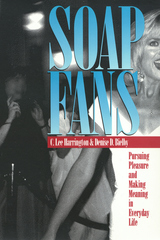 Soap Fans: Pursuing Pleasure and Making Meaning in Everyday Life
C. Lee Harrington and Denise D. Bielby
Temple University Press, 1995 Do soap opera fans deserve their reputation as lonely people, hopeless losers, or bored housewives? No, according to C. Lee Harrington and Denise D. Bielby. These authors—soap fans themselves—argue that soap fans are normal individuals who translate their soap watching into a broad range of public and private experience. People who cut across all categories of age, gender, race, ethnicity, income, education, and ideology incorporate a love of the soaps into their day-to-day leisure activities. Interviews with soap opera viewers, actors, writers, producers, directors, the daytime press, and fan club staff members reveal fascinating details about the inside world of fandom and the multitude of outlets for fan expression—clubs, newsletters, electronic bulletin boards, and public events. Numerous examples illustrate the pleasure fans derive from critiquing characters, speculating on plot twists, and swapping memorabilia. Examining the experiences that shape fan culture, Harrington and Bielby analyze the narrative structure and various aspects of the production of the soaps. Their examination reveals that the "meaning" of soaps is complex, individualized, and not simply a reflection of the narrative content of the stories. The authors show fans who actively contemplate what it means to be a fan, and who adjust their level of involvement accordingly.
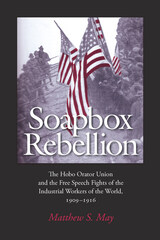 Soapbox Rebellion: The Hobo Orator Union and the Free Speech Fights of the Industrial Workers of the World, 1909-1916
Matthew S. May
University of Alabama Press, 2013 Soapbox Rebellion, a new critical history of the free speech fights of the Industrial Workers of the World (IWW), illustrates how the lively and colorful soapbox culture of the “Wobblies” generated novel forms of class struggle. From 1909 to 1916, thousands of IWW members engaged in dozens of fights for freedom of speech throughout the American West. The volatile spread and circulation of hobo agitation during these fights amounted to nothing less than a soapbox rebellion in which public speech became the principal site of the struggle of the few to exploit the many. While the fights were not always successful, they did produce a novel form of fluid union organization that offers historians, labor activists, and social movement scholars a window into an alternative approach to what it means to belong to a union. Matthew May coins the phrase “Hobo Orator Union” to characterize these collectives. Soapbox Rebellion highlights the methodological obstacles to recovering a workers’ history of public address; closely analyzes the impact of hobo oratorical performances; and discusses the implications of the Wobblies’ free speech fights for understanding grassroots resistance and class struggle today—in an era of the decline of the institutional business union model and workplace contractualism.
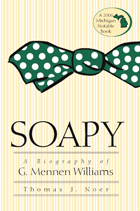 Soapy: A Biography of G. Mennen Williams
Thomas J. Noer
University of Michigan Press, 2005 "This is an important book about an important public official, G. Mennen 'Soapy' Williams---an unabashed liberal, a true humanitarian, and a great patriot."
---George McGovern
"Soapy Williams had a deep talent not only to compel but on occasion to repel."
---John Kenneth Galbraith
"Thomas Noer has written a model biography of a fascinating political figure. He brings Williams to life with all his contradictions, old-fashioned qualities, and admirable idealism."
---Robert Divine, George W. Littlefield Professor Emeritus in American History, University of Texas
"G. Mennen 'Soapy' Williams was not only a giant in the 20th century history of the Michigan Democratic Party, the history of the state of Michigan and our nation-he was a giant ahead of his time. Throughout his long and extremely distinguished career as Governor of Michigan, Assistant Secretary of State for African Affairs and Chief Justice of the Michigan Supreme Court, Soapy maintained an unwavering commitment to equality, justice and civil rights for all people."
---Senator Carl Levin
In this first complete biography of G. Mennen "Soapy" Williams, author Thomas Noer brings to life the story of one of the most controversial and colorful politicians in twentieth-century American politics and a giant in the Michigan Democratic Party.
In 1948, winning a stunning upset, Williams became Michigan's second Democratic governor since the Civil War and was reelected five times. He served under Kennedy and Johnson as Assistant Secretary of State for Africa, briefly held the post of U.S. Ambassador to the Philippines, and was a member of the Michigan Supreme Court from 1970 to 1986, serving as Chief Justice in his last term.
Sporting his instantly recognizable trademark green and white polka-dot bow tie, Williams was a flamboyant character. He was also known for his energetic campaign style: he could say "hello" in seventeen languages, would shake hands with as many as five thousand factory workers a day, and made seemingly endless diplomatic trips to Africa. All of this captured the attention of the media and the public and made Williams into a celebrity.
Beneath his showy public persona, however, Williams also made important contributions to American diplomatic and political history. He built an unrivaled political machine in Michigan, bringing organized labor, African Americans, and ethnic groups into a new coalition; influenced the shift in American policy toward support for African independence; and wrote landmark decisions as a jurist on the Michigan Supreme Court.
The fascinating story of a complex and complicated man, Soapy will introduce one of the great American political figures of the twentieth century to a new generation of readers.
 Sober Men and True: Sailor Lives in the Royal Navy, 1900-1945
Christopher McKee
Harvard University Press, 2002 The image of the naval sailor is that of an enigmatic but compelling figure, a globe-trotting adventurer, swaggering and irresponsible in port but swift to flex the national muscle at sea and beyond. Appealing as this popular image may be, scant effort has been expended to reveal the truth behind the stereotype.
Thanks to Christopher McKee's groundbreaking work, it is now possible to hear from sailors themselves--in this case, those who served in Great Britain's Royal Navy during the first half of the twentieth century. McKee has scoured sailors' unpublished diaries, letters, memoirs, and oral interviews to uncover the lives and secret thoughts of British men of the lower deck. From working-class childhoods teetering on the edge of poverty to the hardships of finding civilian employment after leaving the navy; from sexual initiation in the brothels of Oran and Alexandria to the terror of battle, the former sailors speak with candor about all aspects of naval life: the harsh discipline and deep comradeship, the shipboard homoeroticism, the pleasures and temptations of world travel, and the responsibilities of marriage and family.
McKee has shaped the first authentic model of the naval enlisted experience, an account not crafted by officers or civilian reformers but deftly told in the sailors' own voices. The result is a poignant and complex portrait of lower-deck lives.
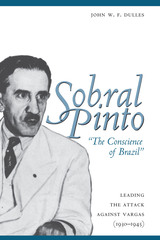 Sobral Pinto, "The Conscience of Brazil": Leading the Attack against Vargas (1930-1945)
By John W. F. Dulles
University of Texas Press, 2002 Praised by his admirers as "one of those rare heroic figures out of Plutarch" and as "an intrepid Don Quixote," Brazilian lawyer Heráclito Fontoura Sobral Pinto (1893-1991) was the most consistently forceful opponent of dictator Getúlio Vargas. Through legal cases, activism in Catholic and lawyers' associations, newspaper polemics, and a voluminous correspondence, Sobral Pinto fought for democracy, morality, and justice, particularly for the downtrodden. This book is the first of a projected two-volume biography of Sobral Pinto. Drawing on Sobral's vast correspondence, which was not previously available to researchers, John W. F. Dulles confirms that Sobral Pinto was a true reformer, who had no equal in demonstrating courage and vehemence when facing judges, tribunals, and men in power. He traces the leading role that Sobral played in opposing the Vargas regime from 1930 to 1945 and sheds light on the personalities and activities of powerful figures in the National Security Tribunal, the police, the censorship bureau, and the Catholic Church. In addition to the many details that this volume adds to Brazilian history, it illuminates the character of a man who sacrificed professional advancement and emolument in the interest of fighting for justice and charity. Thus, it will be important reading not only for students of Brazilian history, but also for a wider audience dedicated to the crusade for human rights and political freedom and the reformers who carry on that struggle.
 Soccer
Jean-Philippe Toussaint
Rutgers University Press, 2019 Growing up in Belgium, soccer was Jean-Philippe Touissant’s life, a passion not shared by his bookish family. Now an acclaimed novelist, essayist, and filmmaker, he reflects upon his lifelong love for the game with an intellectual’s keen mind and a sports fan’s heart. What, he ponders, has a lifetime of soccer fandom taught him about life and the passage of time itself.
Soccer takes readers on an idiosyncratic journey that delves deep into the author’s childhood memories, but also transports us to World Cup matches in Japan, Germany, South Africa, and Brazil. Along the way, it kicks around such provocative questions as: How does soccer fandom both support and transcend nationalism? How are our memories of soccer matches both collective and distinctly personal? And how can a game this beautiful and this ephemeral be adequately captured in words?
Part travelogue, part memoir, and part philosophical essay, Soccer is entirely unique, a thrilling departure from the usual clichés of sports writing. Even readers with little knowledge of the game will be enthralled by Touissant’s profound musings and lyrical prose.
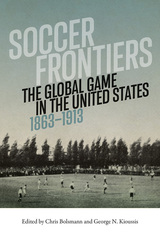 Soccer Frontiers: The Global Game in the United States, 1863–1913
Chris Bolsmann
University of Tennessee Press, 2021 Winner of the 2022 North American Society for Sport History Book Award!
The early history of soccer in the United States has received relatively little scholarly attention. While the sport’s failure to make cultural inroads has been the source of much reflection and retrospection, other pastimes such as baseball, basketball, and American football have been covered far more extensively. Soccer Frontiers helps to fill this gap and correct the widespread notion that soccer was unfamiliar in the United States before thelate twentieth century.
Editors Chris Bolsmann and George N. Kioussis’s collection sheds light on America’s little-known soccer history by focusing on the game’s presence in major American cities between 1863 and 1913. As waves of immigrants arrived and American cities began to industrialize and become sizable cultural hubs, soccer, too, began to flourish. With essays focused on the years between the Civil War and World War I—a period which saw the creation of both the English Football Association and the US Soccer Federation—this volume also offers diverse regional representation, moving from New England to the South to the West Coast.
Soccer Frontiers seeks to identify the distinctive yet understudied traits of American soccer, thereby contributing an important missing piece to the broader puzzle of American sport history.
CHRIS BOLSMANN is a professor in the Department of Kinesiology at California State University, Northridge. He is coauthor, with Dilwyn Porter, English Gentlemen and World Soccer: Corinthians, Amateurism and the Global Game and coeditor of two books with Peter Alegi: Africa’s World Cup: Critical Reflections on Play, Patriotism, Spectatorship, and Space and South Africa and the Global Game: Football, Apartheid and Beyond.
GEORGE N. KIOUSSIS is an assistant professor in the Department of Kinesiology at California State University, Northridge. His work has appeared in the Journal of Sport History, Sport in History, the International Review for the Sociology of Sport, and Soccer & Society. He currently serves as an editor for Sport in History.
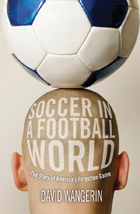 Soccer in a Football World: The Story of America's Forgotten Game
David Wangerin
Temple University Press, 2008 David Beckham’s arrival in Los Angeles represents the latest attempt to jump-start soccer in the United States where, David Wangerin says, it “remains a minority sport.” With the rest of the globe so resolutely attached to the game, why is soccer still mostly dismissed by Americans? Calling himself “a soccer fan born in the wrong country at nearly the wrong time,” Wangerin writes with wit and passion about the sport’s struggle for acceptance in Soccer in a Football World. A Wisconsin native, he traces the fragile history of the game from its early capitulation to gridiron on college campuses to the United States’ impressive performance at the 2002 World Cup. Placing soccer in the context of American sport in general, he chronicles its enduring struggle alongside the country’s more familiar pursuits and recounts the shifting attitudes toward the “foreign” game. His story is one that will enrich the perspective of anyone whose heart beats for the sport, and is curious as to where the game has been in America—and where it might be headed.
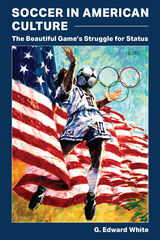 Soccer in American Culture: The Beautiful Game’s Struggle for Status
G. Edward White
University of Missouri Press, 2023 2022 Choice Outstanding Academic Title
In Soccer in American Culture: The Beautiful Game’s Struggle for Status, G. Edward White seeks to answer two questions. The first is why the sport of soccer failed to take root in the United States when it spread from England around much of the rest of the world in the late nineteenth and twentieth centuries. The second is why the sport has had a significant renaissance in America since the last decade of the twentieth century, to the point where it is now the 4th largest participatory sport in the United States and is thriving, in both men’s and women’s versions, at the high school, college, and professional levels. White considers the early history of “Association football” (soccer) in England, the persistent struggles by the sport to establish itself in America for much of the twentieth century, the role of public high schools and colleges in marginalizing the sport, the part played by FIFA, the international organization charged with developing soccer around the globe, in encumbering the development of the sport in the United States, and the unusual history of women’s soccer in America, which evolved in the twentieth century from a virtually nonexistent sport to a major factor in the emergence of men’s—as well as women's—soccer in the U.S. in the twentieth century. Incorporating insights from sociology and economics, White explores the multiple factors that have resulted in the sport of soccer struggling to achieve major status in America and why it currently has nothing like the cultural impact of other popular American sports—baseball and American football— which can be seen by the comparative lack of attention paid to it in sports media, its low television ratings, and virtually nonexistent radio broadcast coverage.
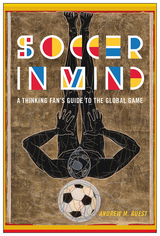 Soccer in Mind: A Thinking Fan's Guide to the Global Game
Andrew M. Guest
Rutgers University Press, 2022 From the FIFA World Cup to pick-up games at your local park, soccer is the closest thing in our world to a universal entertainment. Many writers use this global popularity to describe the game’s winners and losers, but what happens when we use social science to explore how soccer intersects with culture, society, and the self?
This book provides a thinking fan’s guide to the world’s most popular game, proposing a way of engaging soccer that sparks intellectual curiosity and employs critical consciousness. Using stories and data, along with ideas from sociology, psychology, and across the social sciences, it provides readers with new ways of understanding fanaticism, peak performance, talent development, and more. Drawing on concepts ranging from cognitive bias to globalization, it illuminates meanings of the game for players and fans while investigating impacts on our lives and communities. While it considers soccer cultures across the globe, the book also analyzes what makes U.S. soccer culture special, including its embrace of the women’s game.
As a scholar, former minor league player and coach, and fan, Andrew Guest offers a distinctive perspective on soccer in society. Whatever name you call it, and whatever your interest in it, Soccer in Mind will enrich your own view of the one truly global game.
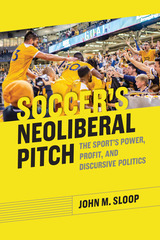 Soccer's Neoliberal Pitch: The Sport's Power, Profit, and Discursive Politics
John M. Sloop
University of Alabama Press, 2023 A powerful cultural critique of soccer’s public rhetoric
American sports agnostics might raise an eyebrow at the idea that soccer represents a staging ground for cultural, social, and political possibility. It is just another game, after all, in a society where mass-audience spectator sports largely avoid any political stance other than a generic, corporate-friendly patriotism. But John M. Sloop picks up on the work of Laurent Dubois and others to see in American soccer—a sport that has achieved immense participation and popularity despite its struggle to establish major league status—a game that permits surprisingly diverse modes of thinking about national identity because of its marginality.
As a rhetorician who draws on both critical theory and culture, Sloop seeks to read soccer as the game intersects with gender, race, sexuality, and class. The result of this engagement is a sense of both enormous possibility and real constraint. If American soccer offers more possibility because of its marginality, looking at how those possibilities are constrained can provide valuable insights into neoliberal logics of power, profit, politics, and selfhood.
In Soccer’s Neoliberal Pitch, Sloop analyzes a host of soccer-adjacent phenomena: the equal pay dispute between the US women’s national team and the US Soccer Federation, the significance of hooligan literature, the introduction of English soccer to American TV audiences, the strange invisibility of the Mexican soccer league despite its consistent high TV ratings, and the reading of US national teams as “underdogs” despite the nation’s quasi-imperial dominance of the Western hemisphere. An invaluable addition to a growing bookshelf on soccer titles, Soccer’s Neoliberal Pitch serves as a model for critical cultural work with sports, with appeal to not only sports studies, but cultural studies, communication, and even gender studies classrooms.
Sociability and Its Enemies: German Political Theory After 1945
Jakob Norberg
Northwestern University Press, 2014 Sociability and Its Enemies contributes both to contemporary studies of political theory and to discourse on postwar Germany by reconstructing the arguments concerning the nature and value of sociability as a form of interaction and interconnection particular to modern bourgeois society. Jakob Norberg argues that the writings of Hannah Arendt, Jürgen Habermas, Carl Schmitt, and the historian Reinhart Koselleck present conflicting responses to a hitherto neglected question or point of contention: whether bourgeois sociability should serve as a therapeutic practice and politically relevant ideal for postwar Germany. The book sheds light on previously neglected historical and conceptual connections among political theorists, and it enriches established narratives of postwar intellectual history.
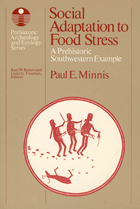 Social Adaptation to Food Stress: A Prehistoric Southwestern Example
Paul E. Minnis
University of Chicago Press, 1985 Combining anthropology, archeology, and evolutionary theory, Paul E. Minnis develops a model of how tribal societies deal with severe food shortages. While focusing on the prehistory of the Rio Mimbres region of New Mexico, he provides comparative data from the Fringe Enga of New Guinea, the Tikopia of Tikopia Island, and the Gwembe Tonga of South Africa.
Minnis proposes that, faced with the threat of food shortages, nonstratified societies survive by employing a series of responses that are increasingly effective but also are increasingly costly and demand increasingly larger cooperative efforts. The model Minnis develops allows him to infer, from evidence of such factors as population size, resource productivity, and climate change, the occurrence of food crises in the past. Using the Classic Mimbres society as a test case, he summarizes the regional archeological sequence and analyzes the effects of environmental fluctuations on economic and social organization. He concludes that the responses of the Mimbres people to their burgeoning population were inadequate to prevent the collapse of the society in the late twelfth century.
In its illumination of the general issue of responses to food shortages, Social Adaptation to Food Stress will interest not only archeologists but also those concerned with current food shortages in the Third World. Cultural ecologists and human geographers will be able to derive a wealth of ideas, methods, and data from Minnis's work.
 A Social and Economic History of Twentieth-Century Europe
Gerold Ambrosius and William H. Hubbard
Harvard University Press, 1989 In the decades since the end of the Second World War, the unification of Europe has been a subject of enormous importance and tension to politicians, citizens, and scholars. Yet lacking the basic demographic, economic, and social data that would provide a fuller picture of what this integration will involve, the debate has produced more heat than light.
This book, the most comprehensive single-volume source of information available on the social and economic transformations in Europe over the past hundred years, fills that critical gap in our knowledge. In its pages we find examinations of population trends (including growth, mortality, national and international migration, and fertility), social structures (work, income, lifestyle, consumer patterns, welfare programs), and economic structures (agriculture, industry, and services), and an integrative overview of changes in both the organization of the economy and the role of the state in economic management. Paying particular attention to the period since 1950, the authors summarize the developmental paths of the four socioeconomic regions of Europe.The data and analyses provided here make this book an invaluable resource to professionals and scholars in a wide range of fields, from history, politics, and economics to journalism and international business.
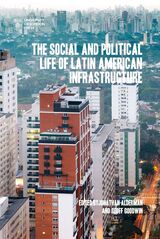 The Social and Political Life of Latin American Infrastructures
Edited by Jonathan Alderman and Geoff Goodwin
University of London Press, 2022 Understanding Latin American identity, history, and politics through its infrastructure and architecture.
From roads, railways, statues, and bridges, infrastructure provides a unique lens through which to view our own national histories and societies. Serving as an important conduit between individuals and the state, infrastructure can help mediate citizenship, reshape social relations between people both within and across communities, and has the capacity to underpin—or indeed, undermine—nation-building.
Over the last century, infrastructure has transformed Latin America. Roads, railways, and airports have increased connectivity between spaces, peoples, and markets. Cables, switches, and tunnels have connected households to electricity grids, water systems, and digital technology. Public buildings, parks, and monuments have reshaped towns and cities and emerged as sites to construct and contest citizenship. Infrastructure has been welcomed and celebrated in Latin America, but it has also been resisted and destroyed.
Based on recent, original research, the essays in this collection cover a range of pressing infrastructural considerations, including sustainability, water conflict, extractive mining, and public housing in Brazil, Chile, Cuba, Colombia, Ecuador, and Mexico to better understand how infrastructure has reshaped Latin America over the past century.
Social and Political Philosophy
Peter A. French, Theodore E. Uehling Jr., and Howard K. Wettstein, Editors
University of Minnesota Press, 1982
Social and Political Philosophy was first published in 1982. Minnesota Archive Editions uses digital technology to make long-unavailable books once again accessible, and are published unaltered from the original University of Minnesota Press editions.
Social Aspects of Applied Human Genetics
James R. Sorenson
Russell Sage Foundation, 1971 This report explores the complex ethical, political, psychological, and economic questions that arise from developments in medical genetics. It reviews research in applied genetics at the interface of the social and bio-medical fields, including the counseling and study of birth control, as well as the active treatment and selection of individual genetic attributes.
Social Aspects of the Prolongation of Life
Diana Crane
Russell Sage Foundation, 1969 A volume of the Russell Sage Foundation's Social Science Frontiers, occasional publications reviewing new fields for social science development. This paper explores the links between the social and biomedical sciences concerning the prolongation and termination of life, with the aim to stimulate scholars, foundations, and government agencies to further study death and dying in American society.
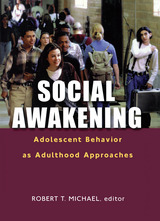 Social Awakening: Adolescent Behavior as Adulthood Approaches
Robert T. Michael
Russell Sage Foundation, 2001 While headlines about violent crimes committed by adolescents often capture the public's attention, many more young people excel in the classroom, on the athletic field, and in the community. Why do some youngsters strive to achieve while others court disaster? Using new data from the National Longitudinal Survey of Youth (NLSY), a survey of more than nine thousand young people between the ages of twelve and sixteen, Social Awakening explores the choices adolescents make about their lives and their futures. The book focuses on the key role the family plays as teenagers navigate the difficult transition from childhood to adulthood. Social Awakening analyzes a wide range of adolescent behavior and issues that affect teenagers' lives—from their dating and sexual behavior, drug and alcohol use, and physical and mental well-being, to their career goals and expectations for the future. The findings strengthen our understanding of how an array of family characteristics—single parenthood, income, educational level, race, and geographical location—influences teens' lives. One contributor explores why children from single-parent families are more likely to perform poorly in school and to indulge in risky behavior, such as drug abuse or promiscuous sexual activity. Another chapter examines why children of parents with a college degree are less likely to engage in early sexual activity. And another looks at different levels of criminal behavior among urban and rural youths. One of the advantages of an in-depth interview such as the NLSY is the wide array of behavior and experiences by the same youths that can be mutually investigated. The analysis in Social Awakening helps confirm or refute what we think we know—to explore what we could not explore with older or less complex surveys. The NLSY, which forms the foundation of Social Awakening, will be updated annually over the coming decades to enable experts to learn how those who were adolescents at the dawn of the twenty-first century handled the move to adulthood. Social Awakening provides a compelling first look at these young peoples' lives.
 The Social Behavior of the Bees
Charles D. Michener
Harvard University Press, 1974 Although the honeybee is without doubt man's favorite social insect, and the most studied by him, there are twenty thousand other species of bees, many of which are social. This book is the first to offer a systematic account of social behavior in the entire super family Apoidea. Of all the social insects, the various species of bees exhibit perhaps the broadest spectrum of social behavior, including intermediate stages which are scarce or totally extinct in other groups; in this respect the bees are particularly appropriate subjects for evolutionary study.
With the aid of more than 200 illustrations, Charles Michener characterizes and describes all levels of social organization in the bees—from simple aggregations of solitary nests to elaborate, eusocial colonies. He reviews the entire repertoire of social behavior in bees and gives detailed attention to mechanisms of communication, division of labor, determination of sex and caste, maintenance and control of nest conditions, and organization of defense. In a major chapter the evolutionary context of the bee societies is extensively explored; the author examines the selective advantages and disadvantages entailed in evolving nonreproductive castes, the problem of multiple, independent origins of eusociaI behavior, and the question of “direction” in the evolution of social behavior. The final section is an account of the life history and behavioral attributes of each of the groups of social bees.
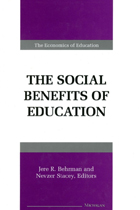 The Social Benefits of Education
Jere R. Behrman and Nevzer Stacey, Editors
University of Michigan Press, 1997 For decades, the primary argument in justifying education has been based on its direct economic effects. Yet education also provides "social benefits" for individuals and society at large, including a better way of taking care of ourselves, and consequently creating a better society to live in. Though it is difficult to quantify these social benefits, a more systematic analysis would improve our understanding of the full effects of education and provide a basis for considering related policies. The Office of Research of the United States Department of Education commissioned a series of papers on measuring these effects of education.
Those papers, revised and updated, are collected here. Kenneth J. Arrow provides perspective on education and preference formation, and Jere R. Behrman considers general conceptual and measurement issues in assessing the social benefits of education and policies related to education. These issues are taken up by experts in four fields--health, parenting, the environment, and crime. Themes addressed include measurement issues regarding what we mean by education and its benefits; basic analytical issues in assessing the impact of education on these social benefits using behavioral data; and whether the social benefits of education justify public policy interventions.
Jere R. Behrman is William R. Kenan Jr. Professor of Economics, University of Pennsylvania. Nevzer G. Stacey is Senior Research Analyst, Office of Educational Research, U.S. Department of Education.
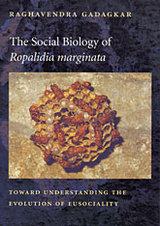 The Social Biology of Ropalidia marginata: Toward Understanding the Evolution of Eusociality
Raghavendra Gadagkar
Harvard University Press, 2001 In this book, the biologist Raghavendra Gadagkar focuses on the single species he has worked on throughout his career. Found throughout southern India, Ropalidia marginata is a primitively eusocial wasp--a species in which queens and workers do not differ morphologically and even the latter retain the ability to reproduce. New colonies may be founded by a single fertile female or by several, which then share reproductive and worker duties.
R. marginata has provided Gadagkar with a unique opportunity to study the evolution of eusociality; its long-lived dynasties can continue almost indefinitely, as old or weakened queens are replaced by young and healthy ones and new colonies are founded throughout the year. Understanding such primitively eusocial species is crucial, Gadagkar argues, if we are to understand the evolution of the greater degrees of sociality found in other wasp species and in ants, termites, and bees. His years of study have led him to believe that ecological, physiological, and demographic factors can be more important than genetic relatedness in the selection for or against social traits.
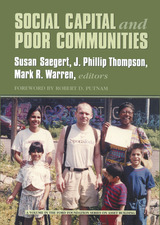 Social Capital and Poor Communities
Susan Saegert
Russell Sage Foundation, 2001 Neighborhood support groups have always played a key role in helping the poor survive, but combating poverty requires more than simply meeting the needs of day-to-day subsistence. Social Capital and Poor Communities shows the significant achievements that can be made through collective strategies, which empower the poor to become active partners in revitalizing their neighborhoods. Trust and cooperation among residents and local organizations such as churches, small businesses, and unions form the basis of social capital, which provides access to resources that would otherwise be out of reach to poor families. Social Capital and Poor Communities examines civic initiatives that have built affordable housing, fostered small businesses, promoted neighborhood safety, and increased political participation. At the core of each initiative lie local institutions—church congregations, parent-teacher groups, tenant associations, and community improvement alliances. The contributors explore how such groups build networks of leaders and followers and how the social power they cultivate can be successfully transferred from smaller goals to broader political advocacy. For example, community-based groups often become platforms for leaders hoping to run for local office. Church-based groups and interfaith organizations can lobby for affordable housing, job training programs, and school improvement. Social Capital and Poor Communities convincingly demonstrates why building social capital is so important in enabling the poor to seek greater access to financial resources and public services. As the contributors make clear, this task is neither automatic nor easy. The book's frank discussions of both successes and failures illustrate the pitfalls—conflicts of interest, resistance from power elites, and racial exclusion—that can threaten even the most promising initiatives. The impressive evidence in this volume offers valuable insights into how goal formation, leadership, and cooperation can be effectively cultivated, resulting in a remarkable force for change and a rich public life even for those communities mired in seemingly hopeless poverty. A Volume in the Ford Foundation Series on Asset Building
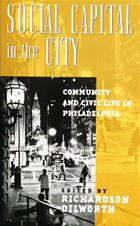 Social Capital in the City: Community and Civic Life in Philadelphia
edited by Richardson Dilworth
Temple University Press, 2006 Much of today's heated academic discussion about "social capital" is either theoretical in nature or revolves around national survey data, neither of which adequately explains the specific social networks that actually sustain life in cities. This is the first book about social capital that both spans a broad range of social contexts and time periods and focuses on a single city, Philadelphia. Contributors examine such subjects as voter behavior, education, neighborhood life, church participation, park advocacy, and political activism. The wide scope of the book reflects its concern for comprehending the uniqueness and diversity of urban social networks.Moving beyond typical definitions, the original essays collected here utilize case studies to demonstrate how social capital is nested in larger structures of power and cannot be appreciated without an understanding of context. Arguing that urban society is "social capital writ large," contributors complicate and deepen our knowledge of a crucial concept and its fruitful applications.
 Social Capital Online: Alienation and Accumulation
Kane X. Faucher
University of Westminster Press, 2018 What is ‘social capital’? The enormous positivity surrounding it conceals the instrumental economic rationality underpinning the notion as corporations silently sell consumer data for profit. Status chasing is just one aspect of a process of transforming qualitative aspects of social interactions into quantifiable metrics for easier processing, prediction, and behavioural shaping. A work of critical media studies, Social Capital Online examines the idea within the new ‘network spectacle’ of digital capitalism via the ideas of Marx, Veblen, Debord, Baudrillard and Deleuze. Explaining how such phenomena as online narcissism and aggression arise, Faucher offers a new theoretical understanding of how the spectacularisation of online activity perfectly aligns with the value system of neoliberalism and its data worship. Even so, at the centre of all, lie familiar ideas – alienation and accumulation – new conceptions of which he argues are vital for understanding today’s digital society.
Social Casework: A Problem-Solving Process
Helen Harris Perlman
University of Chicago Press, 1957 This is a basic book in social casework. Its thesis is that among all the complexities within the subject matter and operations of casework there are certain constant elements, forces, and processes which give coherence and unity to its practice. Mrs. Perlman identifies and analyzes these constants and views them within the logical framework of problem-solving. In turn, problem-solving as a casework process is examined in its likeness to normal human problem-solving efforts. The result is an approach to learning and thinking about casework which is at once organized, synthesized, and imaginative. The book's usefulness is enhanced by the author's lucid and pointed style.
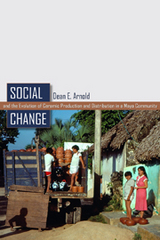 Social Change and the Evolution of Ceramic Production and Distribution in a Maya Community
Dean E. Arnold
University Press of Colorado, 2008 How and why do ceramics and their production change through time? Social Change and the Evolution of Ceramic Production and Distribution in a Maya Community is a unique ethno-archaeological study that attempts to answer these questions by tracing social change among potters and changes in the production and distribution of their pottery in a the Mexican community of Ticul between 1965 and 1997. Dean E. Arnold made ten visits to Ticul, Yucatan, Mexico, witnessing the changes in transportation infrastructure, the use of piped water, and the development of tourist resorts. Even in this context of social change and changes in the demand for pottery, most of the potters in 1997 came from the families that had made pottery in 1965. This book traces changes and continuities in that population of potters, in the demand and distribution of pottery, and in the procurement of clay and temper, paste composition, forming, and firing. In this volume, Arnold bridges the gap between archaeology and ethnography, using his analysis of contemporary ceramic production and distribution to generate new theoretical explanations for archaeologists working with pottery from antiquity. When the descriptions and explanations of Arnold’s findings in Ticul are placed in the context of the literature on craft specialization, a number of insights can be applied to the archaeological record that confirm, contradict, and nuance generalizations concerning the evolution of ceramic specialization. This book will be of special interest to anthropologists, archaeologists, and ethnographers.
 Social Change and the Family in Taiwan
Arland Thornton and Hui-Sheng Lin
University of Chicago Press, 1994 Until the 1940s, social life in Taiwan was generally organized through the family—marriages were arranged by parents, for example, and senior males held authority. In the following years, as Taiwan evolved rapidly from an agrarian to an industrialized society, individual decisions became less dependent on the family and more influenced by outside forces. Social Change and the Family in Taiwan provides an in-depth analysis of the complex changes in family relations in a society undergoing revolutionary social and economic transformation.
This interdisciplinary study explores the patterns and causes of change in education, work, income, leisure time, marriage, living arrangements, and interactions among extended kin. Theoretical chapters enunciate a theory of family and social change centered on the life course and modes of social organization. Other chapters look at the shift from arranged marriages toward love matches, as well as changes in dating practices, premarital sex, fertility, and divorce.
Contributions to the book are made by Jui-Shan Chang, Ming-Cheng Chang, Deborah S. Freedman, Ronald Freedman, Thomas E. Fricke, Albert Hermalin, Mei-Lin Lee, Paul K. C. Liu, Hui-Sheng Lin, Te-Hsiung Sun, Arland Thornton, Maxine Weinstein, and Li-Shou Yang.
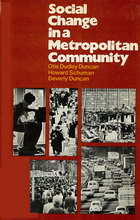 Social Change in a Metropolitan Community
Otis Dudley Duncan
Russell Sage Foundation, 1973 How has American society changed over the last fifteen years? Do we raise our children differently now than in 1953? Has women's liberation produced a shift in attitudes toward marriage or altered our idea about appropriate activities for women? Have our attitudes toward race undergone a significant revision? In this challenging volume, three eminent sociologists examine questions like these in the light of hard data which have become available, year by year, over the last two decades. The major purpose of the book is to demonstrate how measures of social change can be developed, capitalizing on past efforts in survey research. An omnibus survey, carried out in 1971, was designed almost entirely as a selective repitition of questions originally asked in the 1950s. It provides precise and reliable measures of change in such areas as marital and sex roles, social participation, child rearing, religious behavior, political orientations, and racial attitudes. Lucid and authoritative, Social Change in a Metropolitan Community presents a unique body of information on changes in public opinion, social norms, and institutional behavior. Its large number of statistical measurements are presented in an extremely accessible form—almost always as simple percentage comparisons. The research findings included here are unduplicated by any other study, and as a source of information on current social trends they provide fascinating reading for anyone who wishes to enlarge his understanding of the temper of our times.
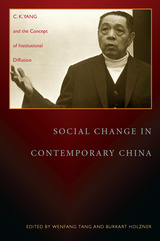 Social Change in Contemporary China: C.K. Yang and the Concept of Institutional Diffusion
Wenfang Tang
University of Pittsburgh Press, 2006
Social Change in Contemporary China offers a wide-ranging examination of Chinese institutional change in areas of education, religion, health care, economics, labor, family, and local communities in the post-Mao era. Based on the pioneering work of sociologist C. K. Yang (1911–1999), and his institutional diffusion theory, the essays analyze and develop the theory as it applies to both public and private institutions. The interrelationship of these institutions composes what Yang termed the Chinese “system,” and affects nearly every aspect of life. Yang examined the influence of external factors on each institution, such as the influence of Westernization and Communism on family, and the impact of industrialization on rural markets. He also analyzed the impact of public opinion and past culture on institutions, therein revealing the circular nature of diffusion. Perhaps most significant are Yang’s insights on the role of religion in Chinese society. Despite the common perception that China had no religion, he uncovers the influence of classical Confucianism as the basis for many ethical value systems, and follows its diffusion into state and kinship systems, as well as Taoism and Buddhism.
Writing in the early years of Communism, Yang had little hard data with which to test his theories. The contributors to this volume expand upon Yang’s groundbreaking approach and apply the model of diffusion to a rapidly evolving contemporary China, providing a window into an increasingly modern Chinese society and its institutions.
Social Change in Medieval Iran 132-628 AH (750-1231 AD): The Perspectives of Persian Historiography
Maryam Kamali
Amsterdam University Press, 2023 This study contributes to the history of social changes in Iran during the Abbasid Caliphate (AH 132–656, AD 750–1258) by foregrounding the perspective of Persian language historians – from Abu Ali Bal'ami (AH 363, AD 974), the first known Persian historian, to Atamelak Joveyni (AH 623–681, AD 1226–1283), the great historian of the Mongol Era. By applying the insights of Anthony Giddens and the theory of structuration to address the interactions of social agents and structures, this book provides a coherent narrative of social transformation in medieval Iran.
 Social Change in Soviet Russia
Alex Inkeles
Harvard University Press This collection of essays represents the results of more than twenty years of research by one of this country's foremost experts on Soviet sociology and psychology. Although Alex Inkeles covers a wide range of subjects, he has one primary purpose: to identify the main elements of the process of modernization in the Soviet social system. While he thus provides a broad description of Soviet institutions and the ways in which they function, his chief concern is to find the principles common to social change in all aspects of Soviet society and to determine if these principles underlie the same process in other countries, both those with and without a revolutionary tradition.
The author has divided his book into seven main sections: “Change and Continuity in Soviet Russia,” “The Psychology of Soviet Politics,” “Social Stratification,” “The Family, Church, and Ethnic Group,” “Mass Communications and Public Opinion,” “International Propaganda and Counterpropaganda,” and “Comparative Perspectives on the Future.”
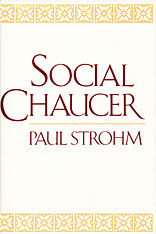 Social Chaucer
Paul Strohm
Harvard University Press, 1989 Each generation finds in Chaucer’s works the concerns and themes of its own era. But what of Chaucer’s contemporaries? For whom was he writing? With what expectations would his original audience have approached his works? In what terms did he and his audience understand their society, and how does his poetry embody a view of society?
These are some of the questions Paul Strohm addresses in this innovative look at the historical Chaucer. Fourteenth-century English society was, he reminds us, in a state of accelerating transition: feudalism was yielding to capitalism, and traditional ways of understanding one’s place in society were contending with new social paradigms. Those like Chaucer who lived on the fringe of gentility were particularly sensitive to these changes. Their social position opened the way to attractive possibilities, even as it exposed them to special perils.
Strohm draws on seldom-considered documents to describe Chaucer’s social circle and its experiences, and he relates this circle to implied and fictional audiences in the texts. Moving between major works like the Canterbury Tales and less frequently discussed works like Complaint of Mars, he suggests that Chaucer’s poetry not only reproduces social tensions of the time but also proposes conciliatory alternatives. His analysis yields a fuller understanding of Chaucer’s world and new insight into the social implications of literary forms and styles.
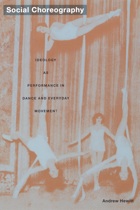 Social Choreography: Ideology as Performance in Dance and Everyday Movement
Andrew Hewitt
Duke University Press, 2005 Through the concept of “social choreography” Andrew Hewitt demonstrates how choreography has served not only as metaphor for modernity but also as a structuring blueprint for thinking about and shaping modern social organization. Bringing dance history and critical theory together, he shows that ideology needs to be understood as something embodied and practiced, not just as an abstract form of consciousness. Linking dance and the aesthetics of everyday movement—such as walking, stumbling, and laughter—to historical ideals of social order, he provides a powerful exposition of Marxist debates about the relation of ideology and aesthetics. Hewitt focuses on the period between the mid-nineteenth century and the early twentieth and considers dancers and social theorists in Germany, Britain, France, and the United States. Analyzing the arguments of writers including Friedrich Schiller, Theodor Adorno, Hans Brandenburg, Ernst Bloch, and Siegfried Kracauer, he reveals in their thinking about the movement of bodies a shift from an understanding of play as the condition of human freedom to one prioritizing labor as either the realization or alienation of embodied human potential. Whether considering understandings of the Charleston, Isadora Duncan, Nijinsky, or the famous British chorus line the Tiller Girls, Hewitt foregrounds gender as he uses dance and everyday movement to rethink the relationship of aesthetics and social order.
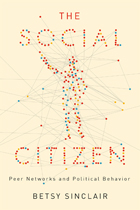 The Social Citizen: Peer Networks and Political Behavior
Betsy Sinclair
University of Chicago Press, 2012 Human beings are social animals. Yet despite vast amounts of research into political decision making, very little attention has been devoted to its social dimensions. In political science, social relationships are generally thought of as mere sources of information, rather than active influences on one’s political decisions. Drawing upon data from settings as diverse as South Los Angeles and Chicago’s wealthy North Shore, Betsy Sinclair shows that social networks do not merely inform citizen’s behavior, they can—and do—have the power to change it. From the decision to donate money to a campaign or vote for a particular candidate to declaring oneself a Democrat or Republican, basic political acts are surprisingly subject to social pressures. When members of a social network express a particular political opinion or belief, Sinclair shows, others notice and conform, particularly if their conformity is likely to be highly visible. We are not just social animals, but social citizens whose political choices are significantly shaped by peer influence. The Social Citizen has important implications for our concept of democratic participation and will force political scientists to revise their notion of voters as socially isolated decision makers.
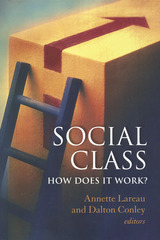 Social Class: How Does It Work?
Annette Lareau
Russell Sage Foundation, 2008 Class differences permeate the neighborhoods, classrooms, and workplaces where we lead our daily lives. But little is known about how class really works, and its importance is often downplayed or denied. In this important new volume, leading sociologists systematically examine how social class operates in the United States today. Social Class argues against the view that we are becoming a classless society. The authors show instead the decisive ways social class matters—from how long people live, to how they raise their children, to how they vote. The distinguished contributors to Social Class examine how class works in a variety of domains including politics, health, education, gender, and the family. Michael Hout shows that class membership remains an integral part of identity in the U.S.—in two large national surveys, over 97 percent of Americans, when prompted, identify themselves with a particular class. Dalton Conley identifies an intangible but crucial source of class difference that he calls the "opportunity horizon"—children form aspirations based on what they have seen is possible. The best predictor of earning a college degree isn't race, income, or even parental occupation—it is, rather, the level of education that one's parents achieved. Annette Lareau and Elliot Weininger find that parental involvement in the college application process, which significantly contributes to student success, is overwhelmingly a middle-class phenomenon. David Grusky and Kim Weeden introduce a new model for measuring inequality that allows researchers to assess not just the extent of inequality, but also whether it is taking on a more polarized, class-based form. John Goldthorpe and Michelle Jackson examine the academic careers of students in three social classes and find that poorly performing students from high-status families do much better in many instances than talented students from less-advantaged families. Erik Olin Wright critically assesses the emphasis on individual life chances in many studies of class and calls for a more structural conception of class. In an epilogue, journalists Ray Suarez, Janny Scott, and Roger Hodge reflect on the media's failure to report hardening class lines in the United States, even when images on the nightly news—such as those involving health, crime, or immigration—are profoundly shaped by issues of class. Until now, class scholarship has been highly specialized, with researchers working on only one part of a larger puzzle. Social Class gathers the most current research in one volume, and persuasively illustrates that class remains a powerful force in American society.
Social Class in Later Life: Power, Identity and Lifestyle
Edited by Marvin Formosa and Paul Higgs
Bristol University Press, 2015 Social Class in Later Life collects the latest research on class, culture, and aging—exploring the relationship between them and offering a critical guide to the ways in which age and class relations intersect with each other. Bringing together a range of international scholars, Marvin Formosa and Paul Higgs develop a sophisticated, analytical, and empirical understanding of late-life class dynamics. It will be of interest to students and researchers examining the implications of global aging as well as scholars concerned with the development of a more critical and engaged gerontology.
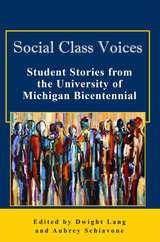 Social Class Voices: Student Stories from the University of Michigan Bicentennial
Edited by Dwight Lang and Aubrey Schiavone
Michigan Publishing, 2017 In Social Class Voices, forty-five University of Michigan undergraduate students and recent alumni explore the significance of social class in early 21st century America. They openly and honestly show how social class has shaped their lives, their changing identities, and conditions in their home communities. These writers – born to the working poor, working, middle, upper-middle, and upper classes – examine the effects of social class on their families, their kindergarten through high school experiences, as well as their undergraduate years at the University of Michigan in Ann Arbor. Using “sociological creative non-fiction” essays, they invite readers to engage, interpret, and imagine the power of social class in a society where economic differences are often overlooked. In exploring their pasts and personal experiences, they write powerful accounts of American college student life. We hear about the insecurities and challenges of growing up in poverty, increasing tensions of being born to the working and middle classes, and comforting certainties of upper-middle and upper class lives. In their stories we see connections between the personal and the social – a key sociological insight.
These writers explore social class heritages at a time when more and more Americans are recognizing economic inequality as a core structural problem facing millions, independent of individual effort and talent. They shed light on what is too often denied both on and off college campuses: social class. By their very nature these types of explorations are political.
In America, where economic differences frequently go unnoticed when discussing inequality, openly writing about one’s personal class experiences can be controversial. These University of Michigan students and alumni have the courage to make public how social class structures American life.
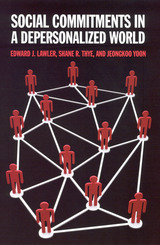 Social Commitments in a Depersonalized World
Edward J. Lawler
Russell Sage Foundation, 2009 As individuals' ties to community organizations and the companies they work for weaken, many analysts worry that the fabric of our society is deteriorating. But others counter that new social networks, especially those forming online, create important and possibly even stronger social bonds than those of the past. In Social Commitments in a Depersonalized World, Edward Lawler, Shane Thye, and Jeongkoo Yoon examine interpersonal and group ties and propose a new theory of social commitments, showing that multiple interactions, group activities and, particularly, emotional attachment, are essential for creating and sustaining alignments between individuals and groups. Lawler, Thye, and Yoon acknowledge that long-term social attachments have proven fragile in a volatile economy where people increasingly form transactional associations—based not on collective interest but on what will yield the most personal advantage in a society shaped by market logic. Although person-to-group bonds may have become harder to sustain, they continue to play a vital role in maintaining healthy interactions in larger social groups from companies to communities. Drawing on classical and contemporary sociology, organizational psychology, and behavioral economics, Social Commitments in a Depersonalized World shows how affiliations—particularly those that involve a profound emotional component—can transcend merely instrumental or transactional ties and can even transform these impersonal bonds into deeply personal ones. The authors study the structures of small groups, corporations, economic transactions, and modern nation-states to determine how hierarchies, task allocation, and social identities help or hinder a group's vitality. They find that such conditions as equal status, interdependence, and overlapping affiliations figure significantly in creating and sustaining strong person-to-group bonds. Recurring collaboration with others to achieve common goals—along with shared responsibilities and equally valued importance within an organization—promote positive and enduring feelings that enlarge a person's experience of a group and the significance of their place within it. Employees in organizations with strong person-to-group ties experience a more unified, collective identity. They tend to work more cost effectively, meet company expectations, and better regulate their own productivity and behavior. The authors make clear that the principles of their theory have implications beyond business. With cultures pulling apart and crashing together like tectonic plates, much depends on our ability to work collectively across racial, cultural, and political divides. The new theory in Social Commitments in a Depersonalized World provides a way of thinking about how groups form and what it takes to sustain them in the modern world.
Social Concertation in Times of Austerity: European Integration and the Politics of Labour Market Reforms in Austria and Switzerland
Alexandre Afonso
Amsterdam University Press, 2013 A term specifically found in European politics, social concertation refers to cooperation between trade unions, governments and employers in public policy-making. Social Concertation in Times of Austerity investigates the political underpinnings of social concertation in the context of European integration. Alexandre Afonso focuses on the regulation of labor mobility and unemployment protection in Austria and Switzerland, two of Europe’s most prosperous countries, and he looks at nonpartisan policymaking as a strategy for compromise. With this smart, new study, Afonso powerfully enters the debate on the need for a shared social agenda in post-crisis Western Europe.
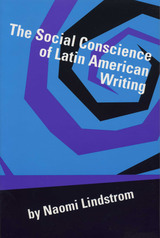 The Social Conscience of Latin American Writing
By Naomi Lindstrom
University of Texas Press, 1998 A CHOICE Outstanding Academic Book Literature in Latin America has long been a vehicle for debates over the interpretation of social history, cultural identity, and artistic independence. Indeed, Latin American literature has gained international respect for its ability to present social criticism through works of imaginative creation. In this comprehensive, up-to-the-minute survey of research and opinion by leading Latin American cultural and literary critics, Naomi Lindstrom examines five concepts that are currently the focus of intense debate among Latin American writers and thinkers. Writing in simple, clear terms for both general and specialist readers of Latin American literature, she explores the concepts of autonomy and dependency, postmodernism, literary intellectuals and the mass media, testimonial literature, and gender issues, including gay and lesbian themes. Excerpts (in English) from relevant literary works illustrate each concept, while Lindstrom also traces its passage from the social sciences to literature.
The Social Construction of American Realism
Amy Kaplan
University of Chicago Press, 1988 Kaplan redefines American realism as a genre more engaged with a society in flux than with one merely reflective of the status quo. She reads realistic narrative as a symbolic act of imagining and controlling the social upheavals of early modern capitalism, particularly class conflict and the development of mass culture. Brilliant analyses of works by Howells, Wharton, and Dreiser illuminate the narrative process by which realism constructs a social world of conflict and change.
"[Kaplan] offers some enthralling readings of major novels by Howells, Wharton, and Dreiser. It is a book which should be read by anyone interested in the American novel."—Tony Tanner, Modern Language Review
"Kaplan has made an important contribution to our understanding of American realism. This is a book that deserves wide attention."—June Howard, American Literature
The Social Construction of Expertise: The English Civil Service and Its Influence, 1919–1939
Gail Savage
University of Pittsburgh Press, 1996 The British created a system wherein the social identity of civil servants clearly influenced their position on official matters. This privileged class set the tone for major policy decisions affecting all members of society. Savage addresses this social construction of power by analyzing the social origins and career patterns of higher-level civil servants as a backdrop for investigating the way four different social service ministries formulated policies between the two World Wars: the Board of Education, the Ministry of Agriculture, the Ministry of Labour, and the Ministry of Health.
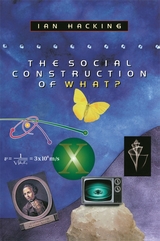 The Social Construction of What?
Ian Hacking
Harvard University Press, 1999 Lost in the raging debate over the validity of social construction is the question of what, precisely, is being constructed. Facts, gender, quarks, reality? Is it a person? An object? An idea? A theory? Each entails a different notion of social construction, Ian Hacking reminds us. His book explores an array of examples to reveal the deep issues underlying contentious accounts of reality.
Especially troublesome in this dispute is the status of the natural sciences, and this is where Hacking finds some of his most telling cases, from the conflict between biological and social approaches to mental illness to vying accounts of current research in sedimentary geology. He looks at the issue of child abuse—very much a reality, though the idea of child abuse is a social product. He also cautiously examines the ways in which advanced research on new weapons influences not the content but the form of science. In conclusion, Hacking comments on the “culture wars” in anthropology, in particular a spat between leading ethnographers over Hawaii and Captain Cook. Written with generosity and gentle wit by one of our most distinguished philosophers of science, this wise book brings a much needed measure of clarity to current arguments about the nature of knowledge.
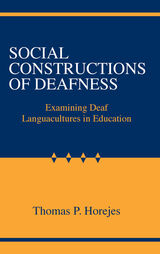 Social Constructions of Deafness: Examining Deaf Languacultures in Education
Thomas P. Horejes
Gallaudet University Press, 2012 Thomas P. Horejes’s new book focuses on revealing critical knowledge that addresses certain social justice issues, including deafness, language, culture, and deaf education. He conveys this information through discourses about his own experiences being deaf and through his research in which he “stresses the contingency of the social” in educational institutions.
In Social Constructions of Deafness: Examining Deaf Languacultures in Education, Horejes contends that schools as social institutions play powerful and exacting roles in the creation and maintenance of social constructions such as language and culture for deaf children. He subscribes to Michael Agar’s concept of “languaculture,” defined as the inextricable relationship between language and culture in which a specific language will shape and influence culture. His approach employs other anthropological terminology as he connects his personal experience as a deaf student (emic) to academic research on deafness (etic) to bring understanding to the multidimensional aspects of his own negotiated identities.
Horejes extends his inquiry through his analysis of two kindergarten classes for deaf students, one orally oriented and the other conducted using sing language. His findings are sobering evidence of the myriad challenges educators face in defining appropriate academic, linguistic, and cultural pedagogy for deaf children in schools and other social institutions.
Social Contract, Discourse on the Virtue Most Necessary for a Hero, Political Fragments, and Geneva Manuscript
Jean-Jacques Rousseau
Dartmouth College Press, 1994 Contains the Social Contract, as well as the first English translation of Rousseau’s early Discourse on the Virtue Most Necessary for a Hero, numerous previously untranslated political fragments, and the first draft of the Social Contract (the so-called Geneva Manuscript). By placing Rousseau’s famous exposition of “political right” and the “general will” in the context of his preparatory drafts, the editors provide significant insight into the formation of one of the most important and influential works in Western political thought.
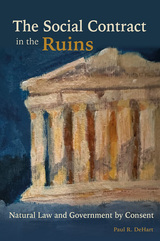 The Social Contract in the Ruins: Natural Law and Government by Consent
Paul R. DeHart
University of Missouri Press, 2024 Most scholars who write on social contract and classical natural law perceive an irreconcilable tension between them. Social contract theory is widely considered the political-theoretic concomitant of modern philosophy. Against the regnant view, The Social Contract in the Ruins, argues that all attempts to ground political authority and obligation in agreement alone are logically self-defeating. Political authority and obligation require an antecedent moral ground. But this moral ground cannot be constructed by human agreement or created by sheer will—human or divine. All accounts of morality as constructed or made collapse into self-referential incoherence. Only an uncreated, real good can coherently ground political authority and obligation or the proposition that rightful government depends on the consent of the governed. Government by consent requires classical natural law for its very coherence.
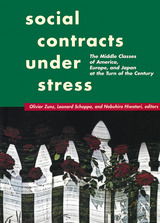 Social Contracts Under Stress: The Middle Classes of America, Europe, and Japan at the Turn of the Century
Olivier Zunz
Russell Sage Foundation, 2002 The years following World War II saw a huge expansion of the middle classes in the world's industrialized nations, with a significant part of the working class becoming absorbed into the middle class. Although never explicitly formalized, it was as though a new social contract called for government, business, and labor to work together to ensure greater political freedom and more broadly shared economic prosperity. For the most part, they succeeded. In Social Contracts Under Stress, eighteen experts from seven countries examine this historic transformation and look ahead to assess how the middle class might fare in the face of slowing economic growth and increasing globalization. The first section of the book focuses on the differing experiences of Germany, Britain, France, the United States, and Japan as they became middle-class societies. The British working classes, for example, were slowest to consider themselves middle class, while in Japan by the 1960s, most workers had abandoned working-class identity. The French remain more fragmented among various middle classes and resist one homogenous entity. Part II presents compelling evidence that the rise of a huge middle class was far from inclusive or free of social friction. Some contributors discuss how the social contract reinforced long-standing prejudices toward minorities and women. In the United States, Ira Katznelson writes, Southern politicians used measures that should have promoted equality, such as the GI bill, to exclude blacks from full access to opportunity. In her review of gender and family models, Chiara Saraceno finds that Mediterranean countries have mobilized the power of the state to maintain a division of labor between men and women. The final section examines what effect globalization might have on the middle class. Leonard Schoppa's careful analysis of the relevant data shows how globalization has pushed "less skilled workers down and more skilled workers up out of a middle class that had for a few decades been home to both." Although Europe has resisted the rise of inequality more effectively than the United States or Japan, several contributors wonder how long that resistance can last. Social Contracts Under Stress argues convincingly that keeping the middle class open and inclusive in the face of current economic pressures will require a collective will extending across countries. This book provides an invaluable guide for assessing the issues that must be considered in such an effort.
Social Control and Social Change
Edited by John Paul Scott and Sarah F. Scott
University of Chicago Press, 1971 Social Control and Social Change is a unique and timely attempt to understand and elaborate the process of social control. An interdisciplinary study from the Center for Research on Social Behavior at Bowling Green University, this book develops some general theories of social control as it exists in human and nonhuman societies and indicates areas in which important new research can be done. The authors present not only theoretical discussions of the various aspects of control processes—biological, political, psychological, social, and social-psychological—but also include detailed research and indicate practical applications of the newer scientific perspectives of social control.
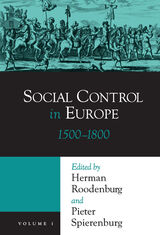 Social Control in Europe: Volume 1, 1500–1800
Herman Roodenburg and Pieter Spierenburg
Ohio State University Press, 2004 This first volume of a two-volume collection of essays provides a comprehensive examination of the idea of social control in the history of Europe. The uniqueness of these volumes lies in two main areas. First, the contributors compare methods of social control on many levels, from police to shaming, church to guilds. Second, they look at these formal and informal institutions as two-way processes. Unlike many studies of social control in the past, the scholars here examine how individuals and groups that are being controlled necessarily participate in and shape the manner in which they are regulated. Hardly passive victims of discipline and control, these folks instead claimed agency in that process, accepting and resisting—and thus molding—the controls under which they functioned. The essays in this volume focus on the interplay of ecclesiastical institutions and the emerging states, examining discipline from a bottom-up perspective.
 Social Control in Europe: Volume 2, 1800–2000
Clive Emsley, Eric Johnson, and Pieter Spierenburg
Ohio State University Press, 2004 This second volume of a two-volume collection of essays provides a comprehensive examination of the idea of social control in the history of Europe. The uniqueness of these volumes lies in two main areas. First, the contributors compare methods of social control on many levels, from police to shaming, church to guilds. Second, they look at these formal and informal institutions as two-way processes. Unlike many studies of social control in the past, the scholars here examine how individuals and groups that are being controlled necessarily participate in and shape the manner in which they are regulated. Hardly passive victims of discipline and control, these folks instead claimed agency in that process, accepting and resisting—and thus molding—the controls under which they functioned.
The essays in this volume explore the various means by which communities in nineteenth- and twentieth-century Europe were subjected to forms of discipline, noting how the communities themselves generated their own forms of internal control. In addition, the essays discuss various policing institutions, exploring in particular the question of how liberal and totalitarian regimes differed in their styles of control, repression, and surveillance.
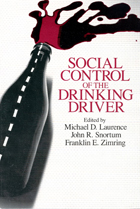 Social Control of the Drinking Driver
Edited by Michael D. Laurence, John R. Snortum, and Franklin E. Zimring
University of Chicago Press, 1988 Drunken driving is the most serious crime likely to be committed by an adult. Each year in the United States it is responsible for approximately 20,000 fatalities, more than 500,000 arrests, and millions of violations. It involves a wider variety of social classes and economic strata than any other major violation of the law. Only recently, however, has the problem of alcohol and traffic safety received attention as a public policy issue.
Social Control of the Drinking Driver lays the groundwork for a much needed integration of methods, principles, and priorities. Law, criminology, biology, psychology, sociology, economics, public policy—the disciplines concerned with the problem of drinking and driving are many and varied, and research crosses national boundaries as well. It is not surprising, therefore, that an integrated general perspective has not yet emerged. Drawing on fourteen specialists and surveying the situations in nine countries, this book presents a comprehensive statement of current knowledge about drunken driving and its control.
Social Controversy and Public Address in the 1960s and Early 1970s: A Rhetorical History of the United States, Volume IX
Richard J. Jensen
Michigan State University Press, 2017 The period between the 1960s and 1970s is easily one of the most controversial in American history. Examining the liberal movements of the era as well as those that opposed them, this volume offers analyses of the rhetoric of leaders, including those of the civil rights movement, the Chicano movement, the gay rights movement, second-wave feminism, and conservative resistance groups. It also features an introduction that summarizes much of the significant research done by communication scholars on dissent in the 1960s and 1970s. This time period is still a fertile area of study, and this book provides insights into the era that are both provocative and illuminating, making it an essential read for anyone looking to learn more about this time in America.
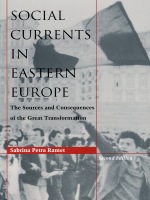 Social Currents in Eastern Europe: The Sources and Consequences of the Great Transformation
Sabrina P. Ramet
Duke University Press, 1994 Social Currents in Eastern Europe traces the diverse social currents that have developed alongside and interacted with political and economic forces to bring about change in Eastern Europe. In this second edition—which significantly updates and expands the previous edition to include a new introduction, revisions throughout, as well as five new chapters, including timely material on ethnic war in the former Yugoslavia—Ramet extends and develops the theory of social change upon which the book is based.
Ramet draws on interviews conducted over a ten-year period with individuals active in arenas for social change—intellectual dissent, feminism, religious activism, youth cultures and movements, and trade unionism—in eight East European countries: East Germany, Poland, Czechoslovakia, Hungary, Yugoslavia, Romania, Bulgaria, and Albania. She shows how the processes leading to the ultimate collapse of communism began more than a decade earlier and how they were necessarily manifested in spheres as diverse as religion and rock music.
Ramet also examines the consequences of the "Great Transformation" and analyzes the numerous unresolved problems that these societies currently confront, whether it be in the arena of economics, political legitimation, or the challenges of establishing a civil society free of chauvinism.
Social Darwinism: Science and Myth in Anglo-American Social Thought
Robert C. Bannister
Temple University Press, 1989 "The most systematic and comprehensive effort yet made to assess the role played by Darwinian ideas in the writings of English-speaking social theorists of the late-nineteenth and early-twentieth centuries."
--Isis
"In seeking to set the record straight, Bannister cuts through the amalgam with an intellectual shredder, exposing the illogic and incompatibility involved in fusing Charles Darwin's On the Origin of Species with Herbert Spencer's Social Statics.... Bannister's familiarity with relevant texts and their reception by contemporary social theorists, scholars, and critics on both sides of the Atlantic is impressive."
--Journal of Interdisciplinary History
"A fine contribution to Anglo-American intellectual history."
--Journal of American History
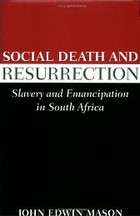 Social Death and Resurrection: Slavery and Emancipation in South Africa
John Edwin Mason
University of Virginia Press, 2003 What was it like to be a slave in colonial South Africa? What difference did freedom make?
The questions themselves are simply put, but John Edwin Mason has found complex answers after delving deeply into the slaves' experience within the slaveholding patriarchal household, the work that slaves performed, the families they created, and the religions they practiced. Grounding his analysis within the context of South Africa's incorporation into the British Empire--primarily examining the period of 1820-50--Mason investigates a wealth of documentation from the British Colony of the Cape of Good Hope. Colonial officials, particularly the slave protectors, created and preserved a rich archive within which the voices of slaves and slaveholders, free blacks, and poor whites are recorded, and from which Mason presents vividly descriptive and telling accounts of slave life.
In Social Death and Resurrection Mason draws upon Harvard sociologist Orlando Patterson's theory that a slave's social degradation rendered him socially dead. "Social death" defined slavery in the ideal, slavery as it would have been had the slaves played along. But in colonial South Africa slaves did not play along: they fought the lash and resisted domination, retaining a cultural and moral community of their own. Mason investigates the subsequent "resurrection" of slaves following their successful struggle to preserve family, faith, community ties, and human dignity, despite their class domination and racial subjugation by slaveowners.
Although slavery officially came to an end with a series of reforms during a mid-nineteenth-century period of modernization and reform, the British colonial state's commitment to formal equality was in fact compatible with continued class domination. As a result, slaves did not entirely cease to be slaves, but through their own efforts and some governmental assistance, they achieved at least a partial victory over slavery's violence, marginalization, and degradation
--------------------------------------------------------------------------------
John Edwin Mason is Associate Professor of History at the University of Virginia.
Social Democracy in Manitoba: A History of the CCF/NDP
Nelson Wiseman
University of Manitoba Press, 1983 In this volume, Nelson Wiseman skilfully describes the history of the New Democratic Party in Manitoba, tracing the roots of the social democratic movement to the years of mass immigration and social unrest that preceded the Winnipeg General Strike in 1919.Drawing extensively on personal interviews, on the private papers and correspondence of party leaders and activists, and on archival materials, Wiseman portrays clearly the party's philosophy and leadership, its organization and inner workings, its electoral support, and its relations with other parties, with labour, and with farmers.
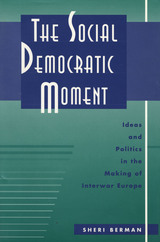 The Social Democratic Moment: Ideas and Politics in the Making of Interwar Europe
Sheri Berman
Harvard University Press, 1998 In addition to revising our view of the interwar period and the building of European democracies, this book cuts against the grain of most current theorizing in political science by explicitly discussing when and how ideas influence political behavior. Even though German and Swedish Social Democrats belonged to the same transnational political movement and faced similar political and social conditions in their respective countries before and after World War I, they responded very differently to the challenges of democratization and the Great Depression--with crucial consequences for the fates of their countries and the world at large.
Explaining why these two social democratic parties acted so differently is the primary task of this book. Berman's answer is that they had very different ideas about politics and economics--what she calls their programmatic beliefs. The Swedish Social Democrats placed themselves at the forefront of the drive for democratization; a decade later they responded to the Depression with a bold new economic program and used it to build a long period of political hegemony. The German Social Democrats, on the other hand, had democracy thrust upon them and then dithered when faced with economic crisis; their haplessness cleared the way for a bolder and more skillful political actor--Adolf Hitler.
This provocative book will be of interest to anyone concerned with twentieth-century European history, the transition to democracy problem, or the role of ideas in politics.
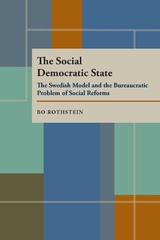 The Social Democratic State: The Swedish Model and the Bureaucratic Problem of Social Reforms
Bo Rothstein
University of Pittsburgh Press, 1998
The Swedish Social Democratic Party, the SAP, is the most successful social democratic party in the world. It has led the government for most of the last six decades, participating either alone or as the dominant force in coalition government. The SAP has also worked closely with trade unions that have organized nearly 85 percent of the labor force, the highest rate among the advanced industrial democracies. Rarely has a political party been so dominant or so closely linked to labor movement. Yet Sweden remains very much a capitolist society with economic and social power firmly in the hands of big capitol.
If one wants to know if politics, and most especially if reformist politics, matters - if, that is, political mobilization can change democratic capitolists societies - then Sweden under the Social Democrats is clearly one of the best empirical cases to study.
Bo Rothstein uses the Swedish experience to analyze the limits a social democratic government labors under and the possibilities it enjoys in using the state to implement large-scale social change. He examines closely two SAP programs, one a success and the other a failure, that attempted to change social processes deeply embedded in capitolist society. He ties the outcomes of these programs to the structure of the state and hypothesizes that the outcome depends, to a considerable extent, on how administrative apparatuses responsible for implementing each policy are organized. Rothstein concludes that no matter how wisely a reformist policy is designed nor how strong the political party behind it, if the administrative arrangements are faulty, it will fail at the stage of implementation.
Rothstein convincingly demonstrates that the democratic capitolist countries of the world have important lessons to learn from the Swedish experience regarding the possibilities for political reform. Political scientists and political reformers alike can learn much from Rothstein’s deep knowledge of Swedish government and his innovative model for analyzing political reform in social democratic societies.
Social Diagnosis
Mary Ellen Richmond
Russell Sage Foundation, 1917 Social Diagnosis is the classic in social work literature. In it Miss Richmond first established a technique of social casework. She discusses the nature and uses of social evidence, its tests and their practical application, and summarizes the lessons to be learned from history, science, and the law. While other aids in diagnosis have been added to the caseworker's equipment, the assembling of social evidence is still an important discipline of the profession, to which this volume continues to make a significant contribution. No revision of the book has ever been made nor does any later book take its place.
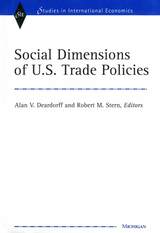 Social Dimensions of U.S. Trade Policies
Alan V. Deardorff and Robert M. Stern, Editors
University of Michigan Press, 2000 The contributors to this volume include numerous members of the trade policy community who analyze and discuss the salient social dimensions of U.S. trade policies. These issues include the effects of trade on wage inequality; trade and immigration policy; U.S. trade adjustment assistance policies; the effects of NAFTA on environmental quality; the role of labor standards in U.S. trade policies; the economics of labor standards and the GATT; issues of child labor; and the role of interest groups in the design and implementation of U.S. trade policies.
Chapter authors are Kyle Bagwell, Claude Barfield, George J. Borjas, Drusilla K. Brown, Alan V. Deardorff, Nancy Dunne, Gary S. Fields, John Kirton, Mike Jendrzejczyk, Phyllis Shearer Jones, Edward E. Leamer, Robert Naiman, Gregory K. Schoepfle, Robert W. Staiger, and Robert M. Stern.
Commenters are Steve Beckman, Jagdish Bhagwati, Alan V. Deardorff, Avinash Dixit, Pharis Harvey, David van Hoogstraten, John H. Jackson, Lawrence Mishel, Jack Otero, J. David Richardson, Dani Rodrik, Mark Silbergeld, and T. N. Srinivasan.
Alan V. Deardorff and Robert M. Stern are Professors of Economics and Public Policy, University of Michigan.
The Social Documentary in Latin America
Julianne Burton
University of Pittsburgh Press, 1990 Twenty essays by major filmmakers and critics provide the first survey of the evolution of documentary film in Latin America. While acknowledging the political and historical weight of the documentary, the contributors are also concerned with the aesthetic dimensions of the medium and how Latin American practitioners have defined the boundaries of the form.
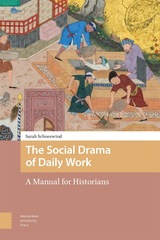 The Social Drama of Daily Work: A Manual for Historians
Sarah Schneewind
Amsterdam University Press, 2024 Part manifesto, part manual, this book offers historians of all levels both subject and approach. The subject is work. In every place-time people made and sold objects – and struggled with annoying customers or government regulation. They healed clients – and wanted to bolster their prestige and keep out interlopers. Studying work allows historians to delve into the experiences of non-elite groups using texts, images, or objects. The wide-ranging approach is based on the Chicago-school sociology of occupations, which starts from the premise that work isn’t just a job: it’s a drama created by people making decisions that shape and are shaped by their place-time. Packed with examples from Ming Chinese apothecaries to twentieth-century New York City doormen, this book is a must for those who want to enliven their study of the past by examining how people spent most of their days and lives: at work.
|
|

